SPORTS COLISEUM
PROMOTIONAL HUB FOR ETHNIC SPORTS In North East India
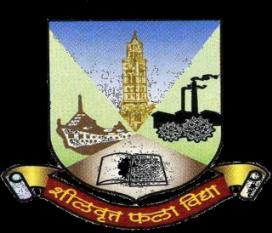 By TEHREEM SHAIKH MOHD YUNUS 17AR33
By TEHREEM SHAIKH MOHD YUNUS 17AR33
A REPORT
Submitted in partial fulfillment of the requirements for the degree of Bachelor of Architecture. 2022
Copyright © TEHREEM SHAIKH MOHD YUNUS 2022

CERTIFICATE
This is to certify that the Design Dissertation titled
SPORTS COLISEUM is the bona fide work of the student TEHREEM SHAIKH from Final Year B. Arch of AIKTC School of Architecture and was carried out in college under my guidance.
Sign of the guide:
Name of the guide: Ar. PARAG RAWOOL

Sign of the Dean:
Date: 20/10/2022
DECLARATION
I hereby declare that this written submission entitled “SPORTS COLISEUM”
represents my ideas in my own words and has not been taken from the work of others (as from books, articles,essays,dissertations,othermediaandonline);andwhereothers’ideasorwordshavebeenincluded, I have adequately cited and referenced the original sources. Direct quotations from books, journal articles, internet sources, other texts, or any other source whatsoever are acknowledged and the source cited are identified in the dissertation references.
No material other than that cited and listed has been used.
I have read and know the meaning of plagiarism and I understand that plagiarism, collusion, and copying are grave and serious offenses in the university and accept the consequences should I engage in plagiarism, collusion or copying.
I also declare that I have adhered to all principles of academic honesty and integrity and have not misrepresented or fabricated or falsified any idea/data/fact source in my submission.
This work, or any part of it, has not been previously submitted by me or any other person for assessment on this or any other course of study.
Signature of the Student:
Name of the Student: TEHREEM SHAIKH Roll No: 17AR33
Date: Place: AIKTC SOA
ACKNOWLEDGEMENT
ALHAMDULILLAH.
Before anything else, I want to express my gratitude to the ultimate power, the Almighty God, for showering his favour upon me and directing my steps down the road of righteousness throughout my life.
Thanks to everyone's advice and help, the project turned out well. With the completion of my assignment, I am fortunate to have received this bonus. I appreciate everyone's patience and hard work in making this happen for me.
I'd want to use this occasion to express my gratitude to my advisor, Prof. PARAG RAWOOL, who helped me during the whole of my thesis and was always a source of support and encouragement. Thanks to his careful monitoring, continual encouragement, and perceptive assistance, the development process has progressed smoothly. Without his guidance and input, this report would not be nearly as complete as it is now.
I owe a great debt of gratitude to my dean, Prof.Raj Mhatre and Prof.Poonam Mhatre,and prof. Prajakta Wadwalkar whose counsel, encouragement, and support have been invaluable to me.
I consider myself very fortunate to have family members that are interested in and enthusiastic about our endeavour, especially my MOM and DAD. Without their help, I wouldn't have been able to complete the tasks in time.
In closing, I would like to express my deep appreciation to my friends Ayesha Abid, Divya Vishwakarma, and Arib Tatli for their unending encouragement and emotional support, because without it I wouldn't have been able to complete this project to the level of excellence that it has reached.

1. ABSTRACT
The intention of this dissertation is to promote north east Indian traditional sports by identifying the relationship between the significance of body movement, social interaction, and cultural identity that is facilitated by a space for sports and the lack of sports infrastructure in north east india. This study is part of a wider research project named "Promotion of North East Indian Traditional Sports," which focuses on revitalising northeastern traditional sports via design and the creation of a specialised venue. This research focuses on the lack of infrastructure in north east India and how it may help athletes who must go to another state for sporting facilities.This study has two main purposes. First, the research will identify how north east india is lacking in sports infra structure and how it can overcome to it. The second goal is to make the present generation aware of Indian traditional games and their relevance so they would play them instead of virtual reality games. This paper examines prospective future sporting venues. The intention is to aim to promote, display, and develop traditional Northeast Indian sports. This prevents these sports from merging with contemporary society. The initiative aims to safeguard, sustain, and disseminate India's traditional sports by merging research, alternative solutions, and design.
“India will be successful when UP, Bihar, West Bengal, Assam and other parts of North East India are strengthened. India cannot develop till the eastern part of the country develops.”………………… PM OF INDIA NARENDRA MODI
Fig.1 Indian Sports
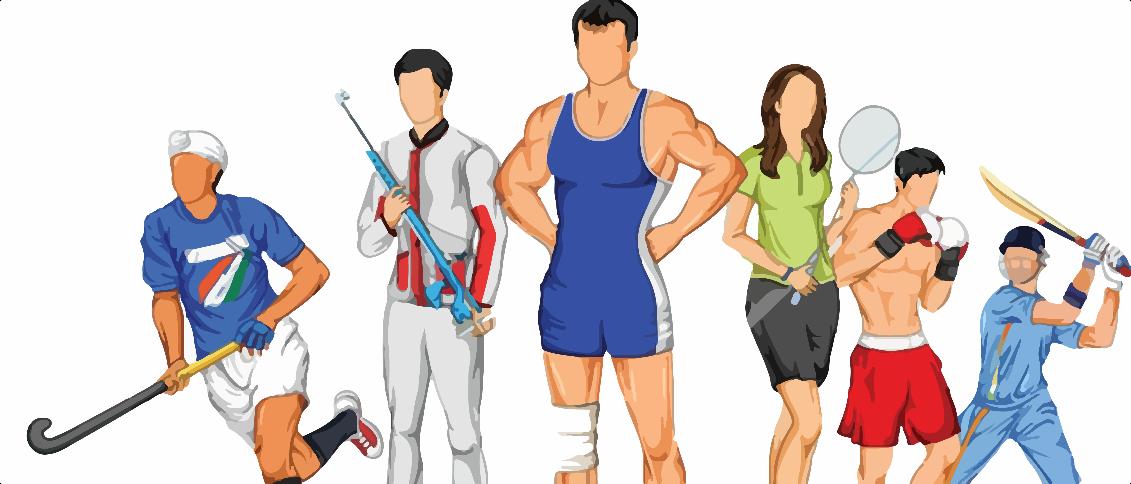
(Source: 123rf Photos)
KEY WORDS: social interaction, cultural identity, Northeast Indian sports, body movement, promote
SPORTS COLISEUM Page | 6
SPORTS COLISEUM Page | 7 2. TABLE OF CONTENT 1 ABSTRACT………………………………………………………………………...….6 2. TABLE OF CONTENT………………………………………………………………..7 3. DESCRIPTIONS AND CHARACTERIZATIONS 9 4. INTRODUCTION…………………………………………………………..………..11 4.1 BACKGROUND STUDY…………………………………………………….…….14 4.1 A SPORTS IN INDIA………………………………………………………… 15 a) What is Sports…………………………………………………………………...15 b) History of Sports in India……………………………………………………..…16 c) Importance of Sports……………………………………………………….. 18 d) Diminishing Sports, Why ?............................. ..22 e) Sports In India Before&After Independence…………………………….. 23 Ministry of youth affairs and sports. Sports Authority Of India. Khelo India. f) Study Area and Selection Criteria………………………………………………27 4.1.B NORTH EAST INDIA……………………………………………………….......30 a) Introduction…………………………………………………………………… 30 b) History of Sports in North East India……………………………………… 31 c) Rising Athletes of North East India……………………………………… 33 d) Current Issues faced …………………………………………………………....35 4.2 HYPOTHESIS………… .....37 4.3 JUSTIFICATION OF TOPIC………………………………… ,39 Aim………………………………………………………………………...40 Objective…………………………………………………………………..40 Scope……………………………………………………………… …40 Limitation……………………………………………………… ….40 4.4 RESEARCH METHODOLOGY………………………………………………..…41 5. LITERATURE REVIEW 1……………………………………………………...…43 a) INDIGENOUS GAMES AND MARTIAL ARTS (IGMA)………………...44 b) DISCIPLINES THAT FALL UNDER IGMA…………………… …..45 c) CATEGORIZATION OF VARIOUS INDIGENOUS SPORTS OF DIFFERENT STATES .…………………….46 d) ARTICLES SUPPORTING THE TOPIC……………………………………….47
SPORTS COLISEUM Page | 8 I. QUESTIONNAIRE AND RESULTS………………………………………...47 6. LITERATURE REVIEW 2……………………………………………………………56 6.1 CASE STUDIES………………………………………………………………………57 SHREE SHIV CHHATRAPATI SPORTS COMPLEX, BALEWADI………………57 ARMY SPORTS INSTITUTE, PUNE………………………………………..70 ANDHERI SPORTS COMPLEX ..74 GOREGAON SPORTS CLUB………………………………………………..82 INDIRA GANDHI SPORTS ARENA, NEW DELHI………………………………..86 AUSTRALIA SPORTS INSTITUTE, NEW SOUTH WALES………………………90 THE CRYSTAL SPORTS AND CULTURE HOUSE, DENMARK………………...94 THE ABERDEEN SPORTS VILLAGE, SCOTLAND………………………………97 6.2 CASE STUDIES INFERENCES……………………… .100 6.3 COMPARATIVE ANALYSIS OF CASE STUDIES……………………………….102 7 DESIGN RESEARCH………………………………………………………………..103 7.1 STANDARDS AND DATA COLLECTION……………………………………….104 8. TENTATIVE ARCHITECTURAL PROGRAM…………………………………….112 9. SITE SELECTION AND JUSTIFICATION………………………………………...118 a) ABOUT 120 b) SITE LOCATION………………………………………………….120 c) SITE JUSTIFICATION……………………………………………121 d) SITE AREA………………………………………………………..121 e) PROPOSED LAND USE………………………………………….122 10. DESIGN BRIEF…………………………………………………………………...123 12. BIBLOGRAPHY…………………………………………………………………..124 11. LIST OF FIGURES………………………………………………………………..126
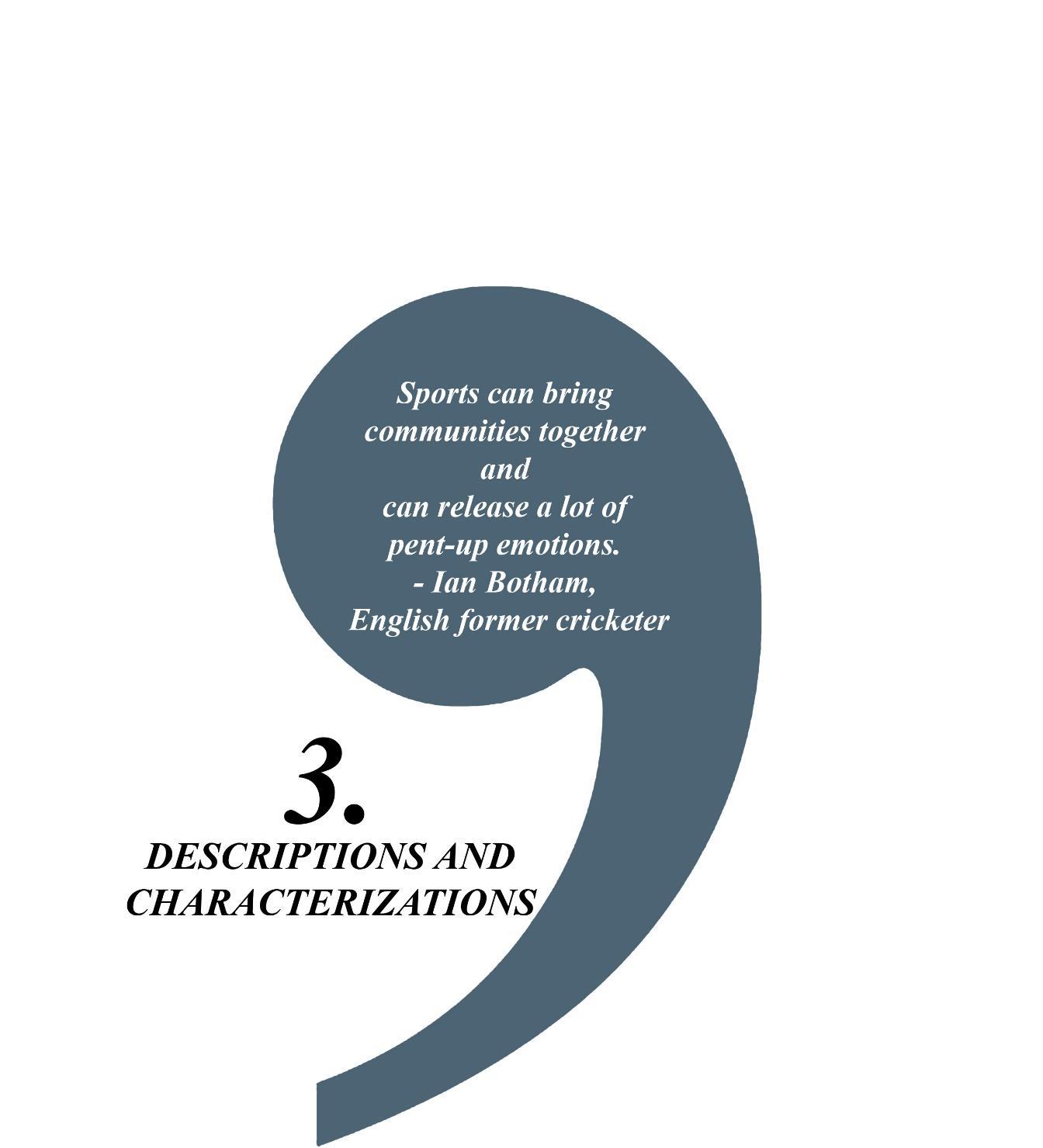
SPORTS COLISEUM Page | 9
3. DESCRIPTIONS AND CHARACTERIZATIONS
SPORTS An endeavour that requires both mental and physical effort, and is carried out in accordance with certain guidelines.
SPORTS AUTHORITY OF INDIA (SAI)- is the supreme governing organisation for sports in India. It was created in 1984 by the Ministry of Youth Affairs and Sports of the Government of India with the purpose of fostering the growth of sports in the country.
MINISTRY OF YOUTH AFFAIRS AND SPORTS a department under the government of India that is responsible for managing both the Department of Youth Affairs and the Department of Sports in that country.
KHELO INDIA Khelo India aspires to improve India's sports culture at the grassroots level via talent discovery, organised contests, and infrastructure development. Prime Minister Narendra Modi, Sports Ministers Vijay Goel and Rajyavardhan Singh Rathore inaugurated the initiative in 2017 18.
SPORTS COMPLEX is a collection of different athletic venues. Stadiums for track and field, football, and baseball, as well as swimming pools and gymnasiums, are all examples of facilities that fall under the category of "sportszone."
ARENA the enclosing of a space for the purpose of exhibiting sports and other spectacles to an audience.
ATHLETIC CENTRE-is a collection of different athletic venues.
LEISURE- liberation from the obligations of one's employment or duties.
STADIUM A big building used for sporting events that is often open on all sides and has tiered seating for spectators.
SPORTS COLISEUM Page | 10
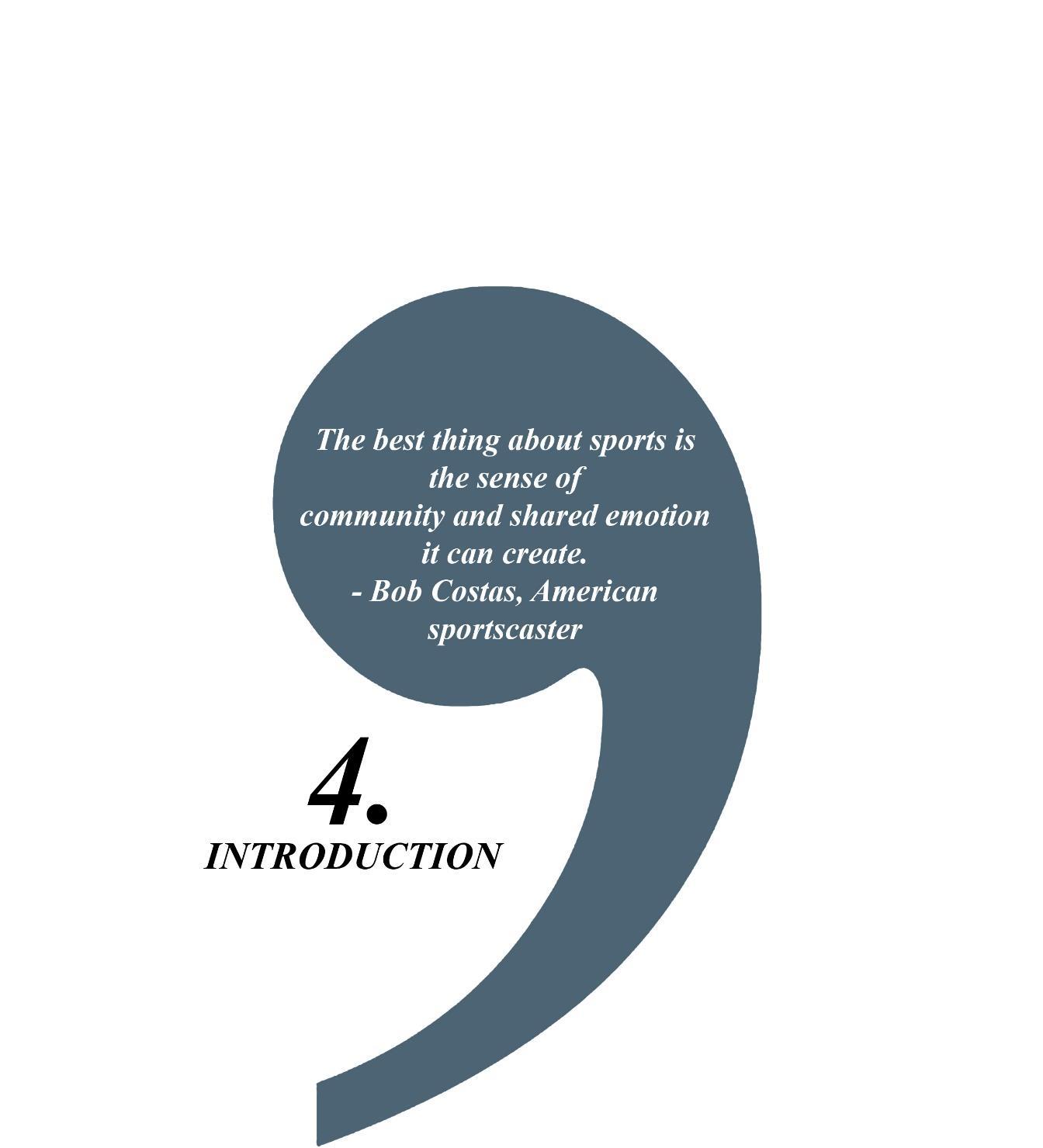
SPORTS COLISEUM Page | 11
4. INTRODUCTION
When it comes to the population of any nation that is involved in the realm of sports, the youth are the sector that represents the greatest vitality and energy. India is one of the youngest countries in the world, with over 65 percent of its population falling in the under 35 age bracket. Youth make up 27.5% of India's total population and fall within the age range of 15 29 years old. By the year 2020, it is anticipated that the average age of India's population would have reached a median of 28 years. The energy of this big group need to be channelled, and the central and state governments need to give them with the suitable infrastructure that meets the acceptable criteria so that they may succeed in the area of sports at both the national and international levels.
Many different civilizations have created their own indigenous ways of engagingin physical activityandhavingpositivesocialinteractionsviatheuseofawidearrayoftraditionalsports and activities. These traditional sports are an important part of social and cultural life, and they have their origins in the Indian heritage. Evidence of these sports can be found in the archaeological excavations of Harappa and Mohenjodaro, in the Vedic literature, the Mahabharata and the Ramayana, in the literary works of Dandin, Panini, Kalidasa, and Kautilya, as well as in Jain and Buddhist scriptures. The playing of traditional sports and games was formerly considered an extremely important part of a person's overall education as well as the growth and development of their personality and conduct.The country of India is home to a wide variety of age old and locally developed sports, many of which have contributed to the multifaceted and well rounded growth of both individuals and society as a whole. These kinds of activities have cultural importance in many parts of the globe, in addition to offeringa varietyof other advantages that are beneficial to an individual's overall welfare. Traditional sports and games are those games within a society that people have played for many generations because participation in these kinds of games and sports gives them the opportunity to practise something that has meaning within their society. This is because traditional sports and games give people the opportunity to practise something that has meaning within their society. The majority of these games are tied to many aspects of life including religion, the celebration of various holidays, employment, community life and interaction, family life, and even birth and death. For the sake of the continued growth of sports, people, and communities in the future, these traditional sports and games need to be elevated and preserved as examples of sporting practises and intangible cultural assets respectively. Traditional sports are losing their identity in the eyes of society because there is not the right sort of platform to promote and grow the kind of sports that they are.
The goal of this research is to analyse and get a better knowledge of the myriad of varied criteria and reasons that ethnic development centres have. The people who live in the northern and eastern areas have just as many different backgrounds. After Africa, India has the world's second largest number of individuals who identify as belonging to a cultural group. According to the census that was carried out in India in the year 2011, the total population of indigenous cultures amounts to 10.4 crores, which is equivalent to around
SPORTS COLISEUM Page | 12
8.6%ofthetotalpopulationofthecountry.Becausetheindigenous andmorebarbaricpeople of the Indian subcontinent were neither eradicated nor completely assimilated by the growingcivilizationoverthecourseofhistory,the conceptof"tribes"isespeciallyconfusing in the Indian subcontinent. This is due to the fact that the indigenous people of the region were not wiped out by the expanding civilization. More than 314 diverse indigenous tribes call India home as their homeland. Their rituals, practises, and beliefs, as well as, most significantly, the harmony with which they live with the natural environment that surrounds them, are what distinguish them from other people. This harmony allows them to coexist in harmony with the natural environment. Their manner of life is a well balanced process of "giving and taking," which is in accordance with the natural equilibrium of their immediate environment. This allows them to live in harmony with the natural environment.
Customs and rituals that are deeply ingrained in traditions are gradually transitioning into a form that is more modernised as a result of adaptation to modern ways of living and altered patterns of lifestyle. This is happening as a direct result of adaptation to modern ways of livingandaltered lifestylepatterns. Becauseofthis process, themoretraditionalcomponents of north east Indian tradition are progressively morphing into a form that is more aligned with contemporary sensibilities. One of the reasons for this is that educated natives in the area try not to use their native tongue as much as they can, even in their own homes. This is one of the causes. In certain cases, politically significant decisions were made without outsideinfluence. havedriventhediversecommunitiesto moveorseek refugein otherareas. Aside from this, one of the platforms that has been utilised to compare the urbanised world and themselves is architecture.
This research serves as the basis for the design strategy and conceptual ideas that will be used for a Traditional Sports Development Centre, which are generated from this study.
SPORTS COLISEUM Page | 13
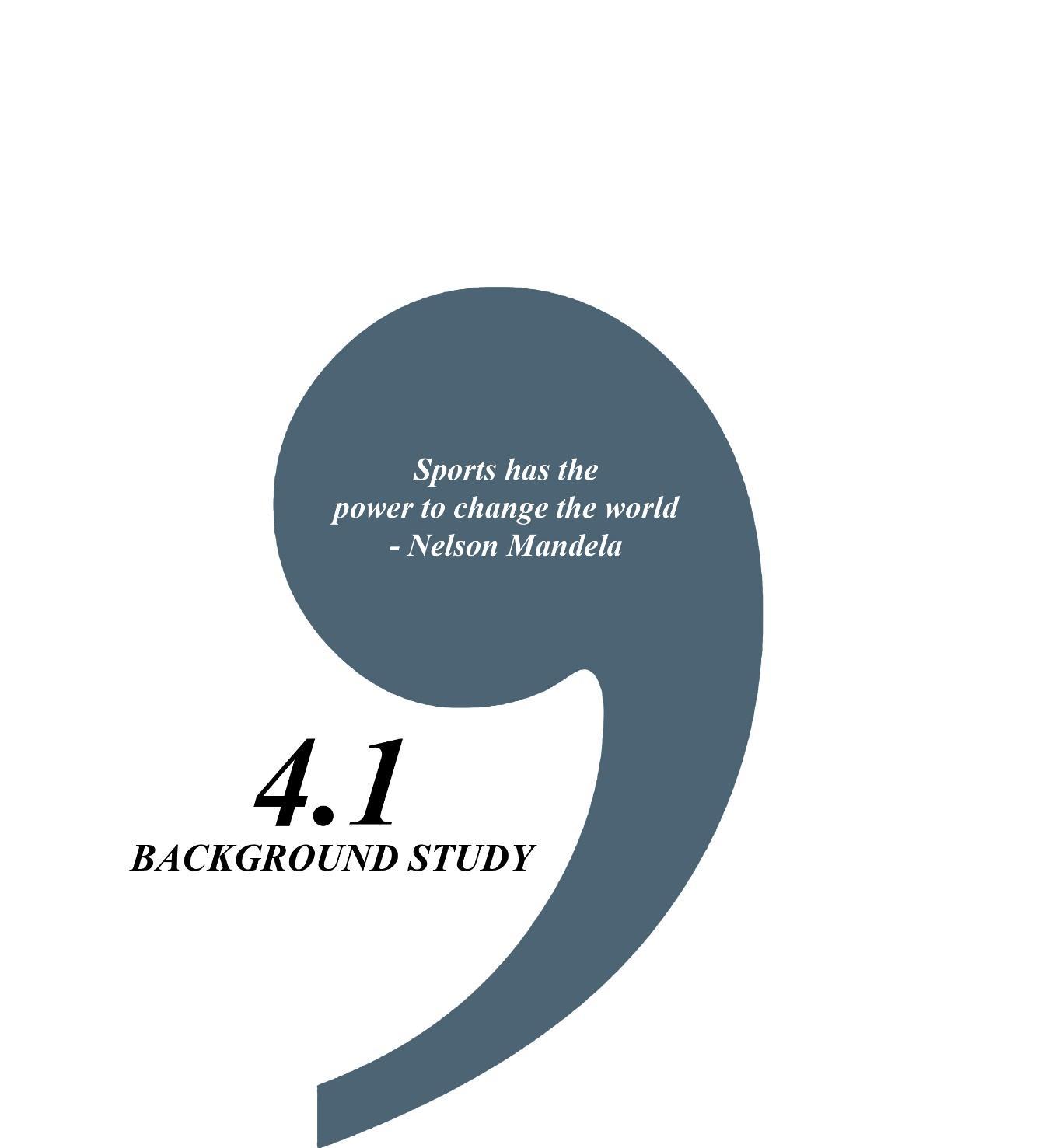
SPORTS COLISEUM Page | 14
4.1 BACKGROUND STUDY
4.1.A SPORTS IN INDIA
A. What is Sports
All competitive physical activities, whether informal or organised, that attempt to utilise, maintain, or enhance physical ability and skills while entertaining players and, in some circumstances, spectators, are considered sports. The term "sports" is frequently used to describe activities where a competitor's physical prowess is the only or primary factor in the outcome (winning or losing), but it is also used to describe activities like mind sports and motor sports where mental acuity or equipment quality play a significant role.
Every culture, whether ancient and modern, has its own concept of what sports are. Depending on the amount of physical exertion, the term "sports" may be used to refer to any competitive activity in which offence and defence are played. Sport entails some form of physical activitythatinvolvesmovingthebodyacrossspacewhilealsousingcalories.Sports conjure us images of perspiration and physical weariness. Sport improves the body component employed in the sport by exercising it throughout the physical activity.
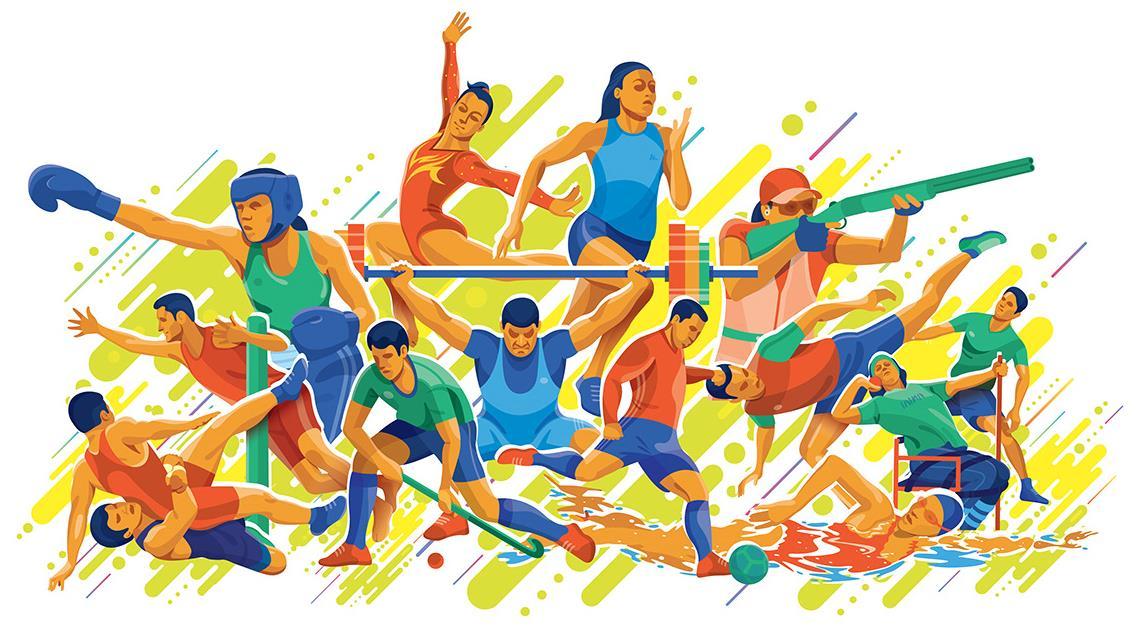
Fig.2 Sports Played In India
(Source : Khelo India Illustration)
Because sports are supervised by a set of regulations and rules, some behaviours are punished while others are praised if they occur when an athlete is competing in a particular sport. These standards have been decided upon in advance and, in most cases, have not undergone any major revisions in a considerable number of years. Sport, like electronic games, deters cheating (viewing such behaviour as cheating to run completely contrary to the reason for play the activity).
SPORTS COLISEUM Page | 15
The majority of individuals participate in sports either because they find the activity enjoyableor becausetheyrecognise theneed of regularphysical activityforthemaintenance of a healthy body. Even if they don't come out on top every time, athletes are expected to demonstrate exemplarysportsmanship byadheringto established behavioural norms such as respecting their opponents and the officials who officiate the game, as well as praising the winner even when they come out on the losing end.
B. History of Sports in India
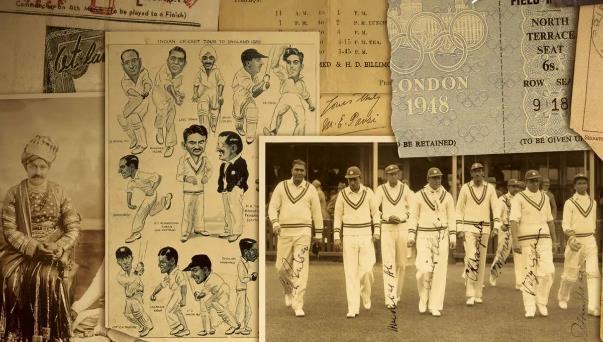
Historyof sports in India It is thought that Indian sports have existed since the Indus Valley civilization, about 8000 years ago. Many pieces of evidence point to the possibility that the Indus people devised dice and played an early version of chess. Along with playing cards, judo, karate, and other traditional sports and activities, India is also where many of them originated. Both India and Greece, where the Olympic Games were initially held, had a fondness for chariot racing and wrestling about 975 B.C. Dehvada, also known as the body way, is referred to in Vedic India as "one ofthe routesto complete realisation."Thepowerful men of the Rig Veda, the Ramayana, and the Mahabharata honed their skills in chariot racing, archery, riding, military strategy, wrestling, weightlifting, swimming, and hunting.
Fig.3 History Of Indian Sports
(Source: Kreed On Sports In India)
SPORTS COLISEUM Page | 16
Fig.4 Ancient Sports Played In India
(Source: Kreed On Sports In India)
The advent of Buddhism led to a level of success in Indian sports that had never been seen before. Oneofthecharactersin Villas Mani, Tiruvedacharya,describes avarietyof activities that seem like they might be a lot of fun. The competitions include of equitation, hammer throwing, chariot racing, and archery respectively. Someshwar discusses Bhrashram (also knownasmodernweightlifting),Bhramanshram (alsoknownasmodernwalking),andMall Stambha during the time of Manas Olhas (1135 A.D.). Bhrashram is also known as modern weightlifting (wrestling). It is clear to see that the Olympic games are just upgraded versions of the traditional Indian sports that have been there for decades now. This is something that can be seen today. It is believed that India was the birthplace of a number of different sports, including hockey, chess, polo, wrestling, and archery, to name just a few. Archeryis another popular sporting activity.
There is mention of the strategy board game chess in the authoritative texts of the Jain religion. On the Nalanda campus, chess was a popular game that was often played. During archaeological excavation carried out at monasteries and other Buddhist locales, the remains of dice that were used in gambling have been uncovered. Swimming was another enjoyable pastime that could be done for enjoyment. The Viharas included their own own private swimming pools. The Jataka stories include a few allusions to the practise of archery.
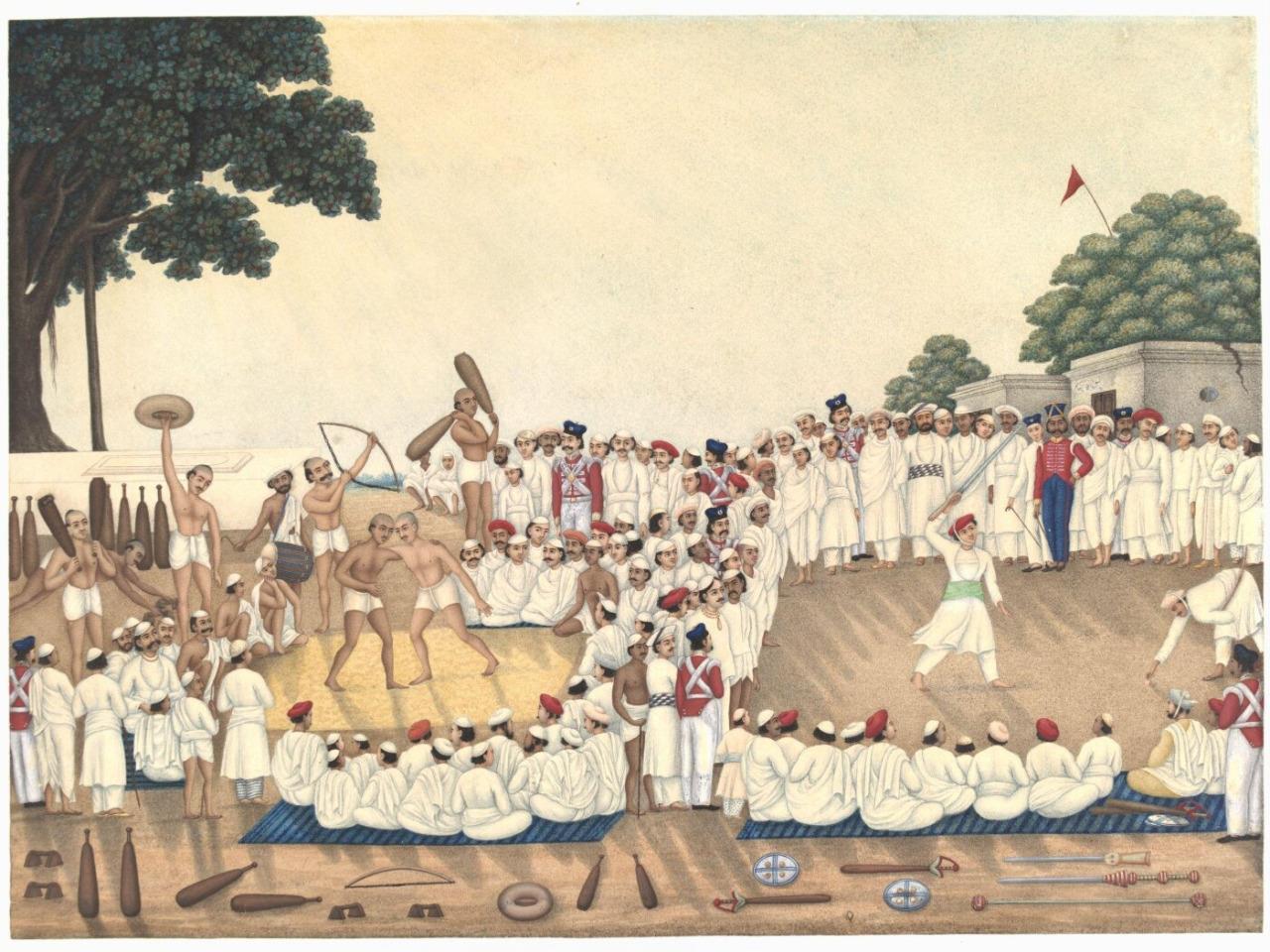
SPORTS COLISEUM Page | 17
Archery was one of the subjects that Boddhisatva learned at Takshila, as stated in the Bhimsena Jataka. The stories of the Jataka include accounts of matches of this kind, which were highlypopular and required participants to hold their breath. There are also two distinct kinds of activities that are mentioned: water sports, which are known as Salila Krida, and garden games, which are known as Udyana Krida. Archery, military training, wrestling, and mountain climbing were just some of the activities that were taught at Takshila. Swimming, various breathing exercises, and yoga postures were all essential components of the Nalanda education system.
c) Importance of Sports
The participation of children in athletics and other forms of physical activity may be of considerable value to them. Participating in organised sports provides young people with the chance to improve their social and physical skills at the same time. It is important to make sure that the child's participation in sports is well balanced, taking into account their age, talents, and interests. Kids may take a break from the monotony of their daily life by participating in sports. In addition to this, it gives children the opportunity to engage in a healthy kind of leisure and physical activity.
Children and teenagers develop their decision making skills and ability to solve difficulties via participation in sports. They encourage the sense of camaraderie, unity, and fair play while fostering collaboration, self control, trust, respect for others, leadership, and coping mechanisms. Sports help kids confront obstacles and prepare them to take on leadership positions in their communities, which is crucial if we want to see kids grow up to be responsible, self assured adults. Sports may be an effective vehicle for advancing equality for all people. Children with impairments who participate in sports develop self confidence that they may later use in other facets of their lives. Children's skills take centre stage when the aim is to make a goal or shoot a basket, not their impairments. Sports may be used to teach communities how to prevent disabilities and to emphasise the value of immunisation, adequate diet, and good cleanliness when utilised in conjunction with health information.
SPORTS COLISEUM Page | 18
Fig.5 Mindmap
(Source: Author)

SPORTS COLISEUM Page | 19
Fig.6 Physical Activity Map
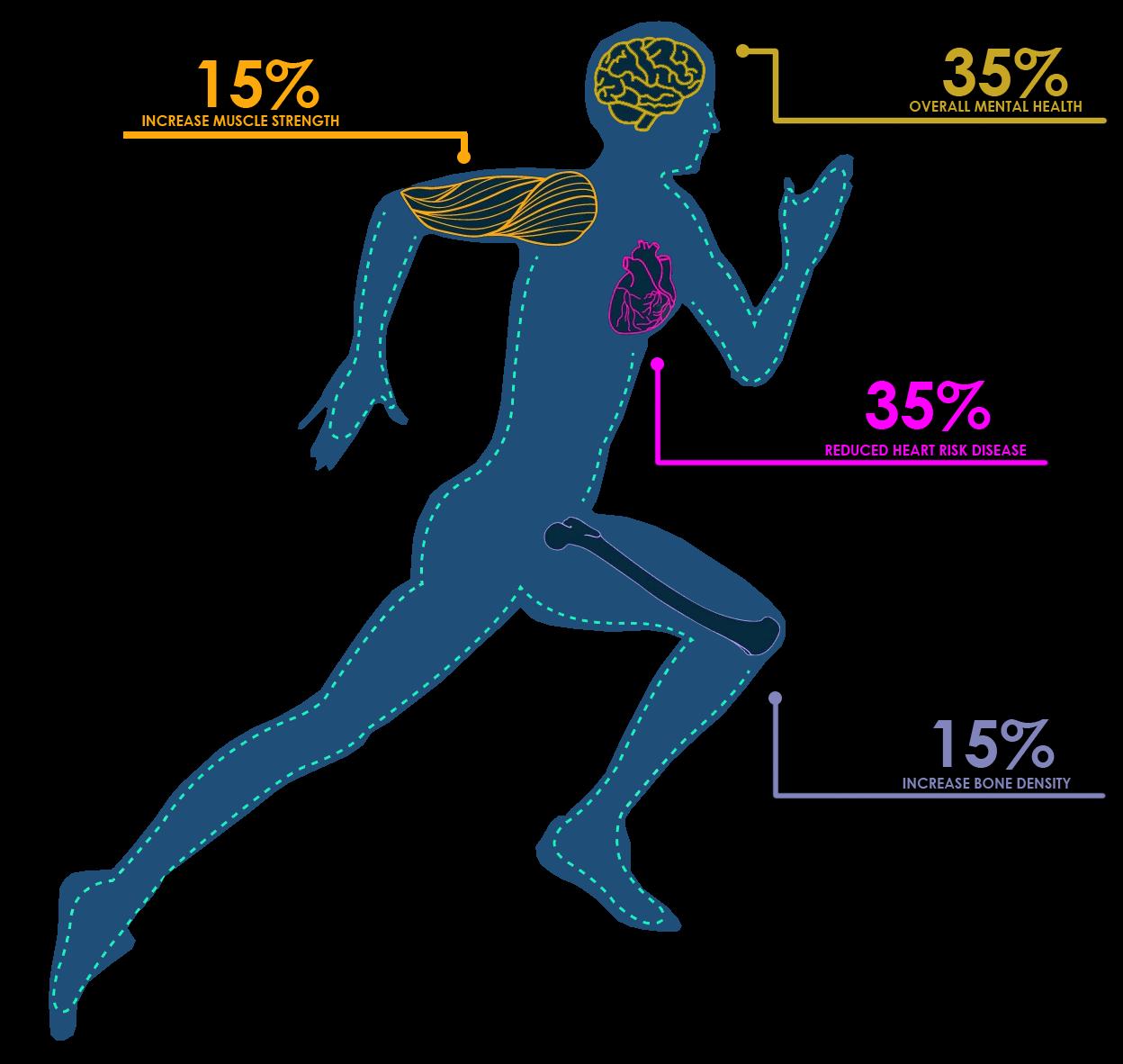 (Source: Author)
(Source: Author)
Sports + Education
Schools are excellent candidates for the role of venues in charge of the provision of chances to participate in sports because of the vast populations of children and adolescents that they attract. Participation in sports is beneficial to a child's whole development, not only their intellectual potential, and this, in turn, makes the learning process more productive in the classroom.
Participation in sports may help students enhance their academic performance and learning, as well as their enrollment and attendance rates in school. Students learn the importance of living a healthy lifestyle and the skills necessary to stay healthy via the lessons they receive
SPORTS COLISEUM Page | 20
in physical education classes. In addition to this, it teaches children knowledge and skills that, when they return home, they may share with their parents, grandparents, and other members of their family.
In addition to this, participation in athletics has the abilityto encourage interest in academics from the community as well as the family.
Parents have the chance to have an active role in their children's education by volunteering their time as coaches, taking part in extracurricular activities such as sports and events that take place after school, and participating in other types of athletic endeavours.
Fig.7 Communicating Through Sports
(Source: Sports Rec)
Means of Communicating with the Masses-The dissemination of important ideas might be greatly facilitated during sporting events. People have the potential to be motivated and their spirits might be lifted when they watch sports. It focuses on the potential, ambitions, and accomplishments of individuals. Because of the media and the internet, many more people than ever before are able to see, read about, and listen to events. Using corporate social responsibility, forming partnerships with sponsors of athletic events, and holding fundraising events for child and adolescent programming are some other ways to both advance the cause of children's rights and generate financial support. Public service announcements, in stadium movies and banners, halftime performances, publications, and event websites might make use of the power of sport to assist children, particularly the most disadvantaged ones, in making meaningful progress.

SPORTS COLISEUM Page | 21
d) Diminishing Sports, Why?
India is slipping farther and further behind in the sporting world due to a lack of support fromthegeneralpopulationandalackofleadership.InIndia,academicpursuitscontinue to take precedence over extracurricular activities such as sports and hobbies. There are many issues plaguing Indian athletics, but the following ones should be addressed and resolved before any others.
Lack of sporting culture A nation's growth may be judged by its athletic skill, and participation in sports events can boost its glory and honour. The fact that the most advanced and industrialised countries thrive in athletics is worrying. Despite importing sports like cricket, our pre independence athletic culture never developed. Later, tennis, badminton, volleyball, and others emerged. India's sports culture remained weak after independence, and the country was prohibited from international sporting events. No significant attempts are being made to revitalise our country's sports culture.
Access issues with sportingfacilities In anurbanisedculture, there are few openplaces for sports. Not everyone can afford sporting facilities in a city dominated culture. This createsasocialgulfbetweenhigh-andlow-incomepeople.Inmost Indiancities,people's desire to play sports and available facilities cause friction. This causes individuals to retreat from sports, preventing a burgeoning talent from developing. The expansion of sports in the nation will be aided by programmes or institutions that allow everyone to practise and participate. This helps national sports.
Sports is restricted to schools and colleges Talent is only recognised in schools and universities;aftergraduation,thereislittlesupportornurturingoftheseemergingtalents. Sport education is now a required topic in schools, but in reality, it still lacks seriousness and significance. Sports are an essential component of an educational system because they aid in children's overall development and promote their physical and mental well being. The majority of people living in metropolitan areas of India do not take part in sports because they consider them to be a "leisure" activity rather than a serious endeavour. If parents and officials in the country work together to promote sports and develop public awareness of them, then young athletes in the country will have a better chance of succeeding.
Not enough attention to grassroot level programmes To turn a country into a sports powerhouse requires not only a significant financial investment, but also a significant time and effort commitment, as well as involvement in local grassroots initiatives. Even if sports have always played an important part in Indian history, this will not be to the country's advantage if prospective sportsmen are not provided with the appropriate assistance. When parents and educational institutions work together to inspire children, it is possible to achieve these goals.
SPORTS COLISEUM Page | 22
Lack of remuneration- A sportsperson faces an enormous amount of competition, which far surpasses the amount of achievement they have People who are seeking to makeanameforthemselvesinthisprofessionwillnothaveanykindoffinancialsecurity if they pursue this line of work until they have achieved a certain level of notoriety. The athlete becomes disheartened as a result, which ultimately leads to them giving up on their ambitions.
e) Sports in India Sporting events may provide a country reputation and honour, which can be used to measure its growth. Concerningly, the most developed and industrialised countries also excel in sports. Despite importing cricket, our pre independence sporting culture never blossomed. Future sports included tennis, badminton, and volleyball. India's sports culture didn't develop after independence, and the country was prohibited from international contests. Our country's sports culture isn't getting much attention or rejuvenation. Badminton, football, basketball, chess, shooting, wrestling, boxing, tennis, squash, weightlifting, gymnastics, and table tennis are also popular. Indian sports include Kho kho, Kabaddi, Fighter kite, Polo, and Gillidanda.
Fig.8 Imerging Athletes Fron India
 (Source: Khelo India)
(Source: Khelo India)
Before Independence One may say that Indian sports date back to the Vedic era. Ancient India's physical culture flourished due to its devotion to religious freedom. The Atharvaveda mantra "The blessings of victory are in my left hand, and the duty that I must do is in my right" is similar to the original Olympic Oath, "For the Honor of my Country and the Glory of Sport." Badminton is believed to have originated in
SPORTS COLISEUM Page | 23
India as an adult version of an ancient children's game called battledore. Two-person teams play badminton. From India, games like chess (chaturanga), Snooker snakes and ladders, and playing cards were transferred to other nations, where they were refined and made more relevant to current society.
Fig.9 Before Independence Sporting Events (Source: Sportzpoint)
After Independence New Delhi hosted the 1951 and 1982 Asian Games. The Ministry of Youth Affairs and Sports was created in 1982 as the Department of Sports for the IX Asian Games in New Delhi. It's now the Ministry of Youth Affairs and Sports. New Delhi hosted the Asiad. The department's name was changed during 1985's International Year of Youth festivities. The whole country celebrated. India has hosted or co hosted a number of major sporting events, including the Cricket World Cup in 1987 and 1996, the Afro Asian Games in 2003, and the HockeyWorld Cup in 2010. Some of India's most prominent international athletic events include the Indian Masters, Chennai Open, Mumbai Marathon, and Delhi Half Marathon. Mumbai Marathon and Delhi Half Marathon are also significant. In 1987, 1996, and 2011, India co hosted the Cricket World Cup and the Indian Grand Prix. India hosted both events.

SPORTS COLISEUM Page | 24
Ministry of youth affairs and sports
The Ministry of Youth Affairs and Sports handles India's Departments of Youth Affairs and Sports. When New Delhi hosted the 1982 Asian Games, the Ministry was called the Department of Sports. Its name was changed during International Youth Year, 1985. Separated on May 27, 2000. The Ministry was split into the Department of Youth Affairs and the Department of Sports in 2008.
Autonomous National Sports Federations promote sports. The government's duty is to encourage broad based sports and achieve excellence in national and international competitions. These goals are achieved via Department strategies.
Sports authority of India (SAI)
The Ministry of Youth Affairs and Sports of India founded the Sports Authority of India (SAI) in 1984 to encourage sport in India. SAI has 2 sports academies, 10 regional centres, 14 centres of excellence, 56 sports training centres, and 20 special area games (SAG). SAI also maintains Netaji Subhash High Altitude Training Centre (Shilaroo, Himachal Pradesh) and 5 stadiums in Delhi, including Jawaharlal Nehru Stadium (also SAI's national head office), Indira Gandhi Arena, Dhyan Chand National Stadium, SPM Swimming Pool Complex, and Dr. Karni Singh Shooting Range.
Netaji Subhas National Institute of Sports (in Punjab) and Lakshmibai National College of Physical Education (in Kerala) undertake research and provide certificate to PhD level courses in physical education and sports medicine.
SAI regional centres
SAI Netaji Subhas Regional Centre, Chandigarh
SAI Chaudhary Devi Lal Northern Regional Centre, Sonepat, Haryana
SAI Netaji Subhas Regional Centre, Lucknow, Uttar Pradesh
SAI Netaji Subhas North East Regional Centre, Guwahati, Assam
SAI Netaji Subhas North East Regional Centre, Imphal, Manipur
SAI Netaji Subhas Eastern Centre, Kolkata, West Bengal
SAI Udhav Das Mehta Bhaiji Central Centre, Bhopal, Madhya Pradesh
SAI Netaji Subhas Southern Centre, Bengaluru, Karnataka
SAI Regional Centre, Mumbai, Maharashtra
SAI Netaji Subhas Western Centre, Gandhinagar, Gujarat
SPORTS COLISEUM Page | 25
I.
II.
III.
IV.
V.
VI.
VII.
VIII.
IX.
X.
Khelo India
Khelo India is an initiative that was launched with the purpose of revitalising the sports culture in India at the grass roots level by constructing a robust framework for all sports that are practised in our country and establishing India as a great sporting nation. The initiative was launched with the intention of building a robust framework for all sports that are practised in our country. This goal will be achieved by establishing a solid framework for all sports that are practised in our nation, which is the first step toward achieving this target. 14
According to the concept, there are a total of twelve separate sectors that will have an influence on the ecosystem that includes all areas of sports. These sectors are expected to have an effect on the ecosystem. Some of the domains that are included by this overarching concept include sports economics, community sports, talent identification, coaching for excellence, and the framework of competitive play. The objective of this initiative is to raise the quality of athletic competition at the secondary school and collegiate levels while simultaneously expanding participants' access to organised athletic activities. This will be accomplished by expanding participants' access to organised athletic activities. 15 In the months of January and February of 2018, the Khelo India School Events were conducted for the veryfirst time, and all parties involved have expressed their satisfaction with the way the games turned out.
Fig.10 Graph Showing Influencing Factors For Sports Programme
(Source: Pwc Survey)
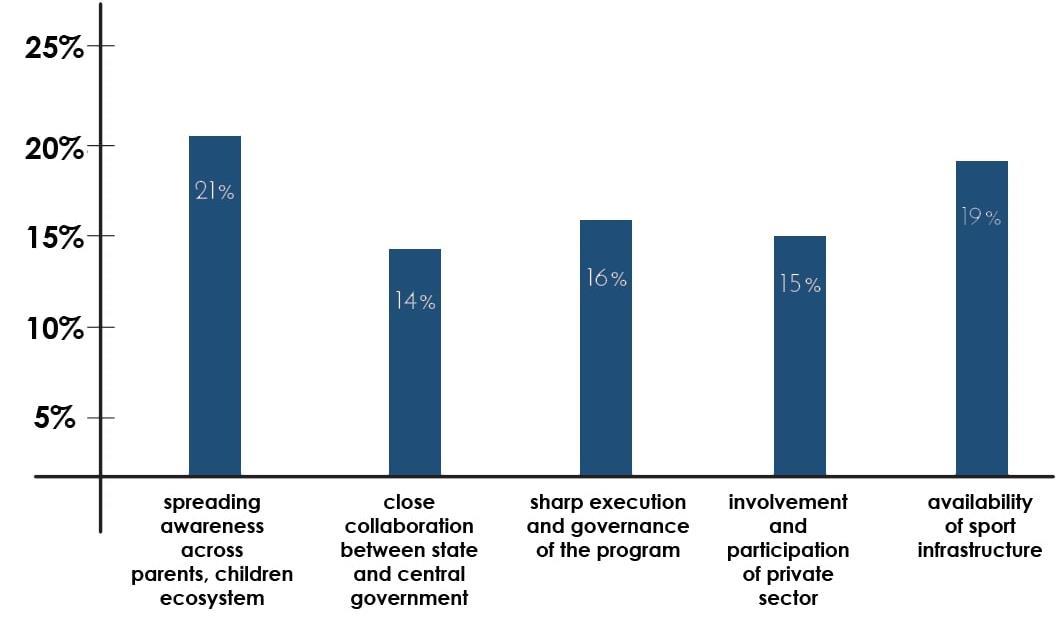
SPORTS COLISEUM Page | 26
f) Study Area and Selection Criteria
The benefits that come from being physically active and participating in sports can never be overstated. Participating in sports helps develop abilities such as strategic and analytical thinking, leadership, goal setting, and the willingness to take risks. It also fosters a sense of team spirit. Individuals who are physically fit and healthy contribute to the development of societies and nations that are also fit and healthy.
The inclusion of sports in our nation's overall growth and development is a crucial step in the right direction. Over the course of the last several years, India has shown consistent growth in the realm of athletics. This enormous potential has to be brought to the attention of people all around the world. It is time for us to encourage new talent, provide them with excellent resources, and instruct them at the most advanced level possible. It is imperative that we instil in athletes a strong desire to participate in sports, as this will allow them to display the full extent of their capabilities. Only under such conditions would India be able to realise its goal of becoming a global sporting force.
The Khelo India Youth Games (KIYG), which were originally known as the Khelo India School Games (KISG), is a pan Indian multi disciplinary sports tournament for young people in India who are under the age of 17 and under the age of 21.
The competitions known as KIUG are held for student athletes attending institutions all throughout the nation. In contrast to the KIUG, which only has around 20 sports in which athletes may compete, the KIYG now has 25 different sports available. Every year, the Khelo India Program selects one thousand underprivileged children to receive scholarships and get training for international sporting competitions. On January 21, 2018, Prime Minister Narendra Modi, unveiled the first edition of the KIYG at the Indira Gandhi Arena in New Delhi.There are 16 sports in 1st edition at Delhi, 17 sports in 1st edition at Bhubaneshwar, 18 sports at 2nd edition in Pune, 20 sports in 2nd edition at Bangalore, 20 sports at 3rd edition in Guwahati and 25 sports at 4th edition in Panchkula. In 2017, the Ministry of Youth Affairs and Sports got rid of an item that said nine traditional sports should be encouraged, and out of the nine sports, three of them were from the North East region of India. During the course of the research conducted on these three sports, a number of concerns were discovered; one of the most significant challenges for athletes in North East India is a lack of infrastructure. As things stand, the majority of the main medals at the Common Wealth Games are being won by competitors from North East India.
Disciplines that fall under IGMA
Kalaripayatu, Kerala It is a form of the martial art known as Kalaripayattu that was developed in Kerala. The northern and central districts of Kerala, as well as the southern portions of Tamil Nadu, were the first places in India to start practising it.
Silambam, Tamil Nadu It is a kind of martial art that emphasises the use of many kinds of
SPORTS COLISEUM Page | 27
weapons. It is traditionally played with a staff made of bamboo and its roots may be traced back to Tamil Nadu.
Kabaddi, Telengana One of the two teams is currently using each of the court's halves. They take it in turns to send a "raider" into the territory of the other team, and they gain points if the raider is able to make contact with members of the other team and return to their own territory while only taking one breath each time. If the raider is tackled and stopped from returning to their base, the opposing team receives a point for their efforts. The sport is very well liked in India, notably in the states of Telangana, Andhra Pradesh, and Maharashtra.
Archery, Jharkhand Archery is a sport that involves the shooting of arrows with a bow. Archery was formerly used for hunting and fighting, but now days it's more of a leisure hobby. In the past, archery was employed for both. It's a talent that's been recognised and valued in many different parts of the globe, but especially in India.
Malkhamb, Maharashtra In this ancient Indian sport, a gymnast performs aerial yoga poses and wrestling grips in tandem with a vertical wooden pole. More than 20 of India's states have officially recognised malkhamb as their official state sport..
Mukna, Manipur The northeastern Indian state of Manipur is home to its own unique kind of folk wrestling that dates back generations. Popular in a number of cities and towns, including Imphal, Thoubal, and Bishnupur, among others. At the beginning of the fight, the competitors grab hold of one another's ningri (belts). The objective is to force the opponent to submit by pinning them to the ground with their back against it.
Thangta, Manipur A traditional kind of martial arts that is practised in Myanmar is known as thangta. It is most often known by the name Huyel Langlon among the locals. The thang (also known as a sword) and the ta are the two most essential weapons (spear).
Khomlainai, Assam The Bodo people of Assam are the most prominent practitioners of this particular kind of wrestling in that state.
Gatka, Punjab During sparring sessions in this ancient form of martial arts instruction from South Asia, wooden sticks are utilised to replicate the appearance of swords.
• The IGMA has officially acknowledged a total of nine different games at the national level. The states in the north east of India are responsible for producing three of these nine games.
Mukna, Manipur It's a kind of traditional wrestling that's practised in the north eastern state of India known as Manipur. Popular in a number of cities and towns, including
SPORTS COLISEUM Page | 28
Imphal, Thoubal, and Bishnupur, among others. At the beginning of the fight, the competitors grab hold of one another's ningri (belts). The objective is to force the opponent to submit by pinning them to the ground with their back against it.
Thangta, Manipur- Myanmar's long-standing contribution to the world of martial arts is known as thangta. The neighbourhood often refers to it as Huyel Langlon. The thang (sword) and the ta are considered to be the most vital weapons (spear).
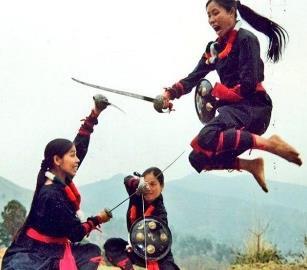
Khomlainai, Assam The people of Assam who belong to the Bodo ethnic group are the ones who are most well known for participating in and mastering this specific kind of wrestling in that state.
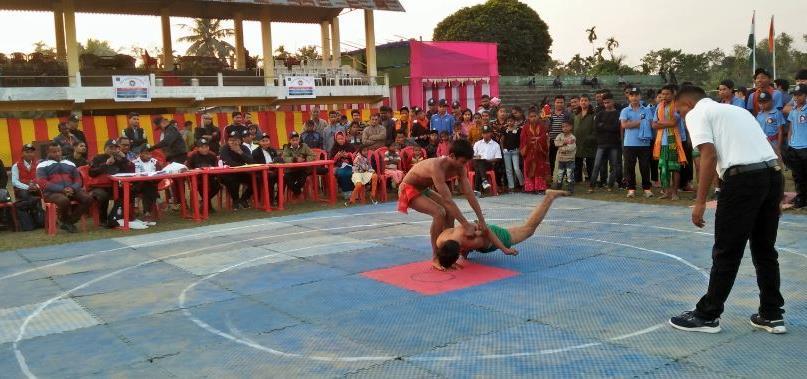
Fig.11 Thang Ta Sport
Fig.12 Khomlainai Sport (Source: Hindustan Time) ( Source: Hindustan Time)
SPORTS COLISEUM Page | 29
4.1.B NORTH EAST INDIA
a) INTRODUCTION
When Jalandhar becomes a centre for sports product businesses in India, might the North East become India's Sports Capital? Since partition, skilled labour from Sialkot, Pakistan, has settled in Punjab's border city. Unlike talent, North East lacks infrastructure. Imphal in 1997 and Guwahati in 2007 hosted the National Games. Our area hasn't had large sporting events in a while. Then Sports Minister Sarbananda Sonowal invited SAF games to Guwahati/Shillongin 2016.Guwahati, India's gatewayto the North East andnowSouth East Asia, has lately hosted the ISL, Elite Senior Boxing, T20, and FIFA U 17. Global events helped build infrastructure and attain greatness. Football, cricket, hockey, and other indoor activities have contemporarystadiums. Other NE states mayhost adventure sports. India bid for FIFA U 20 after winning U 17. Events are forthcoming. In November, Guwahati will host the World Youth Women's Boxing Championship, a qualifier for Buenos Aires and Tokyo. Dr Himanta Biswa Sarmah, president of the Badminton Association of India, chose Guwahati for the 2018 Premier Badminton League (PBL). Union Sports Minister Rajyavardhan Singh Rathore has consented to establish up a Regional Football Academy in Imphal under SAI, according to Manipur CM Nongthombam Biren Singh. Manipur's National Sports University has almost completed its world class facilities. Rajasthan Royals will play IPL matches in Guwahati this season. Every block in the state will have a playground under the 'Khelo India' project, a national sports development programme. North East is expected to take sports to new heights, and the Union Sports Ministry will pat it on the back. North East athletes' worldwide success is well known. Some of India's best international players play there. Sikkim produced Baichung Bhutia and Sunil Chetri. MC Mary Kom and Dipa Karmakar created history. Talimeren Ao guided India's 1948 Olympic football squad to the quarterfinals. Manipur has eight Under 17 players representing India. Also represented are Mizoram and Sikkim. One fourth of Jawaharlal Nehru Stadium's NE supporterslately. ThounaojamJeakson Singh's stunningheaderagainst Columbiagave India cause to shout. AIFF knows that the North East is the core of Indian football. Bengal and Goa are finished. India's new football powerhouses include Manipur, Meghalaya, Sikkim, and Mizoram. FIFA U 17 selection makes us happy. NE athletes have shown that their physique is no barrier to skill. It's an exceptional feat when success hasn't traditionally followed football enthusiasm, despite most players' poor backgrounds. Mizoram promoted sports curricular excellence. Through Tata Trusts, they sent U 16 kids to Germany for training. After Assam and Tripura, the other six North Eastern states will play Ranji Trophy individually in the next session and as independent states in U 16, U 19, and U 23 from this session on. The COA promised a North East Zone. Aizawl FC and Shillong Lajong FC have won. Indian Olympic Committee approved to include Karate in 2020. This region's martial arts have promise.
SPORTS COLISEUM Page | 30
Dispur should use this chance to put Guwahati on the sporting map. Should India make school sports mandatory? India's Olympic medal count is disappointing. Kenya and Ethiopia even won medals in long distance running. NITI Aayog plans Mission Olympic. India won its first Olympic gold in hockeyin 1920. Corporate Indiamaylead byestablishingAcademy. Tata group helps India's sports culture. India should rethink its sports strategy and political appointments.SAI promotes and develops sports in India. Guwahati and Imphal are North East regional centres. Other NE states have SAI Training Centers and Special Area Games. We need SAICentres of Excellence (COX) for this area to develop great young athletes, like Patiala, Bangalore, Kolkata, and Thiruvananthapuram. Netaji Subhas National Institute of Sports (NSNIS)Patialais the"Mecca" of Indiansports. Such efforts andimproved execution may help our region's sports infrastructure. That might boost national and international medal totals.
b) HISTORY OF SPORTS IN NORTH EAST INDIA.
Since the beginning of time, human people have participated in a wide variety of pastimes for entertainment, the majority of which have consisted of participating in sporting events and playing games. Games and sports that have been played in a community or civilization for many years and have been passed down from one generation to the next are referred to as "traditional" or "old" games. The people who live in Northeast India have been playing a variety of traditional games for just as long as people have been living in other areas of the globe.
The following is a look at some old games that are being played with great gusto by the indigenous people of Northeast India today.
Dhop Khel
Northeast India plays Dhop Khel, sometimes called Dhup Khel and Dhoop Khel. Players take turns throwing the ball at their opponent to remove them from competition while trying to catch the ball and avoid being grabbed by other players. Historically, the ball was manufactured by laminating a tomato using banyan tree adhesive. Certain Northeast Indian tribes still use the tomato ball in ceremonies.
Ghila
North Eastern Indians play the ancient game Ghila. A Ghila is tossed into one of five or six square boxes on the ground. First, the player places the Ghila in the right hand box.
The player moves the stone with one leg while lifting the other. The player must balance on one leg while leaping to remove the stones. In this round, the player's Ghila or leg must never touch the box border. If a player touches any of the lines, he's eliminated.
Kochu
SPORTS COLISEUM Page | 31
Kochuis another Northeast Indiansport.Twoteams compete.You'll need "KochuTepu" to play the game. Earth's surface nicks. Umpires oversee games. The umpire tells both teams to close their eyes before tossing the ball anywhere on the field. The player who finds the ball first must put it in the hole. The opposing team should fight the player's hole in one attempt. Whoever gets the ball in the hole first wins.
Jhandi Munda
Jhandi Munda is a street game. Langur Burja has been a part of family gatherings for years. Because it was invented there, the game is also popular among Northeast Indian indigenous peoples. Jhandi Munda uses six six sided dice. Each die's six sides include Jhandi Munda symbols. Flag, Face, Club, Diamond, Spade, Crown. The player wagers on the symbol they think will appear most frequently (after all of them are shuffled and rolled).
Luka Vaku
Northeast India's rural children playthis game. In Luka Vaku, one child is removed from theothers and told to conceal his eyes. Theremainingplayerstakeshelterin theallocated area. The assaulting player must then seek for hidden players. If he finds someone, that player is eliminated. One player wins if they find all the others. If a player can't find other players, he must declare defeat.
SPORTS COLISEUM Page | 32
c) RISING ATHLETES OF NORTH EAST INDIA.
Fig.13 Timeline Of Commonwealth Winners History (Source: Author)
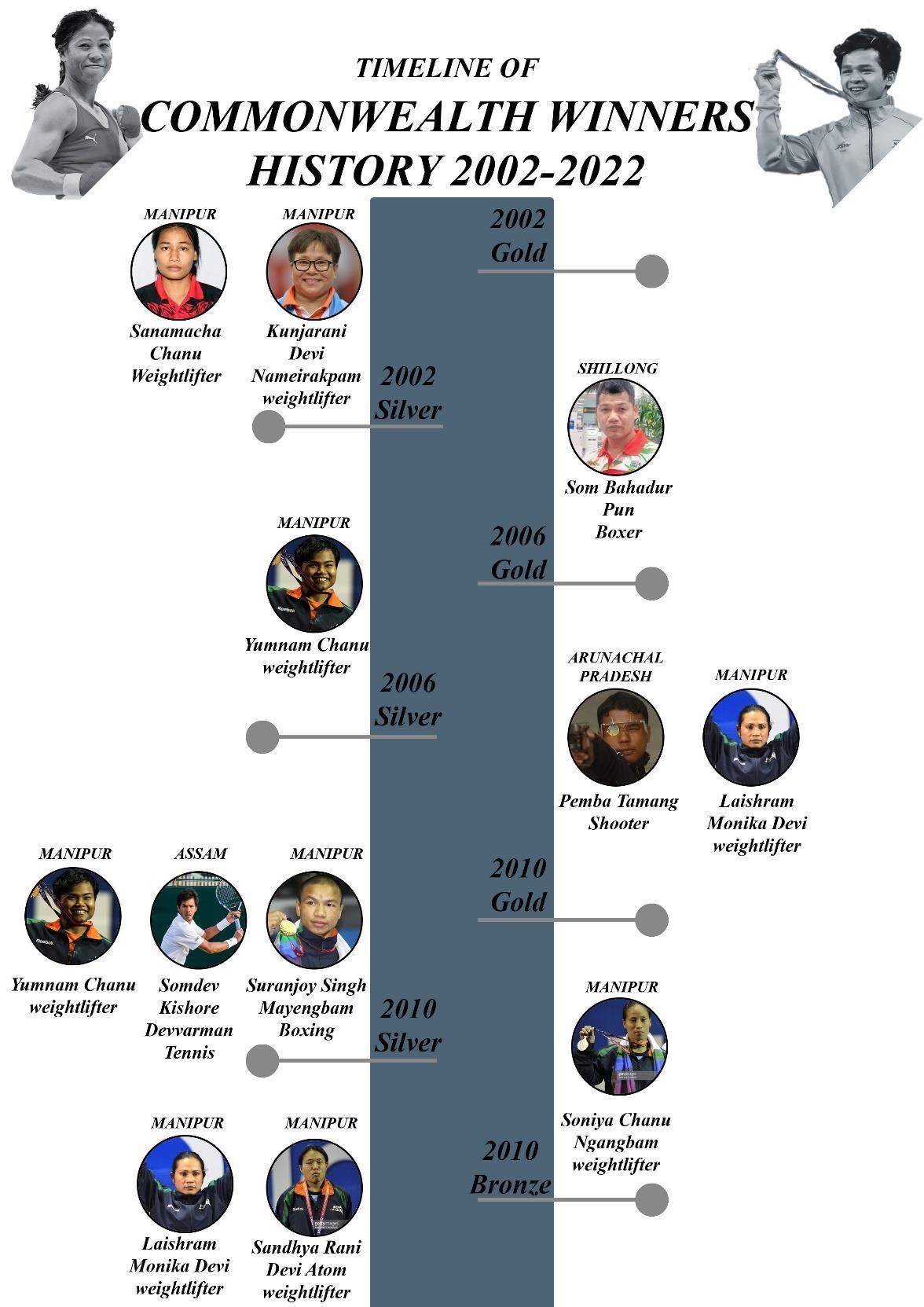
SPORTS COLISEUM Page | 33
Fig.13 Timeline Of Commonwealth Winners History (Source: Author)

SPORTS COLISEUM Page | 34
d) CURRENT ISSUES FACED.
Northeast India consists of Arunachal Pradesh, Assam, Manipur, Meghalaya, Mizoram, Nagaland, Tripura, and Sikkim. The region's languages, cultures, tribes, and sports are diverse.
The 1971 partition (with Bangladesh) hindered North East access. Siliguri corridor in North Bengal connects seven states to the main body. Misuse of government money has worsened the North East's gap with the rest of the nation, frustrating the young. AFSPA and military warfare between sibling nations have caused turmoil. Many instances and crimes have been conducted against Northeasterners on the mainland due to physical appearance prejudice, etc. In two years, criminality against Northeasterners in the capital has risen 232.5%.
I. Northeast sports excel
Sports performance keeps the Northeast in the limelight. A area with 3.6% of India's population had 7% of the Indian Olympic team in 2016 and 11% in 2012. Northeast India doubled and tripled its population representation. Despite difficult circumstances and a lack of a robust ecology to promote extraordinary talent.
Northeast has produced famous athletes. Talimeran Ao of Nagaland was the first Northeast Olympian Captain, followed by Baichung Bhutia, Mary Kom, Somdev Devvarman, Dipa Karmakar, Shiva Thapa, and 'Dhing Express' Hima Das.
Football is one of the most popular sports in the 8 states, with Northeast teams in national competitions. Archery, Weightlifting, Fencing, Judo, Wushu, etc. players have also excelled at national and international levels.
II. Racism's targets
Northeast Indian and other distant athletes have spoken out against racism and the misunderstanding that they are "outsiders" in their own nation. When Sunil Chhetri spoke with Virat Kohli on Instagram in May, a person said, "Yeh Nepali kaun hai?" After tweeting on the India China crisis, Sikkim born Baichung Bhutia was branded Chinese on Twitter. MC Mary Kom, a six time world amateur boxing champion, accused authorities of discrimination in 2013 in Mumbai. "I'm from the Northeast, therefore..." Manipur boxer: "I'm Indian."
SPORTS COLISEUM Page | 35
III. State aid
In recent years, the sport ministry's contribution to Northeastern states has improved. The 2017 Sports budget allocates Rs 148.4 crore for the Northeastern Area Scheme, up from INR 131.33 crore the previous year.
The Northeast Himalayan Region Sports Festival received special funding in 2014 for Himalayan sports (HRSF). For developing athletic traditions in Nepal, Bhutan, J&K, Uttarakhand, Himachal Pradesh, Sikkim, and the North Eastern States.
The government invested INR 350 crores to enhance athletic facilities, roads, and security infrastructure for the 12th South Asian Federation (SAF).
IV. Sporting powerhouse Manipur
Manipur is India's oldest sports superpower. Manipur has outperformed larger states in numerous national sports since 1999. Local clubs of all ages visit Yaoshang and attract young potential. All Manipur Football Association has many clubs that manage grassroots activities.The Sainik School Imphal Old Boys Football Club (SFC) thinks football can foster peace and love. Takyel, Imphal has a SAI NER Centre that trains local talent. AFC and Vision India endorse it.
V. In conclusion
To comprehend sports, we must use 3 lenses:
1.Government and Confederations
2. Northeast events/leagues/tournaments
3. State performance at different levels.
National Confederation must increase activities and infrastructure.
Strongstate level sports leagues generatehealthycompetition androutetalent to thenational level.Sports CSR financing will offer our area and our country the sporting culture they deserve.
SPORTS COLISEUM Page | 36

SPORTS COLISEUM Page | 37
4.2. HYPOTHESIS
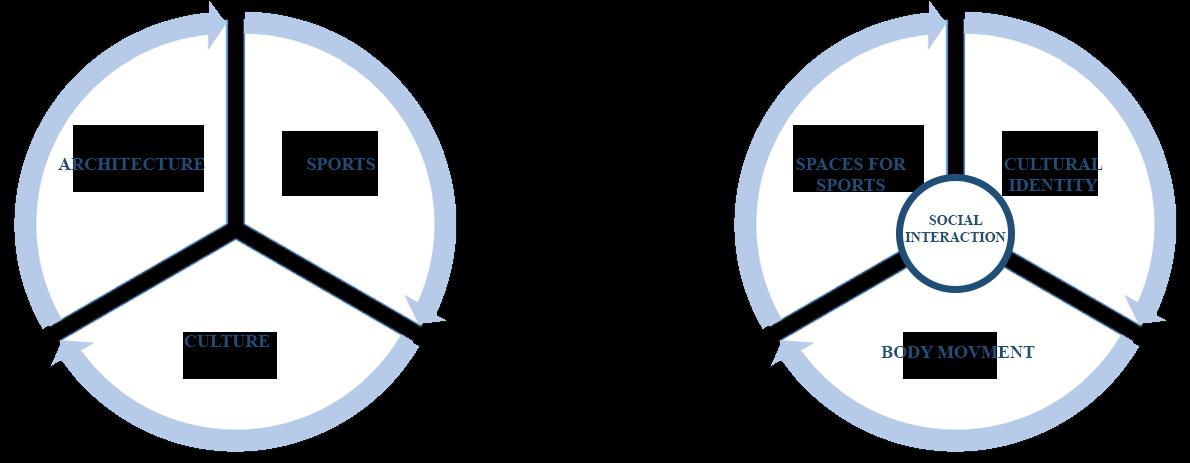
Traditional sports are the contests and physical activities that have been practised in our societies for generations.They are a significant part of our history, and they contribute to the formation of both ourselves and our culture. This has a direct bearing on the many different values that we hold. However, since these kinds of sports do not get the adequate attention and infrastructural facilities that they need, they are becoming less popular in society, which is why there is a pressing need to bring them back.
“Architecture pertaining to games, sports, body and movement is about much more than just puttinga roof over some competitive activities. The architecture may potentially increase the joy of movement and inspire both children and adults to participate in sports, play and social interaction entirely new ways.”…... [Dorte Mandrup, 2011]
This project, which entails constructing something that concerns with "architecture," "sports," and the "culture," may assist us in reviving traditional sports in the society. More precisely, these topics will be discussed in the context of the project as pertaining to "space for sports," "body mobility," and "cultural identity," which are all related to the topic of social interaction.
FIG.15 Connectivity Between Sports,Architecture And Culture
(Source: Author)
The proposed architectural intervention may bring the worth of North East India's traditional sports to the current generation. The effort will promote traditional sports. This will benefit the individual, group, and community. Another side effect would be an increase in the number of people who compete in and win sports events and competitions. It will provide under recognized traditional sports the attention and resources they need to thrive on a global scale, enabling already existing talents to break through due to a lack of infrastructure.
SPORTS COLISEUM Page | 38

SPORTS COLISEUM Page | 39
4.3. AIM, OBJECTIVE, SCOPE
Aim
Byfostering, safeguarding, and providing a venue for their growth, this study aims to protect North East Indian ethnic sports and prevent them from losing their cultural character.
Objectives
Recognizing the significance of sports with North East Indian roots.
To see why North East traditional sports have lost their lustre nowadays.
To maintain their identity and to increase public awareness of these lesser known sports.
To encourage kids to participate in North East traditional sports and to raise awareness among the next generation.
To promote multicultural understanding, young empowerment, and a sense of sportsmanship among people.
Scope
Establishing a venue for the institutionalization and promotion of North East traditional sports.
Through exhibits and videos, facility visitors will also learn about North east traditional sports and their importance.
Only a select few conventional sports will have access to training facilities; minor sports will be offered as a recreational activity.
Limitations
A small number of north east traditional sports will be emphasized.
Issues
ETHNIC SPORTS ARE NOT ENCOURAGED AT HIGHER LEVELS
Despite the fact that ethnic sport has a broad scope, it has not been successful in reaching many different groups of the public and has not received an adequate level of attention.
LACK OF SOCIAL EXPOSURE IN PARTICULAR FIELD OF ETHNIC SPORTS A great number of locals and their activities, festivals, and sports have not yet been touched and have not been investigated in the appropriate manner.
SPORTS COLISEUM Page | 40
4.4 RESEARCH METHODOLOGY
FIG.16 Research Process Chart (Source: Author)
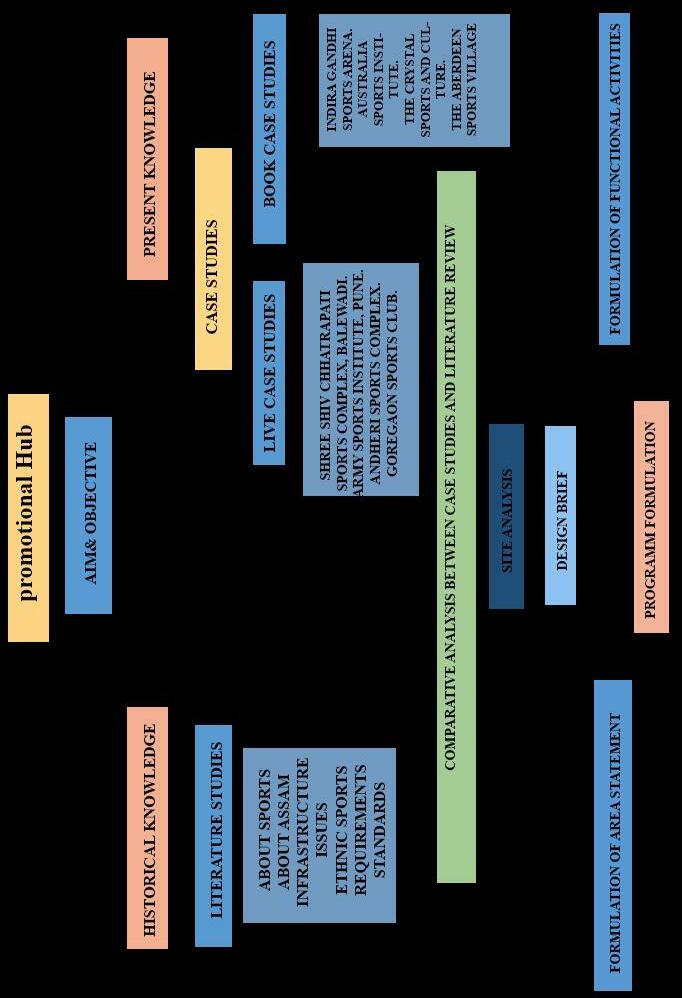
SPORTS COLISEUM Page | 41
Strategies
Learning the spatial qualities of sports and its anthropometrics.
Educating and developing interest among the youth.
Institutionalizing some of the major forgotten sports.
Provide training from the older practitioners of the sport.
Sports for all designing all inclusive spaces for everyone to be able to experience the sport.
SPORTS COLISEUM Page | 42

SPORTS COLISEUM Page | 43
5. LITERATURE REVIEW 1:
a) INDIGENOUS GAMES AND MARTIAL ARTS (IGMA)
Indigenous Games and Martial Arts (IGMA)
In answer to a question regarding rural, indigenous, and tribal games, the Sports Authority of India has promoted many sports disciplines throughout the nation.
Khelo India's new approach for promoting traditional sports includes "Promotion of Rural, Indigenous, and Tribal Games."
SAI promotes Indigenous Games and Martial Arts (IGMA) in nine disciplines via its National Sports Talent Contest (NSTC), which chooses bright 8 to 14 year olds in 10 SAI-adopted Centers.
Under this programme, schools and trainees get athletic equipment, accidental insurance, a stipend, and an annual grant for equipment and talent scouting competitions. Each individual spends Rs 45,000 annually. In 2016 17, 10 SAI adopted Centres trained 159 participants in traditional sports (78 boys, 81 girls).
The Northeastern Region of India Becomes More Connected To India Due To Its Culture Of Sports
Due to the fact that Northeast India has more similarities with its neighbouring nations than it does with the rest of India, this region is often the target of racial prejudice, while being encircled on all sides by international boundaries
However, competitions in other sports play a vital part in the process of bringing it closer to the mainland.The eight states that make up Northeast India are still a long way from being included in the common conception of India because of their geographical and cultural isolation.When it comes to athletic competition, Northeast India, which is only connected to the rest of the nation by a chicken's neck corridor that is 27 kilometres long, manages to flip the odds in its favour.
Due to the fact that Northeast India has more similarities with its neighbouring nations than it does with the rest of India, this region is often the target of racial prejudice, while being encircled on all sides by international boundaries
SPORTS COLISEUM Page | 44
b) DISCIPLINES THAT FALL UNDER IGMA
Kalaripayatu, Kerala It is a form of the martial art known as Kalaripayattu that was developed in Kerala. The northern and central districts of Kerala, as well as the southern portions of Tamil Nadu, were the first places in India to start practising it.
Silambam, Tamil Nadu It is a kind of martial art that emphasises the use of many kinds of weapons. It is traditionally played with a staff made of bamboo and its roots may be traced back to Tamil Nadu.
Kabaddi, Telengana One of the two teams is currently using each of the court's halves. They take it in turns to send a "raider" into the territory of the other team, and they gain points if the raider is able to make contact with members of the other team and return to their own territory while only taking one breath each time. If the raider is tackled and stopped from returning to their base, the opposing team receives a point for their efforts. The sport is very well liked in India, notably in the states of Telangana, Andhra Pradesh, and Maharashtra.
Archery, Jharkhand Archery is a sport that involves the shooting of arrows with a bow. Archery was formerly used for hunting and fighting, but now days it's more of a leisure hobby. In the past, archery was employed for both. It's a talent that's been recognised and valued in many different parts of the globe, but especially in India.
Malkhamb, Maharashtra In this ancient Indian sport, a gymnast performs aerial yoga poses and wrestling grips in tandem with a vertical wooden pole. More than 20 of India's states have officially recognised malkhamb as their official state sport..
Mukna, Manipur The northeastern Indian state of Manipur is home to its own unique kind of folk wrestling that dates back generations. Popular in a number of cities and towns, including Imphal, Thoubal, and Bishnupur, among others. At the beginning of the fight, the competitors grab hold of one another's ningri (belts). The objective is to force the opponent to submit by pinning them to the ground with their back against it.
Thangta, Manipur Thangta is a traditional kind of martial arts practised in Myanmar. The locals often refer to it as Huyel Langlon. The most important weapons are the thang (sword) and the ta (spear).
Khomlainai, Assam The Bodo people of Assam are the most prominent practitioners of this particular kind of wrestling in that state.
Gatka, Punjab During sparring sessions in this ancient form of martial arts instruction from South Asia, wooden sticks are utilised to replicate the appearance of swords.
SPORTS COLISEUM Page | 45
c) CATEGORIZATION OF VARIOUS INDIGENOUS SPORTS OF DIFFERENTSTATES
STATES Running Wrestling Archery Weightlifting Martial arts
SIKKIM NO YES YES NO YES
ASSAM YES YES YES NO YES
ARUNACHAL NO YES YES NO NO
NAGALAND NO NO NO YES YES
MANIPUR YES YES YES YES YES
TRIPURA YES YES NO YES YES
MEGHALAYA NO YES NO YES YES
SPORTS COLISEUM Page | 46
d) ARTICLES SUPPORTING THE TOPIC Arcticles and survey
Fig.17 Modi Ji On Promoting Traditional Sports
(Source: Times Of India, May 27,2018)
The aforementioned articles discuss PM Narendra Modi's concern over the "fading away" of our traditional Indian sports and games to the point of extinction and possible solutions, in his opinion, that can help us revive these sports, including filming games while they are being played to teach people how to play that specific game and creating animated videos to teach our young generations about our traditional games and their significance. the measures that I&BMinisterVenkaiahNaiduwilltaketopreserveandpromotetraditional Indiansports like kushti, kho kho, Kushti, malkhamba, and kabaddi in their respective traditional strongholds by airing various tournaments related to these sports on Doordarshan, which reaches about 22 million homes in India.
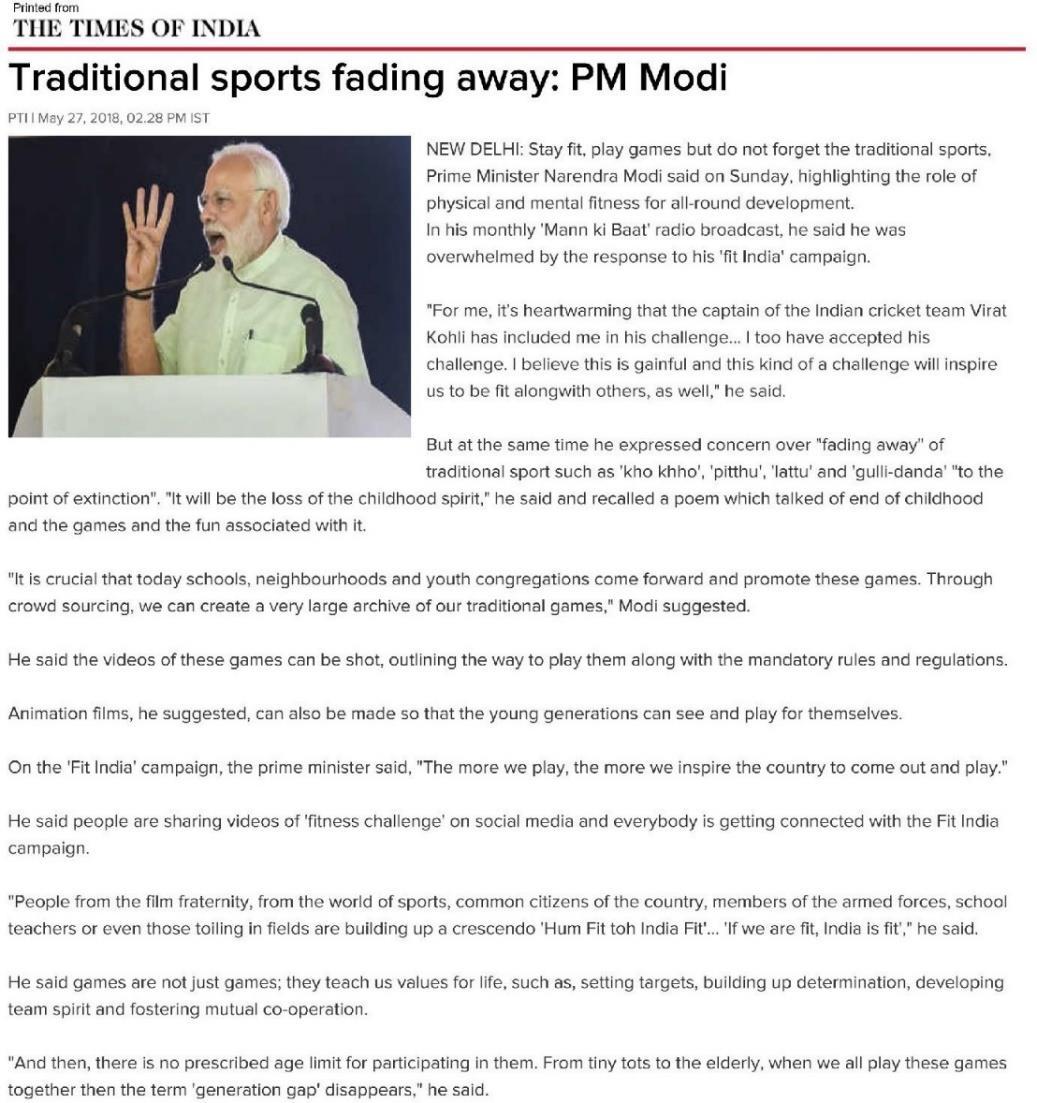
SPORTS COLISEUM Page | 47
Fig.18 Modi Ji On Promoting Traditional Sports
(Source: The Economic Times, May 19,2017)
The above article talks about the steps that will be taken by Minister of Information and Broadcasting(I&B) Venkaiah Naidu to preserve and promote traditional sports of India such as kushti, kho kho, Kushti, malkhamba and kabaddi in their respective traditional strongholds by airing various tournaments related to these sports on Doordarshan which reaches about 22 million homes in India.
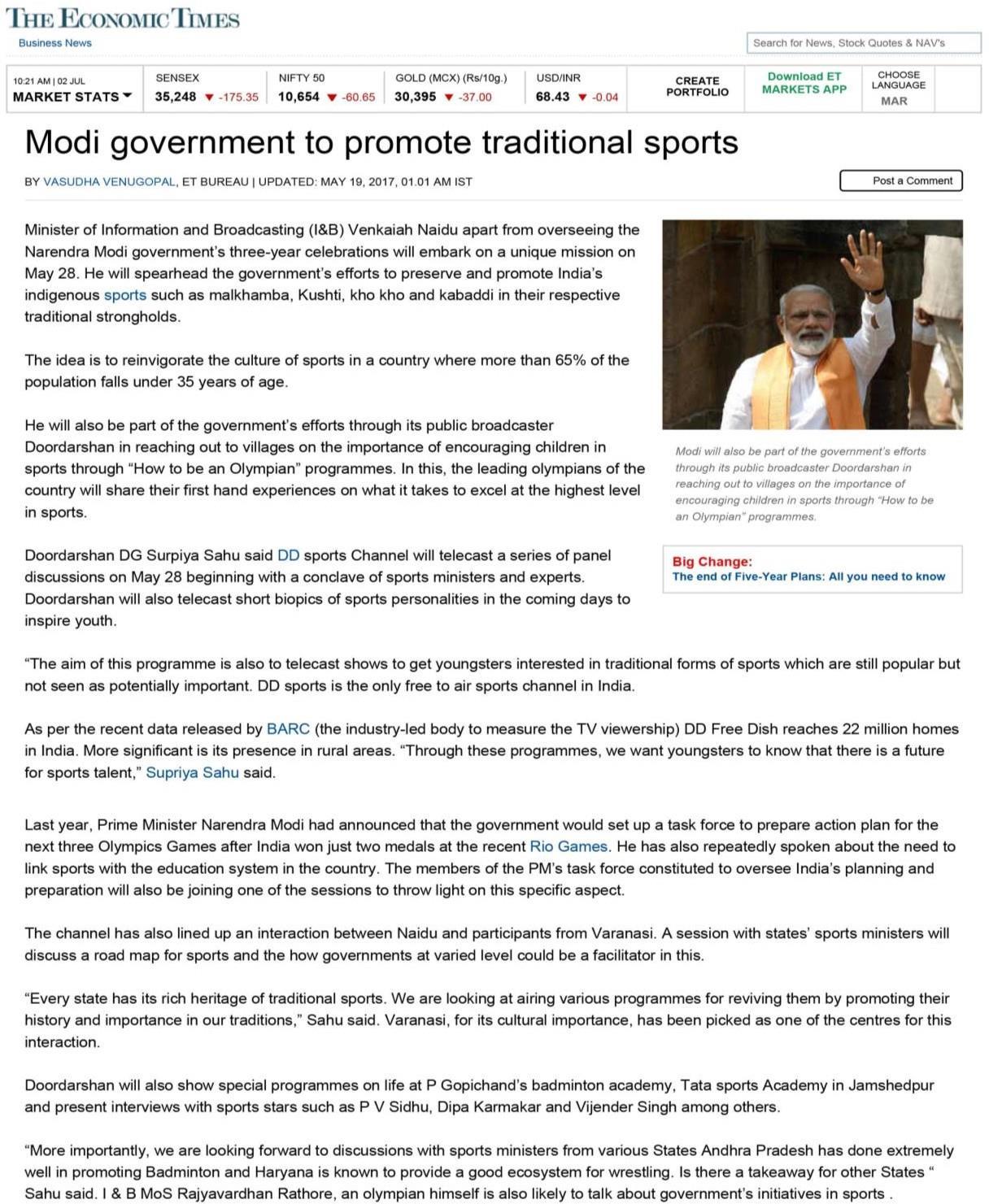
SPORTS COLISEUM Page | 48
Fig19. Modi Ji On Promoting Traditional Sports
Source: Press Information Bureau, Government of India Ministry of Youth Affairs and Sports.
The above article talks about scheme undertaken for upliftment of various Indigenous Games and Martial Arts (IGMA) under SAI Sports Promotional Scheme undertaken by the Central and State governments. There is an exclusive component called “Promotion of Rural, Indigenous and Tribal Games” for promotion and development of traditional sports under the revamped Khelo India proposal.
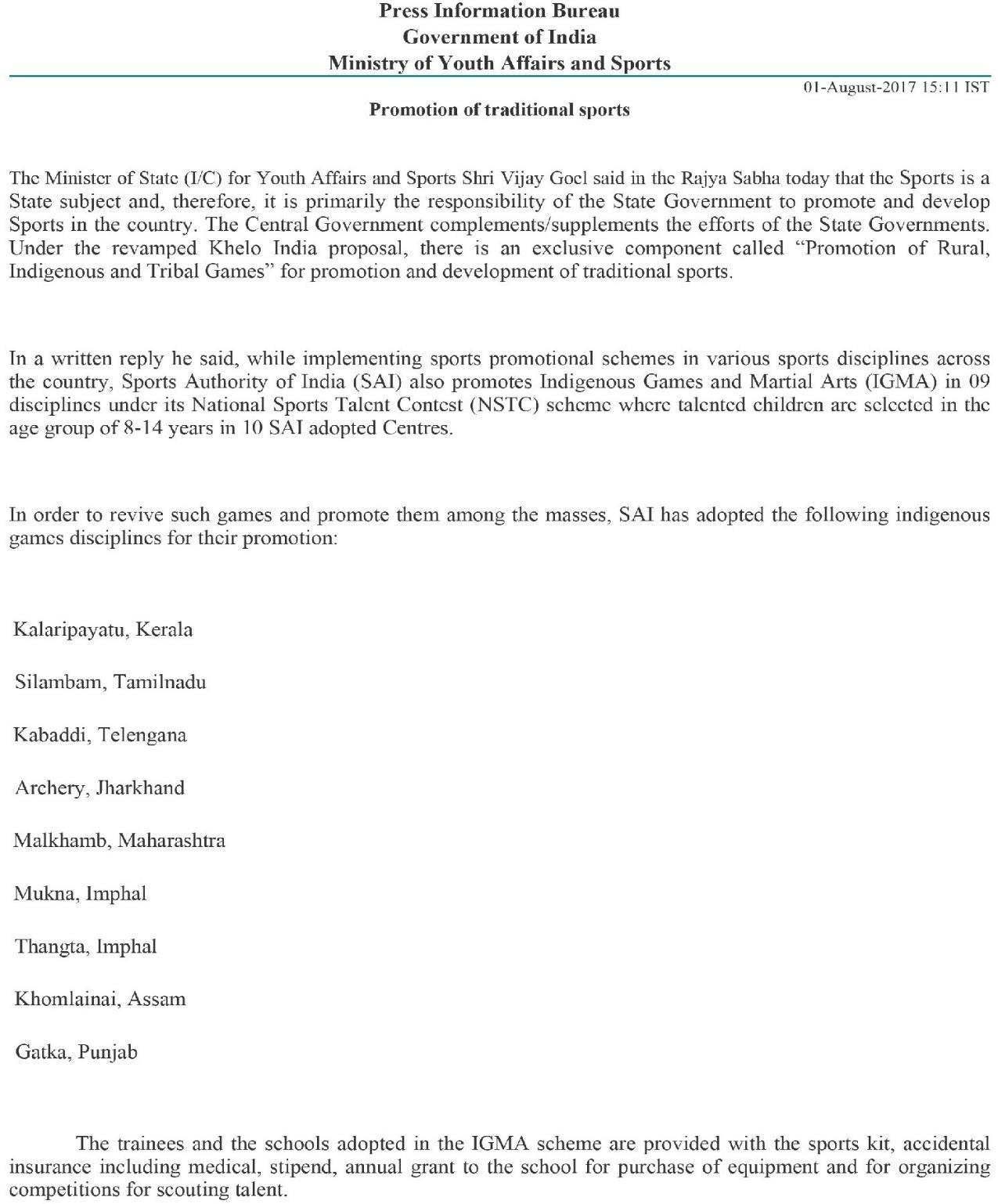
SPORTS COLISEUM Page | 49
I. QUESTIONNAIRE AND RESULTS

The participants who participated in this research were selected at random from North East India, and all of them are or have the potential to be prospective users of the structure type.
For the purpose of this study, a random sample of fifty persons aged 15 and older were selected to participate in and respond to the questionnaire that had been created in advance.
GENDER
The poll received responses from 60% of male respondents and 40% of female respondents.
AGE BRACKET
The study received the most responses from those between the ages of 19 and 25, with 60 percent of those respondents providing their information. The poll was completed by 10% of those older than 36 years old, and 30% of people who were in the age range of 19 to 35 years old.
 SOURCE AUTHOR
SOURCE AUTHOR
SPORTS COLISEUM Page | 50
RESULTS
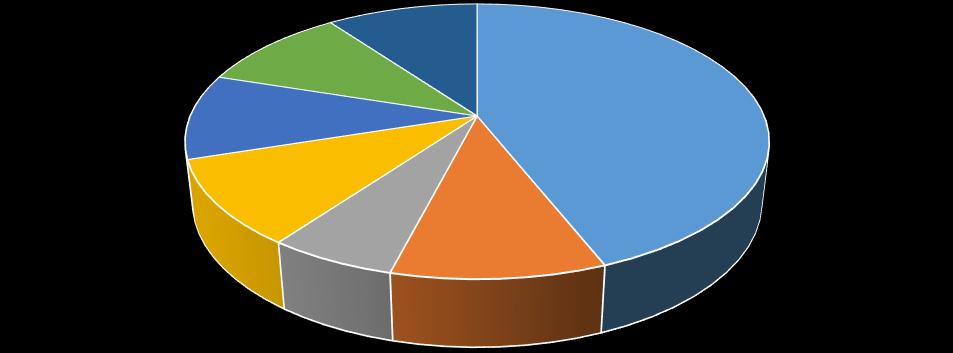
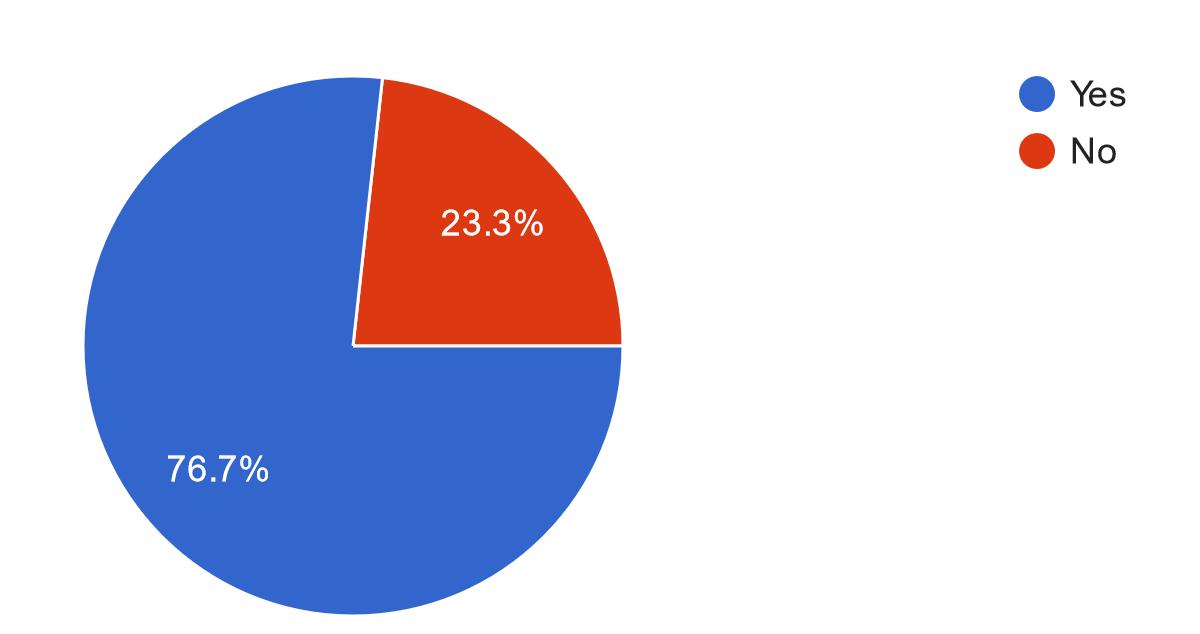
Do you ever play any sports or participate in any sporting events?
70% of all respondents are participating in some sort of athletic activity, with eighty percent of those participants falling in the age range of 19 to 30 years. 20% of respondents in the age range of 31 to 45 years are not interested in any type of sporting activity.
When it comes to sports, which ones do you like participating in the most?
SPORTS PREFERENCES
SOURCE AUTHOR
SPORTS COLISEUM Page | 51
Football badminton hockey Wrestling indian martial arts Taekwondo weightlifting
Most sports participants (44%) selected American football. Traditional sports including Indian martial arts, weightlifting, wrestling, and hockey had a lower participation rate than Football. Weightlifting, wrestling, and weightlifting were popular.
in your opinion, do the vast majority of people not consider sports to be an essential focus or a potential career path?
REASONS FOR NOT CHOOSING SPORTS AS A CAREER OPTION
Due to a lack of appropriateinfrastruct ures.
the lack of time.
Why is it that the majority of people in India do not participate in the traditional sports of their country?
Reasons for lack of participation in traditional sports
Qtra lack of awareness with numerous traditional games and the significance oftheir existence.
A lack of interest, as well as repeated broadcasts of the same on television.
The absence of appropriate training and promotional facilities due to a lack ofappropriate infrastructure for these sports.
64% of respondents were unfamiliar with classic games and their value. 25% of respondents cited lack of interest and repeated broadcasts of the same topic. 11% of survey respondents said a lack of training and promotional facilities was due to insufficient infrastructure.
SOURCE AUTHOR






SPORTS COLISEUM Page | 52
Why,
2% 89% 7% 1% 1%
For
64% 25% 11%
Which of these facilities would you most want to see added to your town?
FIG.26 SOURCE AUTHOR


How often, if you had the opportunity to do so, would you go to a sports facility that only hosts traditional sporting events?
SOURCE AUTHOR
SPORTS COLISEUM Page | 53
SOURCE AUTHOR
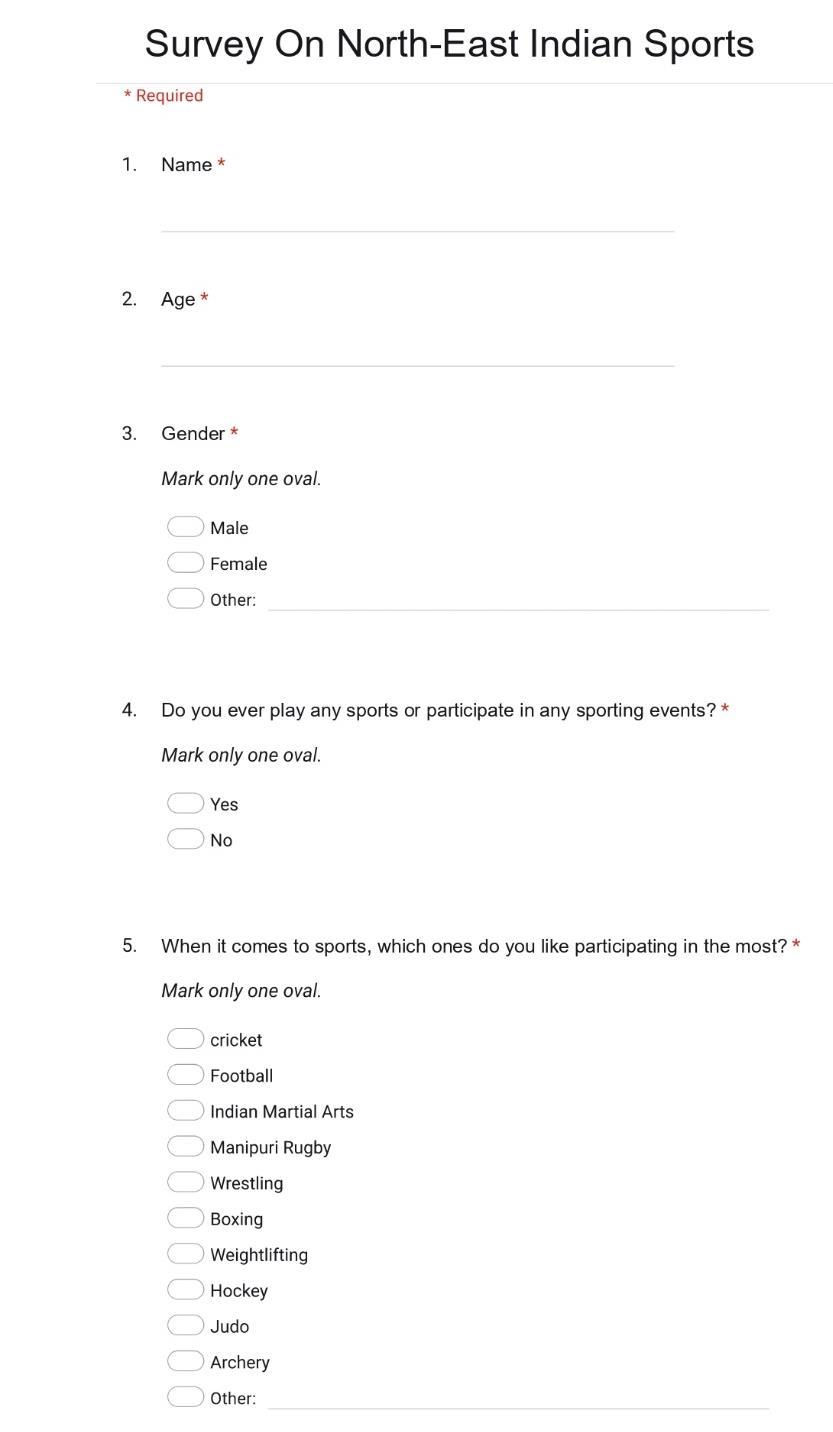
SPORTS COLISEUM Page | 54
SOURCE AUTHOR
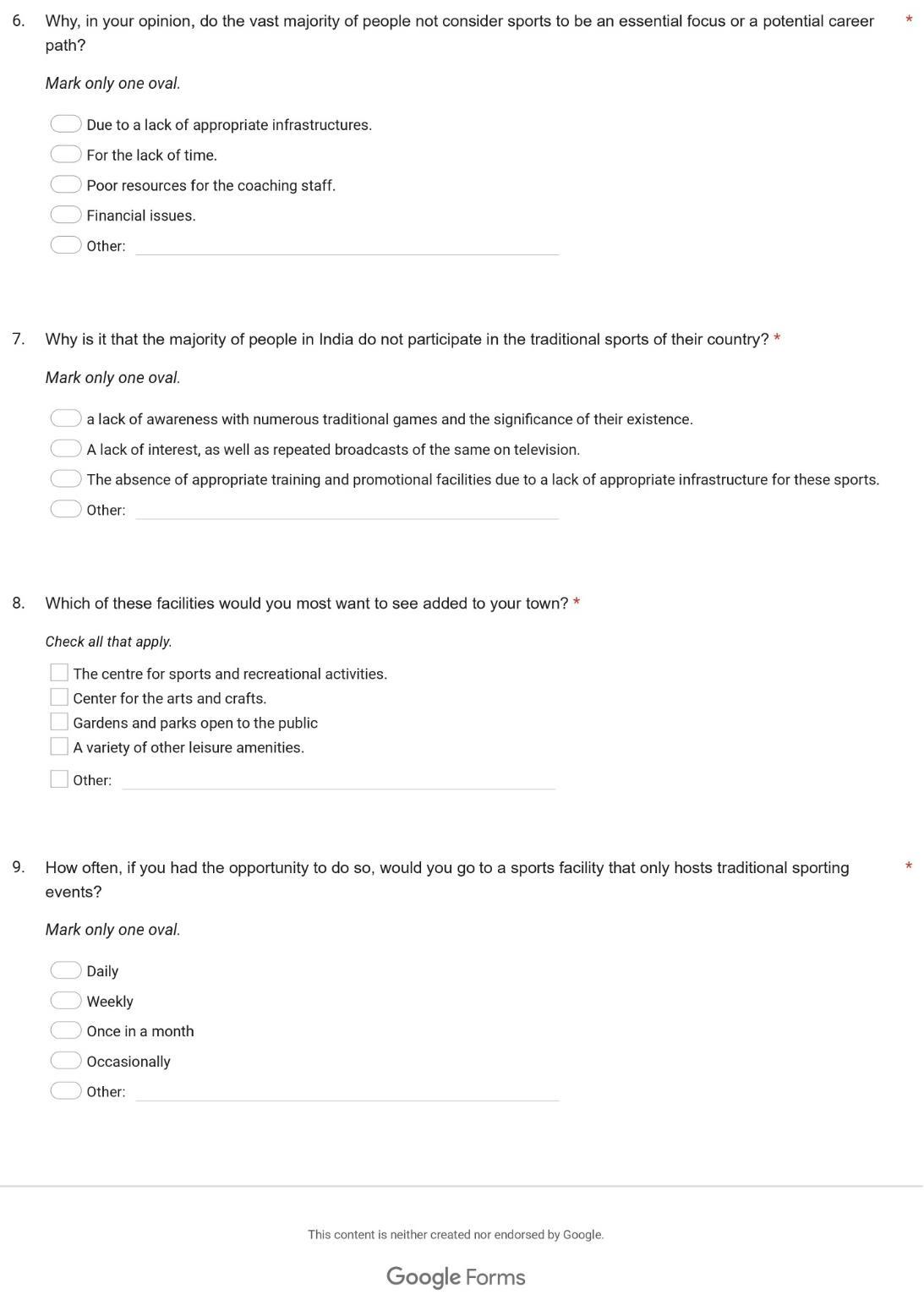
SPORTS COLISEUM Page | 55
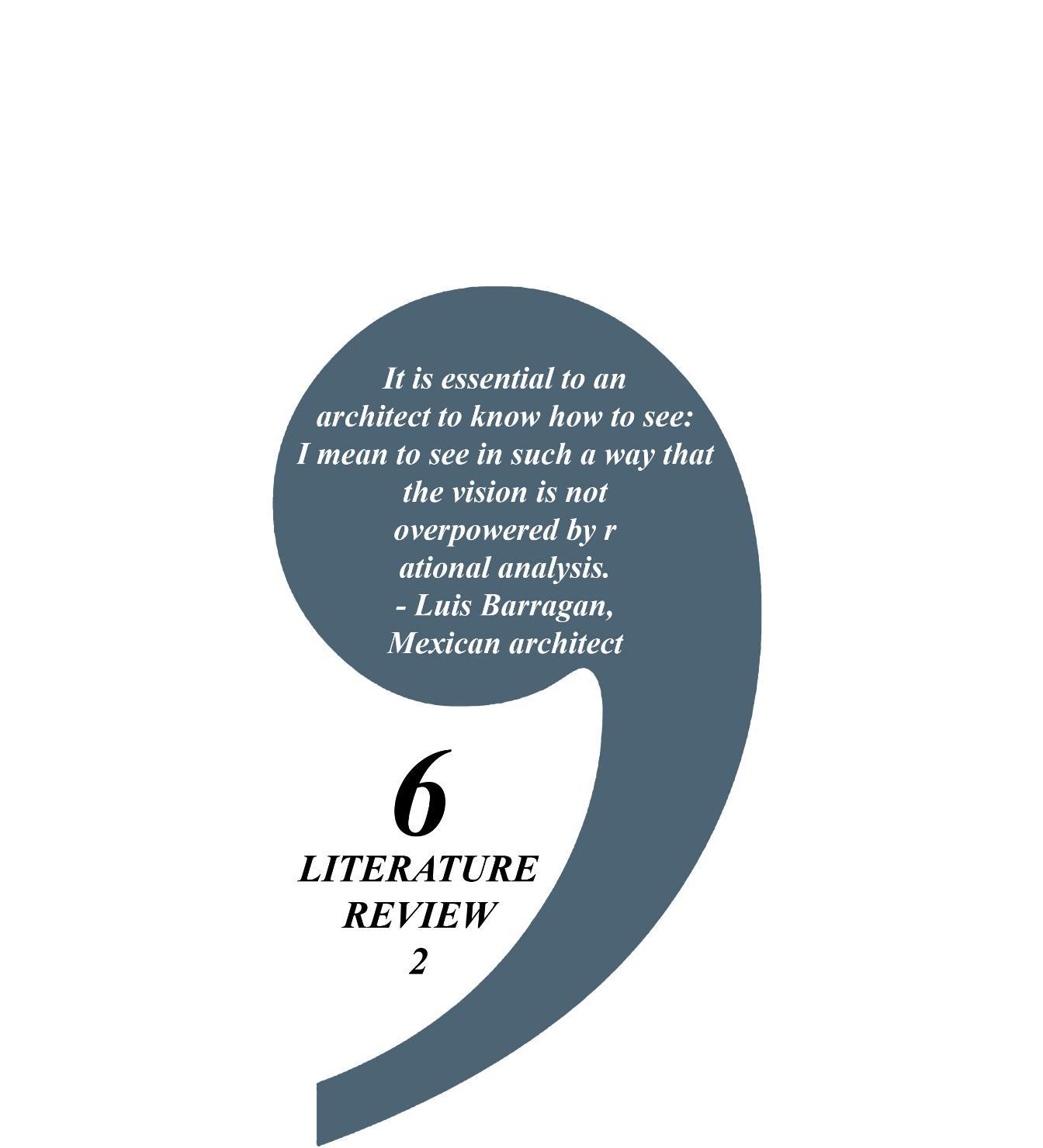
SPORTS COLISEUM Page | 56
6 LITERATURE REVIEW 2 -
6.1 CASE STUDIES
1.SHRI SHIV CHHATRAPATI SPORTS COMPLEX, BALEWADI, PUNE.
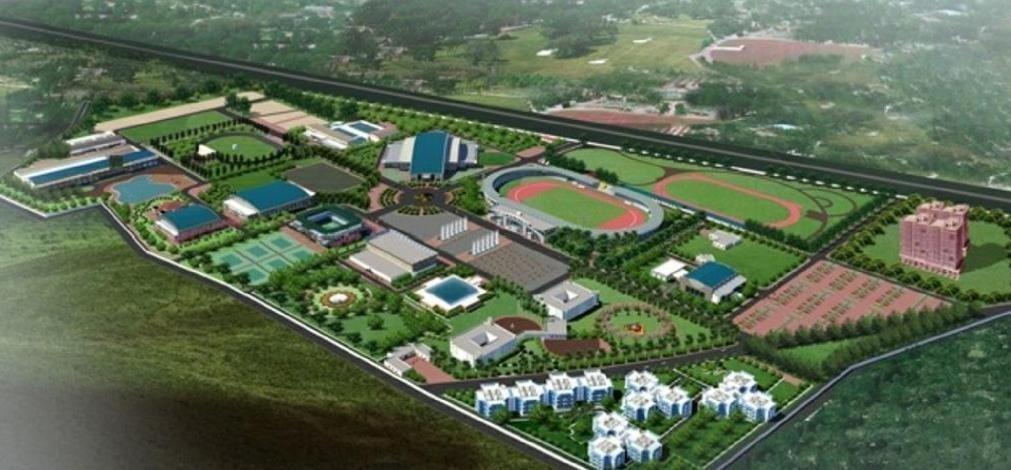
6.1 INTENT
To have a grasp of the many sports that may be played at a sports complex, as well as the general management of the complex and the required auxiliary areas, and the separation of spaces in terms of the zoning of those sports in relation to one another.
6.2 INTRODUCTION
An Indian sports facility may be found at Balewadi, Mahalunge, in the city of Pune. It is called the Shree Chhatrapati Sivaji Sports Complex. The complex can be found at Balewadi, which is located near Mahalunge Pune. From the complex, the city centre of Pune is around 14 15 kilometres away, while Hinjewadi, Pune is approximately 4 5 kilometres away. This facility served as the location for the Commonwealth Youth Games in the year 2008.
6.3 HISTORY
This facility was constructed in 1994 in preparation for the National Games, which were held in Pune that year. This location played host in 2008 to the Commonwealth Youth Games. In 2008, this venue played host to the World Junior Table Tennis Circuit with great success. This location played host in 2009 to the FIVB Men's Junior World Championship. Brazil came out on top and won. In addition to this, the city played host in 2009 to the FIBA Asia Under 16 Championship for Women.
SPORTS COLISEUM Page | 57
Fig.20 3d View Of The Complex
(Source:Https://En.Wikipedia.Org/Wiki/Shreeshivchhatrapatisportscomplex)
6.4 SITE LOCATION
The Shri Shiv Chhatrapati Sports Complex has a location that spans 63 acres in total. It is situated in Balewadi, which is on the outskirts of Pune. It is bordered to the east by a newly constructed national highway, to the west by the Mula river, and to the south by the already existent Sahyadri hills. It first opened its doors in 1994 and underwent a makeover in 2008. The Third Commonwealth Youth Games were held there in 2008, and it served as the site.
Fig.21 Location Map
(Source: Google Maps)
6.5 GENERAL INFORMATION
ADDRESS National Games Park, Balewadi, Pune, Maharashtra 411045
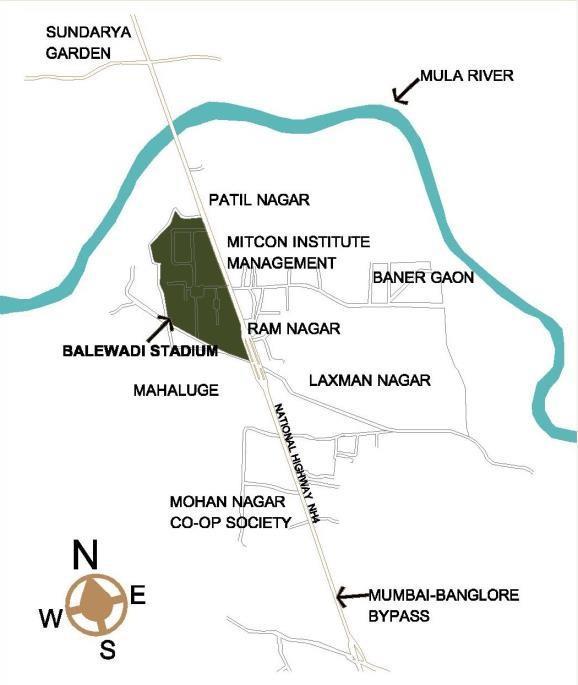
CAPACITY 22,000
OPENED 1995
OWNER Government of India TEAMS FC Pune, Pune FC, Bharat FC
ARCHITECT Shashi Prabhu & Associates OPERATOR Indian Olympic Association
SITE AREA 150 acres
6.6 DESIGN PHILOSOPHY
"The atmosphere and the sort of enclosure that the athlete is surrounded by have a greater influence on the athlete's level of motivation." The architect has made an effort to design a place that incorporates natural elements and serves to inspire athletic performance.
SPORTS COLISEUM Page | 58
6.7 DESIGN CHALLENGE
The most difficult aspect of the design of the sports complex was attempting to combine all of the arenas and open areas in such a manner that it would be able to accommodate spectators from all over the world.

6.8 SITE APPROACH
As the map on the right indicates, the facility can be accessible from a number of different locations thanks to its handy placement in the centre of Pune. It takes 17.8 kilometres to go to the facility from Pune Station, but it takes 57 kilometres to get to the airport in Pune. The journey will take you 45 minutes to go from the sports facility to the station, and from the station it will take you 57 minutes to get to the airport.
Fig.22 Proximity Chart
(Source: Author)
SPORTS COLISEUM Page | 59
6.9 SITE PLAN
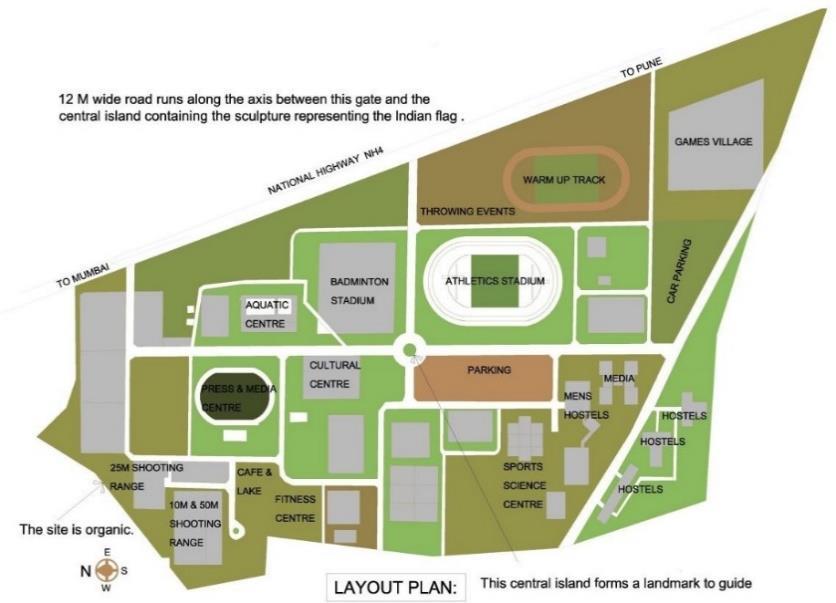
Fig.23 site plam
(Source: Https://En.Wikipedia.Org/Wiki/Shreeshivchhatrapatisportscomplex)
The site of the complex is done is grid pattern. The entry is from the north direction.
6.10 ZONING OF BUILDINGS
the facility may be reached from a variety of different areas because to its convenient placement in the middle of Pune, as the map to the right demonstrates. The facility can be reached from Pune Station in 17.8 kilometres, while the airport in Pune can be reached in 57 kilometres. From the sports facility to the station, the trip takes 45 minutes, and from there to the airport, it takes 57 minutes.
Fig.24 Zoning Layout
(Source: Https://En.Wikipedia.Org/Wiki/Shreeshivchhatrapatisportscomplex)

SPORTS COLISEUM Page | 60
6.11 CIRCULATION OF OUTDOOR
Fig.25 Circulation layout
(Source: Https://En.Wikipedia.Org/Wiki/Shreeshivchhatrapatisportscomplex)
A grid layout has been created for the mobility and circulation on the property. The NH 4 serves as the approach to the complex's entrance. There are two entry gates, however only one exit gate is available. Another entrance may be found on the east side of the building. The manytypes of movement are shown in the figure that can be seen above. The movement of vehicles is shown by the red lines, while the movement of pedestrians is indicated by the yellow lines. There is not a separate entry for delivery trucks at this location. The movement is straightforward and uncomplicated as a result of the grid pattern that it follows; yet, there are no diagonal interlinkages. Because of this, finding the quickest route to any location is difficult.
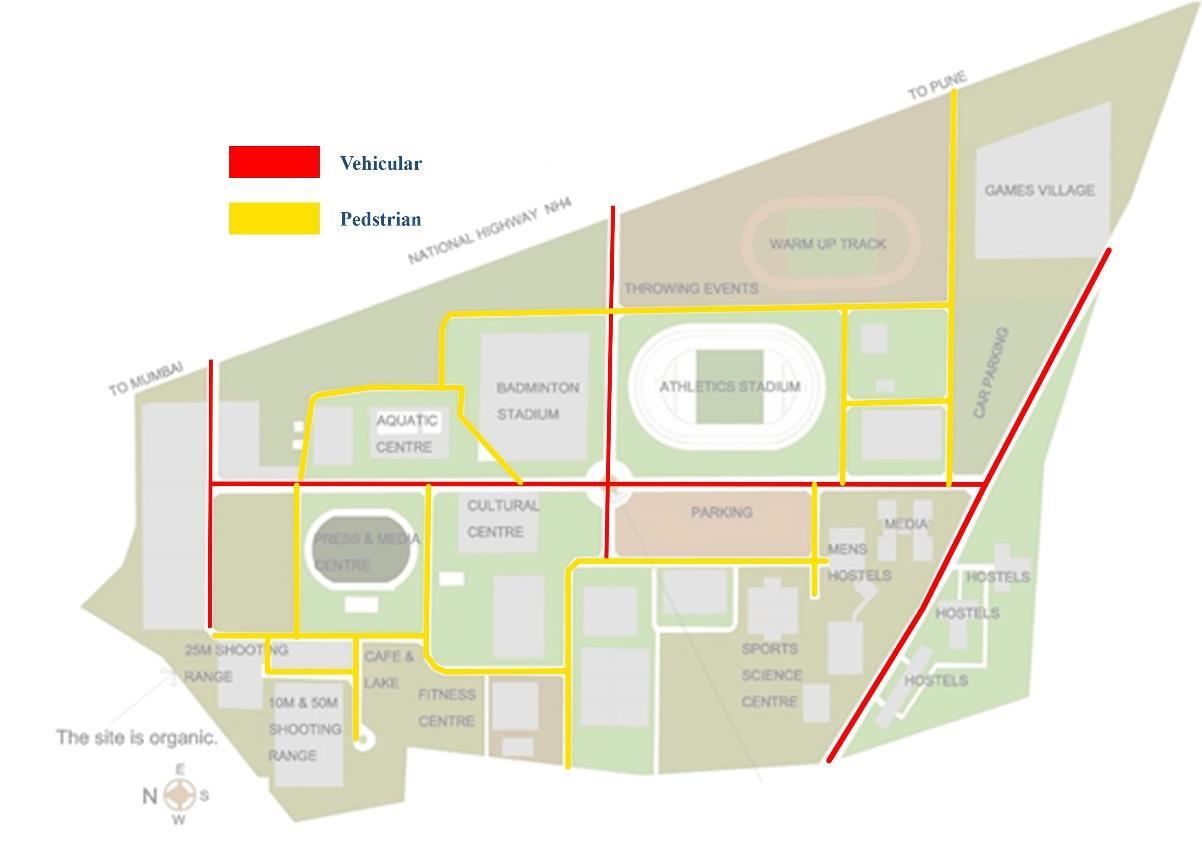
SPORTS COLISEUM Page | 61
6.12 FACILITIES
Sports Facilities
VELODROME
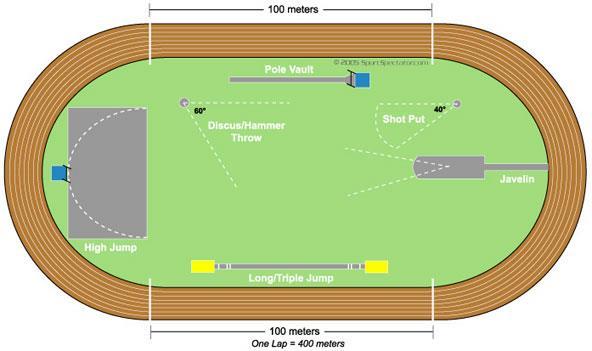
The 333.33 m or 1,093.6 ft. velodrome is outdoor and the surface is made of concrete. While it was a prime venue for the 3rd Nationals Games in the year 1993 94 it has never been a place for any major events thereafter, and was left unused.
ATHLETIC STADIUM
Fig.27
The athletics stadium can accommodate around 11,000 people at one time, is illuminated by floodlights, and has an eight lane track.

HOCKEY FIELD
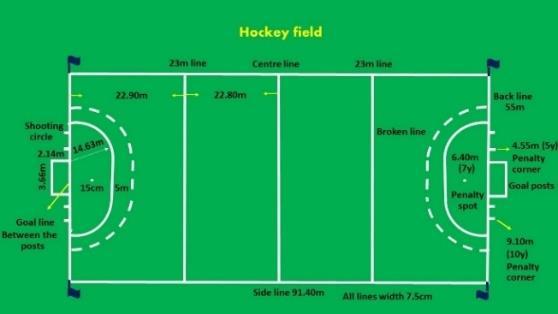
Fig.28
Fig.29
The hockey field isn't used much and lacks seating. This field is now a guest seating area.
(SOURCE Https://En.Wikipedia.Org/Wiki/Shreeshivchhatrapatisportscomplex)

SPORTS COLISEUM Page | 62
Fig.26
BOXING ARENA
Fig.30
Fig.31
Boxing venue features 3 rings, 5 warm up rings, and 3500 seats. This air conditioned hall contains changing rooms.
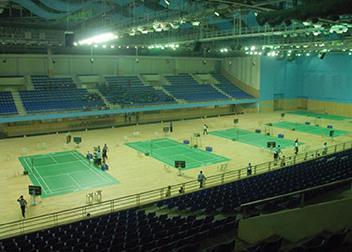
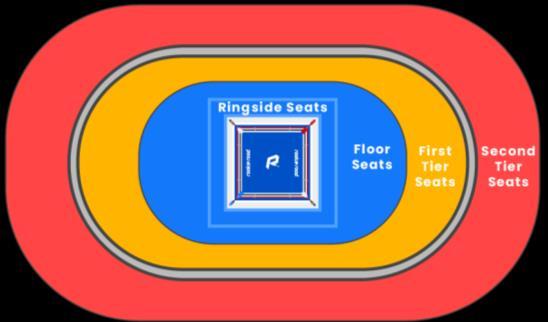
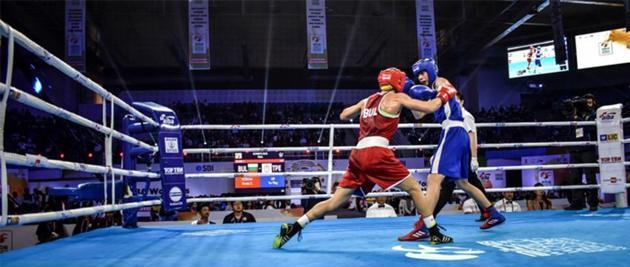
TENNIS COURT
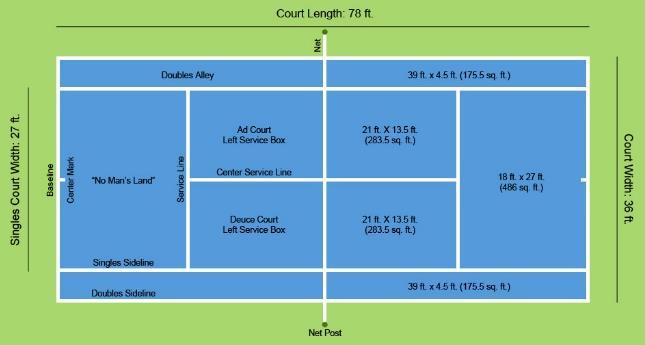
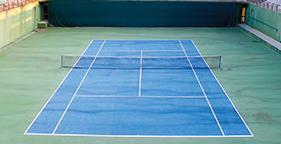
Fig.32
Fig.33
The1500-personhall.Fourcompetitivetables and fourwarm-uptables. This air-conditioned hall contains changing rooms. VIP seating and lounges.
BASKETBALL
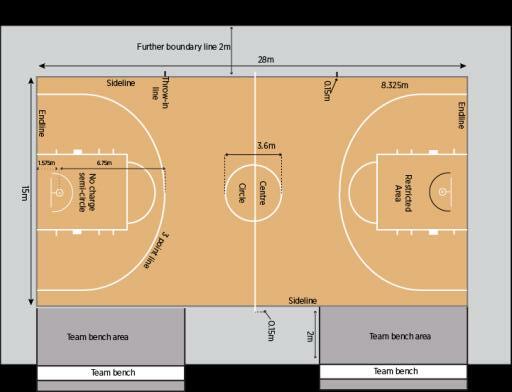
Fig.34
Fig.35
SPORTS COLISEUM Page | 63
(SOURCE Https://En.Wikipedia.Org/Wiki/Shreeshivchhatrapatisportscomplex)
The basketball arena features 5 courts, 4 warm-up, and 4000 seats. This air-conditioned hall contains changing rooms.
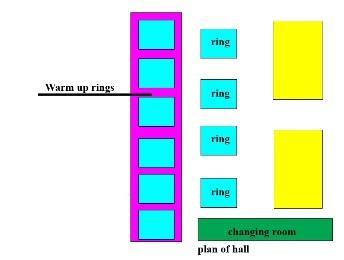
TABLE TENNIS
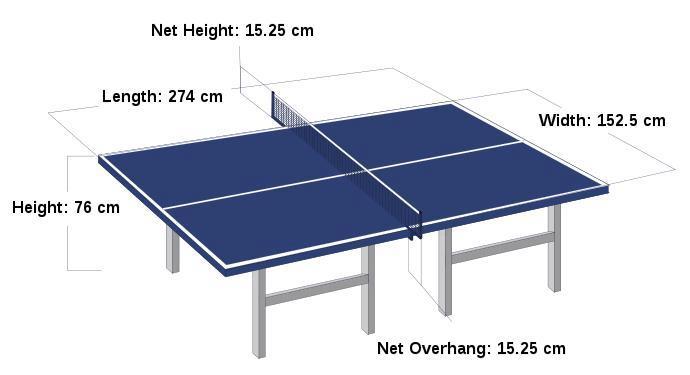
Fig.36 Fig.37
The1500 personhall.Fourcompetitivetables andfourwarm uptables. This air conditioned hall contains changing rooms. VIP seating and lounges.
SHOOTING RANGE
Fig.38 Fig.39
Thefacilityhas 15different shootingranges and offersspacefor1,500peopletotal. ISSF guidelines, which govern the world championship, were followed in the construction of the ranges. There are three ranges available: 50 m, 25 m, and 10 m.
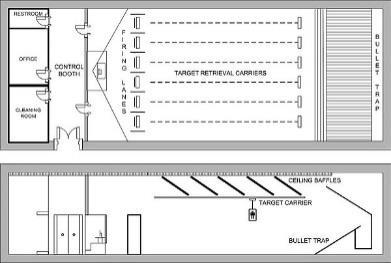
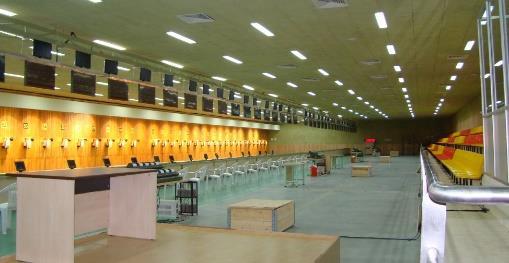
WRESTLING

Fig.40 Fig.41
(SOURCE Https://En.Wikipedia.Org/Wiki/Shreeshivchhatrapatisportscomplex)
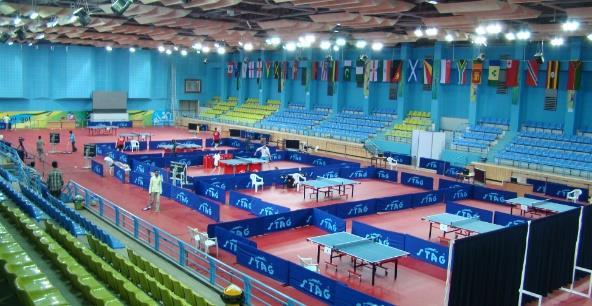
SPORTS COLISEUM Page | 64
The Wrestling Hall has four rings, and six warm-up rings with a seating capacity of 4,400 people. This has seating and lounges for VIPs. This also has change room for players. This is an air conditioned hall.
WEIGHTLIFTING
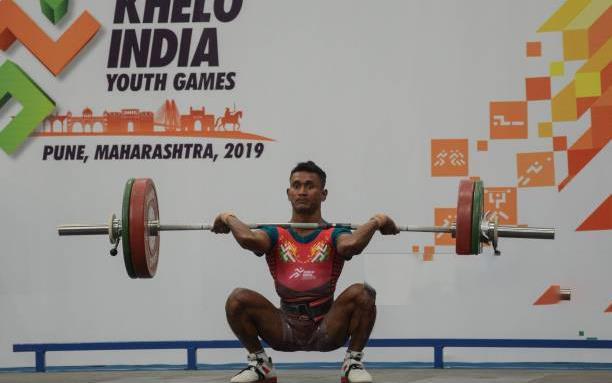
Fig.42 Fig.43
This hall accommodates 3000. Air conditioned, with one competition podium and 10 warm up platforms. VIPs have seating and lounges. Competitors have a locker room.

MAIN STADIUM
The Athletic stadium has a seating capacity of roughly 11,000 people at a time, Flood lights and an 8 lane track.
Fig.44
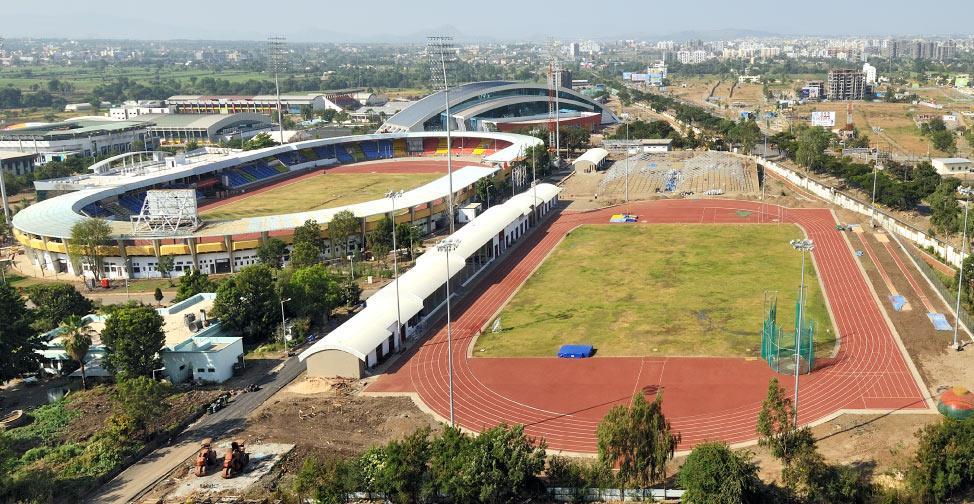
SPORTS COLISEUM Page | 65
(SOURCE Https://En.Wikipedia.Org/Wiki/Shreeshivchhatrapatisportscomplex)
Fig.45
The above shown figure shows the plan of main stadium and the other figure shows the zoning of sitting plan inside the stadium. The zoning shows that the blus colour is planned for media and spectators,grey for common people,yellow for VIPs,and red for specially abled.
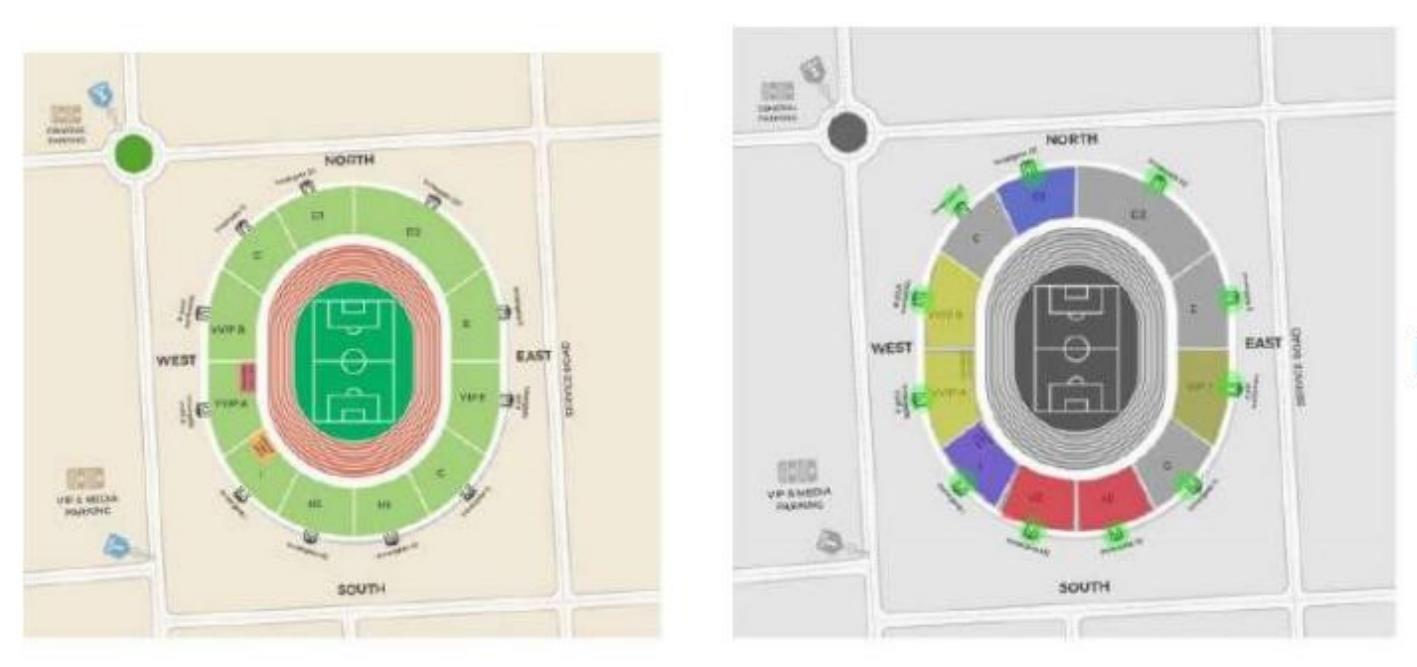
STRUCTURAL SYSTEM USED
Fig.46
A steel structural system is opted for the roofing design of the seating area of the stadium. Steel is string both in tension and compression and hence is used for long span structures.
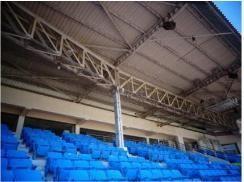
SPORTS COLISEUM Page | 66
(SOURCE Https://En.Wikipedia.Org/Wiki/Shreeshivchhatrapatisportscomplex)
MATERIAL USED

SUPPORT SERVICES
I. Residential areas include 13 apartments which lies separate corner. It has all the facilities.
II. Hostel faclities are separare for men and women. The blocks are near to each other and lies near to residential colony.
III. Separate staff quarter is provided.
IV. There is a restaurant inside the camplex. Its capacity is around 300 people
V. The services like HVAC plant room,electrical area in separate zone.
VI. The gymnasium and fitness centre is near the Hostel complex It has all the facilities of modern equipments.

SPORTS COLISEUM Page | 67
Fig.47
(SOURCE
Https://En.Wikipedia.Org/Wiki/Shreeshivchhatrapatisportscomplex)
AREA PROGRAMMING AND DESIGN CAPACITY

Fig.48 area program
(Source: author)
(SOURCE Https://En.Wikipedia.Org/Wiki/Shreeshivchhatrapatisportscomplex)
SPORTS COLISEUM Page | 68
6.13 OBSERVATION
Pros
The planning of spaces and its outside environment is done in significant way.
The traffic movement are well designed.
Thezoningbetweensportsarenaandresidential areasaredoneat fardistancemaking the area noise free.
The use of natural ventilation is used in better way.
All grounds are oriented in N S direction.
Cons
The stadiums are not designed according to futuristic re development.
It lacks in several modern infrastructure facilities.
The stadiums lacks architectural aesthetics and looks outdated.
The number of visitors increases during the international events which become over crowded to control.
The complex lacks cricket ground.
The main administrative building is attached to the athletic stadium.
No recreational spaces for students staying in hostels.
SPORTS COLISEUM Page | 69
2. ARMY SPORTS INSTITUTE, PUNE
6.2.1 INTENT
To have an understanding of the many auxiliary spaces that are necessary for sports activities and to acquire an understanding of the ways in which academic pursuits may be included into a sporting routine.
6.2.2 INTRODUCTION AND LOCATION




Fig.49 Location Map
(Source: Google Earth)
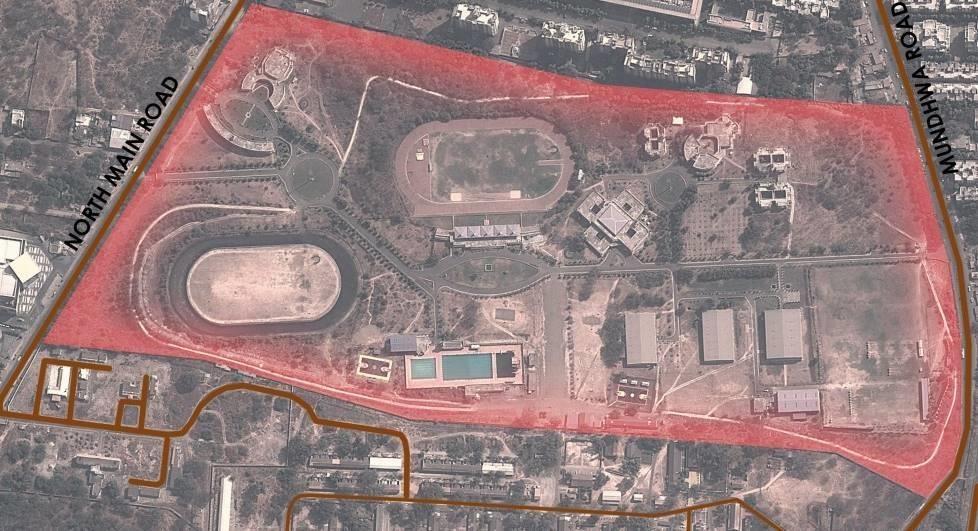
Located in the Koregaon Park neighbourhood of Pune in the district of Pune in the Indian state of Maharashtra is the Army Sports Institute, Mundhwa. You may reach there in about 10 minutes from the Pune International Airport, which is just around 8 kilometres away. It's not far to go to Satara, Mumbai, or Pune. Pune is home to India's first sports academy, which aims to transform the country's athletic landscape.
Fig 50 site Area Analysis
(Source: Author)
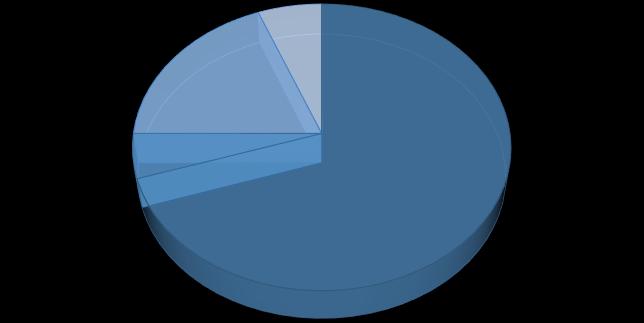
SPORTS COLISEUM Page | 70
Landscap e space 70% Roads and Parking 5% outdoor sports 19% Built space 6%
6.2.3 OVERALL ZONING AND PLANNING
Fig. 51 Site Area Analysis
(Source: Http://Www.Armysportsinstitute.Com)
The outside of the facility is accessible by one of three primary doors that go straight into the main arena. When performing various kinds of sports in a properly segregated environment, distinct areas or places are designated for each sport. A separate location, apart from the athletic facilities, is designated for the hostel building to be built.
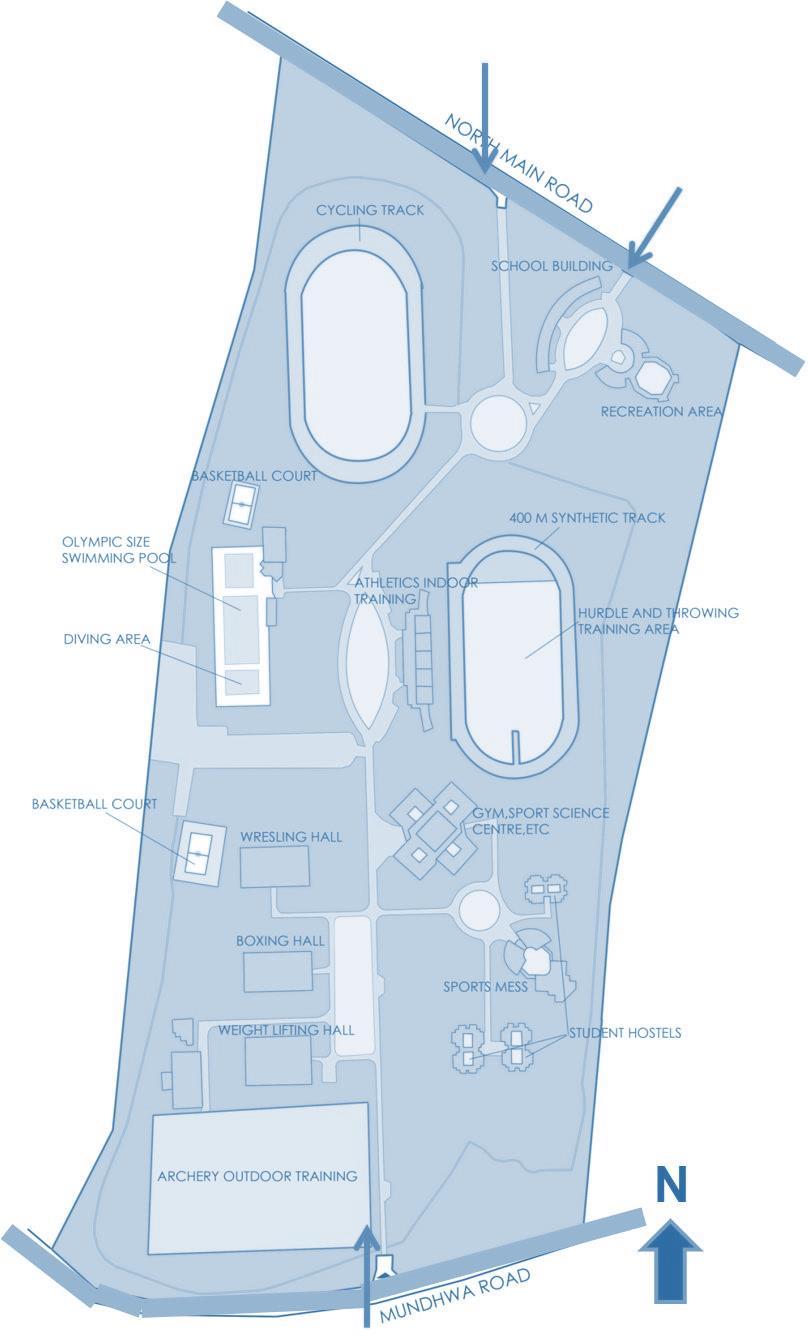
SPORTS COLISEUM Page | 71
Fig.52 Overall Site View
(Source Http://Www.Armysportsinstitute.Com)
6.2.4 ACADEMIC WORKING STRUCTURE
After passing a medical exam and demonstrating their athletic prowess, talented young male athletes (referred to as "Boys") have the opportunity to participate in the programme.
1) Recruit in the Boys' Sports Cadet Corps.

Age: between 10 and 16 years old.
The sixth through tenth grades of schooling.
Medically fit.
Winners of medals in the various ASI sports.
Superb driving ability.
2) Outstanding Civilians Sport men.
16 24 year olds.
Completed the 10th year of schooling.
Inducted as a Direct Havildar/Junior Subedar.
Winners of medals in the various ASI sports.
Accomplishment in Sport Representing Your Country Abroad
3) Science of Sporting Events
ASI's Sports Science Faculty helps athletes and coaches improve their game by using cutting edge techniques from the field of sports science.
Assessment and enhancement of human performance.
Moving all of the necessary tools for treating both short and long term injuries on the road.
Research facility for human betterment.
Medical center's physiotherapy division.
SPORTS COLISEUM Page | 72
Psychology lab.
Relaxation room.
Hydrotherapy facility.
Hypoxic chamber
Cameras capable of analysing motion in all three dimensions.
The detention centre only has space for 10 inmates.
Compare and contrast a sauna with a stream.
The Division of Food, Nutrition, and Dietetics.
Rehabilitation gym.
Psychological, biomechanical assessment.
A multimedia area, a hot bath, an ice machine, and a wall bar are all available.
SPORTS COLISEUM Page | 73
3.ANDHERI SPORTS COMPLEX

6.3.1 INTENT
to get familiar with the activities offered at a sports complex as well as the layout of the building.
6.3.2 INTRODUCTION
The Andheri Sports Complex, also called Shahaji Raje Krida Sankul, is a multi use building on Veera Desai Road in Andheri West, Mumbai, India. It is also known as the Shahaji Raje Krida Sankul. Those schools without adequate facilities to host athletic competitions commissioned its construction in 1988 at a cost of Rs. 30 crore. The facility hosts national level competitions in sports including squash, boxing, tennis, and karate. There is a diving pool with four different depths within the sports complex, and the swimming pool is Olympic sized. It underwent renovations in 2016 to include Mumbai Football Arena, a state of the art soccer stadium built to FIFA standards.
6.3.3 SITE LOCATION
Fig.52 Location
(Source: Google Map)
The Andheri Sports Complex also known as Shahji Raje Krida Sankul is a multi purpose facility located on Veera Desai Road andheri west. It was built in 1988 at rs 30 crore for schools that lacked the necessary infrastructure to hold sports meets. It is used for both naional level tournaments like squash,boxing,tennis and karate.
SPORTS COLISEUM Page | 74
6.3.4 MASTER PLAN

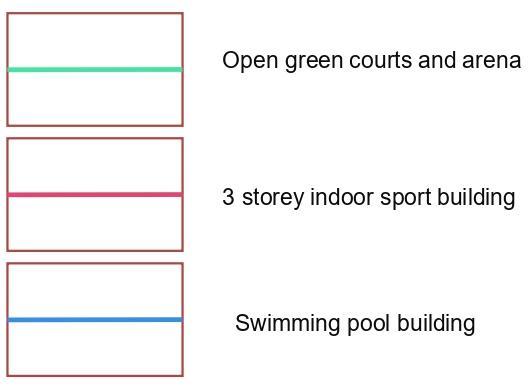
Fig.53 Master Plan (Source: Author)
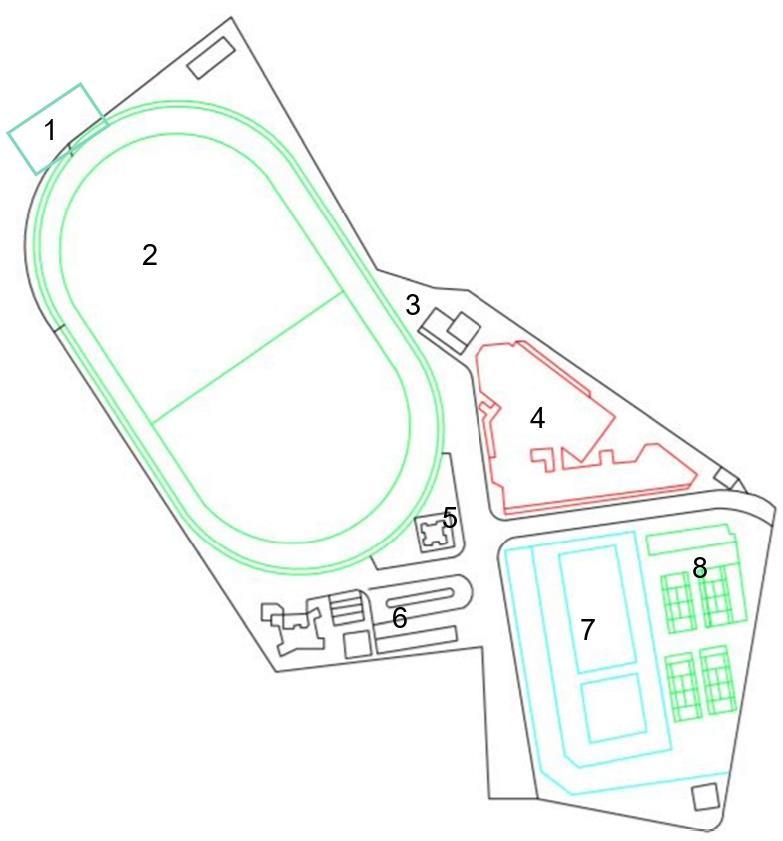
SPORTS COLISEUM Page | 75
CIRCULATION
Fig.54 Circulation Map
(Source: Andheri Complex Website)
Three major entities closely placed together
A solid concrete road of which either side are the buildings
A combination of hardscape and softscape.
football arena
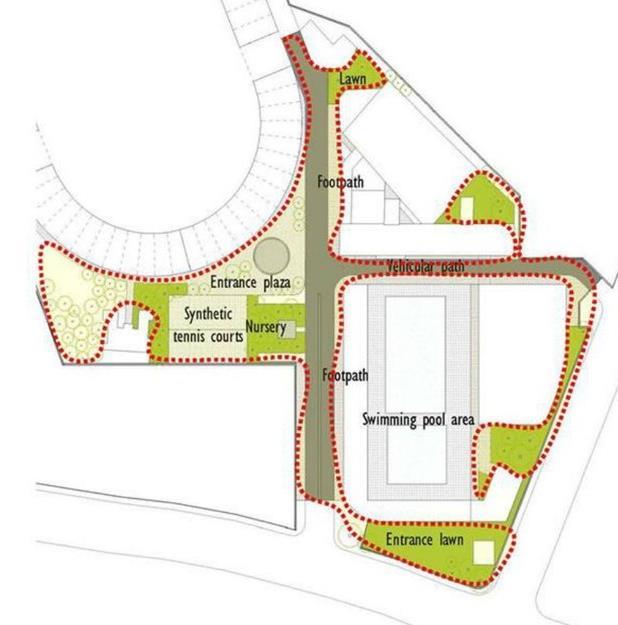
training centre
swimming pool area.
SPORTS COLISEUM Page | 76 6.3.5
•
•
1
2-sports
3
Sports Facilities
FOOTBALL ARENA
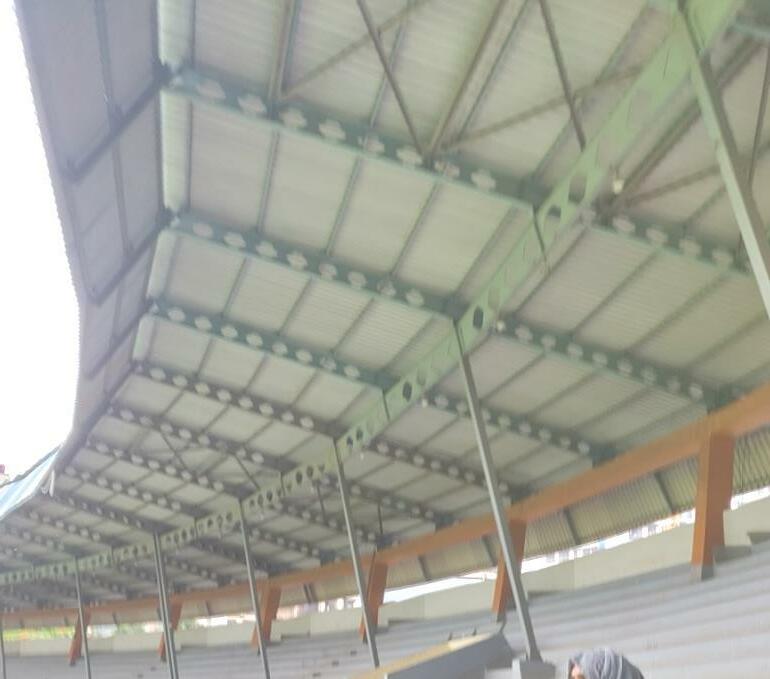
(width)

SPORTS COLISEUM Page | 77 6.3.6
(i)
Fig.55 Capacity 8000 Surface natural grass The football arena made as per the FIFA guidelines Its dimensions a) Touch line(length) 90 to 120m b) Goal line
45 to 90m Fi.g. 56 Source: https://en.wikipedia.org/wiki/Andheri_Sports_Complex RCC Columns Castellated beams Seatings Steel columns
TRAINNG CENTRE


ACCOMODATED IN THE CENTRE
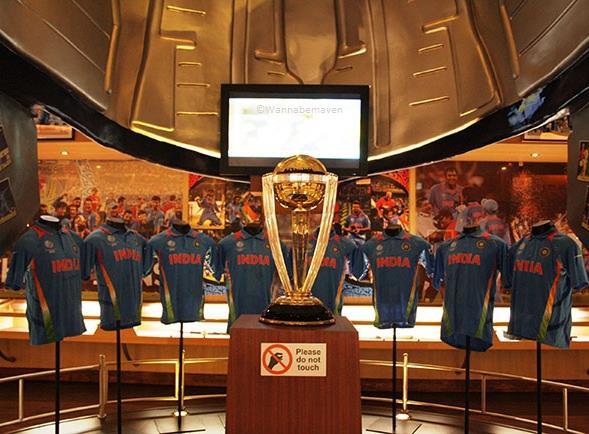

SPORTS COLISEUM Page | 78 (ii) SPORTS
SPORTS
• BADMINTON • GYM • GYMNASTICS • SQUASH • TABLE TENNIS • KARATE • YOGA • SKATING Fi.g. 57 Fi.g. 58 (iii)BADMINTON Fi.g. 59 Fi.g. 60 The ceiling height for major tournaments must be 39ft above the floor of the court Any girder or lighting must be higher than the sanctioned height so as not to obstruct play. Dark painted ceilings Source: https://en.wikipedia.org/wiki/Andheri_Sports_Complex
(iv)KARATE
Kumite ring dimension
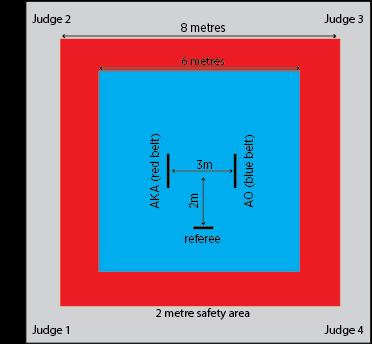
Fi.g. 61
Fi.g. 62
Source: https://en.wikipedia.org/wiki/Andheri_Sports_Complex
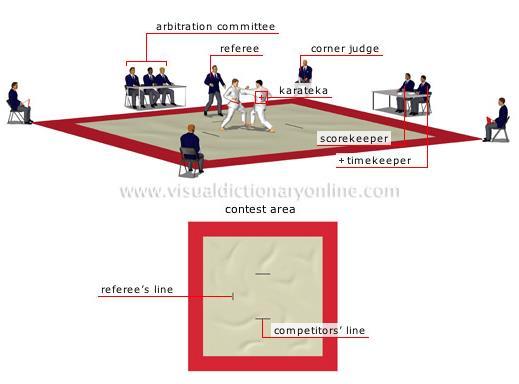
SPORTS COLISEUM Page | 79
(v) SQUASH
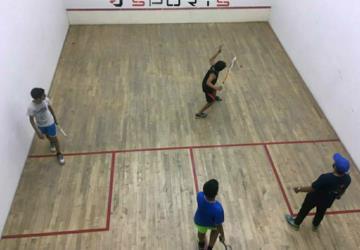
Fi.g. 63 Fi.g. 64 Court and it’s dimensions with wooden flooring.
(vi)TABLE TENNIS

Fi.g. 65 Fi.g. 66
It is possible to play with less than 5 feet of clearance at each end of the table and 3 feet on each side.
If the players are experienced or aggressive they may wish to stand farther behind the table
Dimensions for the able tennis table and also the area around the table
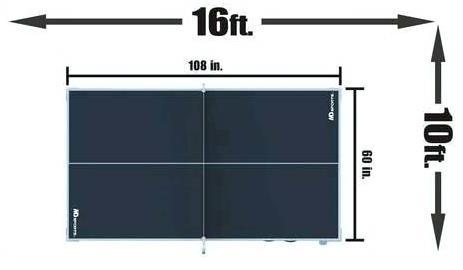

The light source shall not be less than 5 mts. from the ground.
Source: https://en.wikipedia.org/wiki/Andheri_Sports_Complex
SPORTS COLISEUM Page | 80
LAWN TENNIS


SWIMMING POOL
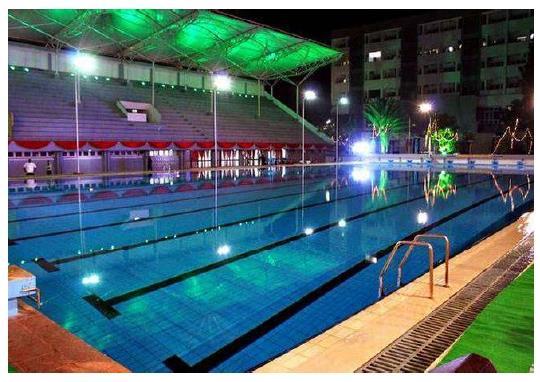
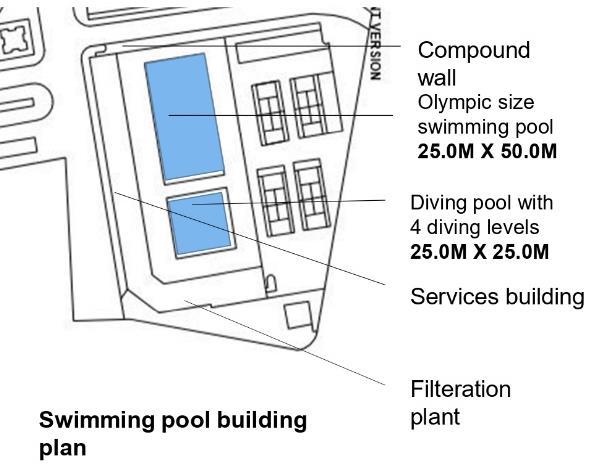
SPORTS COLISEUM Page | 81 (vii)
Fi.g. 67 Fi.g. 68 Lawn tennis stadium behind the swimming pool (viii)
Fi.g. 69 Fi.g. 70 Source: https://en.wikipedia.org/wiki/Andheri_Sports_Complex
4. GOREGAON SPORTS CLUB
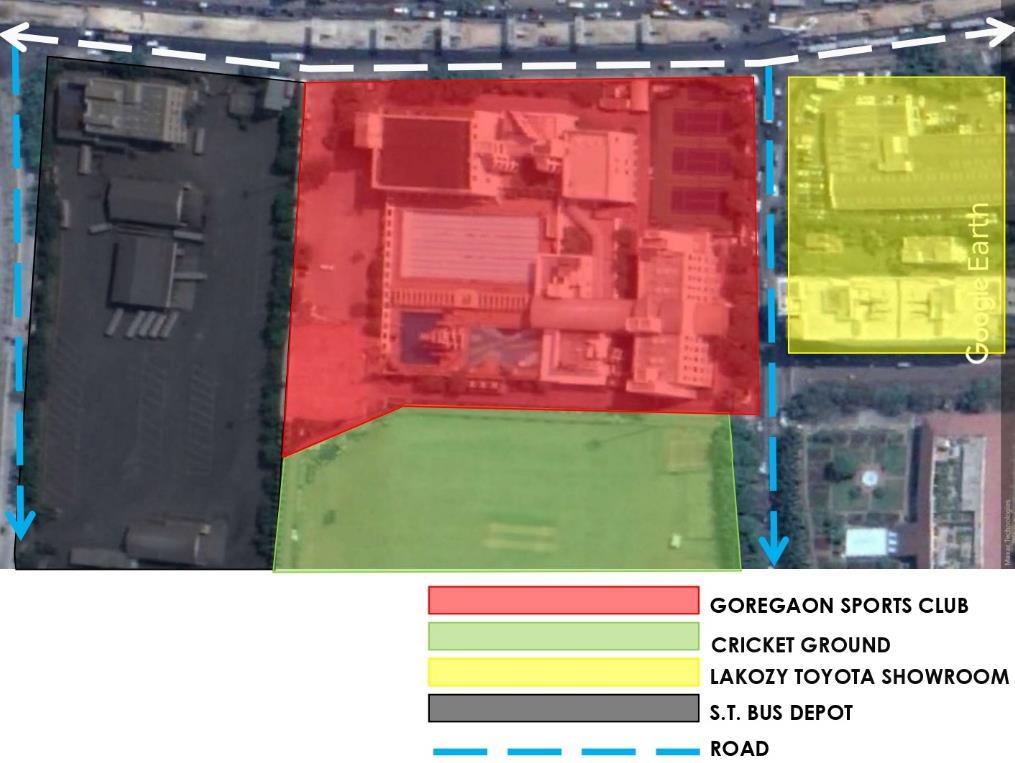
6.4.1 INTENT
To have a grasp of the several auxiliary areas that are required for athletic activities and to have an understanding of the various ways in which academic pursuits may be included into a sporting routine.
6.4.2 INTRODUCTION
A sixth of the site is for outdoor sports including cricket, football, ground tennis, basketball, volleyball and playground.
the main feature of this facility are its olympic capacity swimming and diving pools along with a recreational pool.
numerous multipurpose game halls accommodating indoor sports such as badminton, table tennis, squash courts, billiard, board games, billiards, snooker, chess, carroms, skating, air rifle shooting etc.
6.4.3 LOCATION
Fig.71 Location
(Source: Google Map)
SPORTS COLISEUM Page | 82
6.4.4 SPORTS FACILITIES
6.4.5 FLOOR PLANS
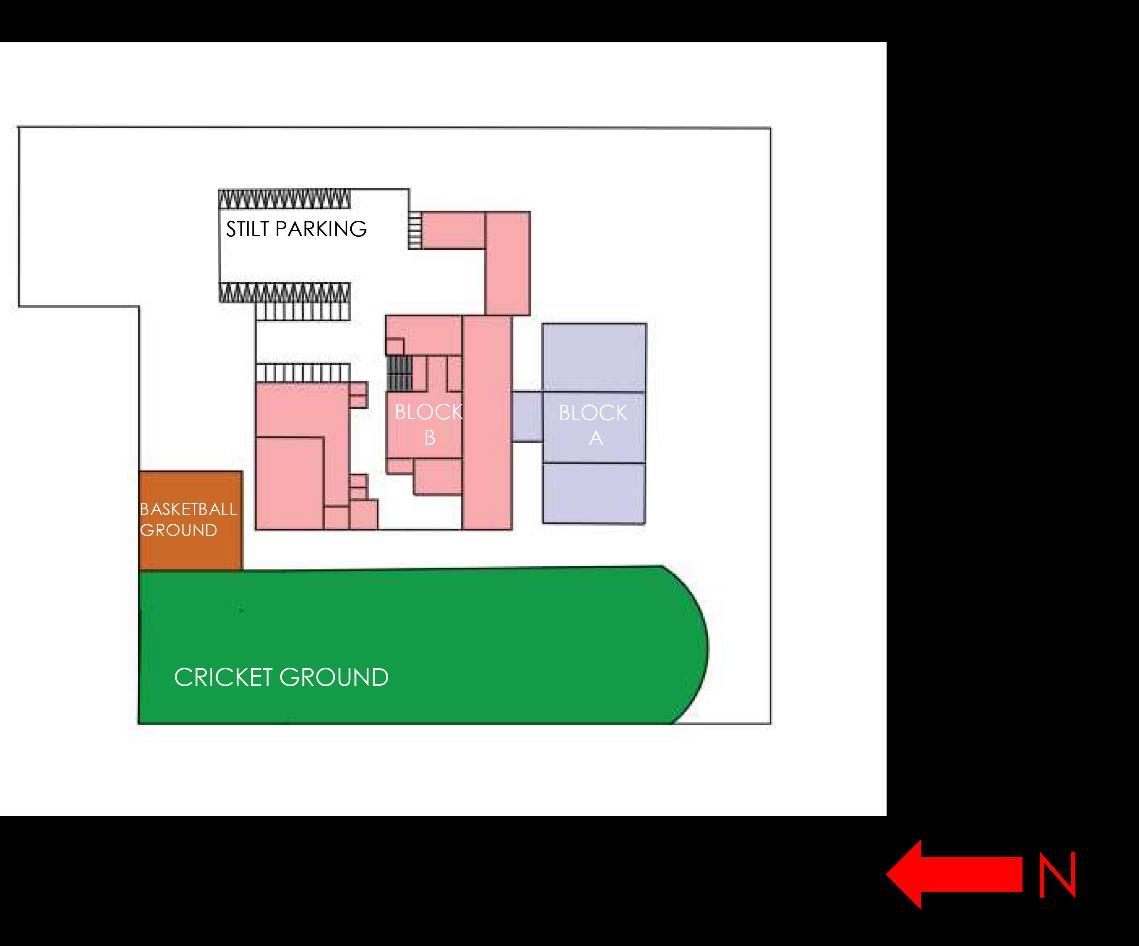

Fig.72 Space Program
(Source: Author)
Fig.73 Floor Plans
(Source: Author)
SPORTS COLISEUM Page | 83
Fig.74 Floor Plans
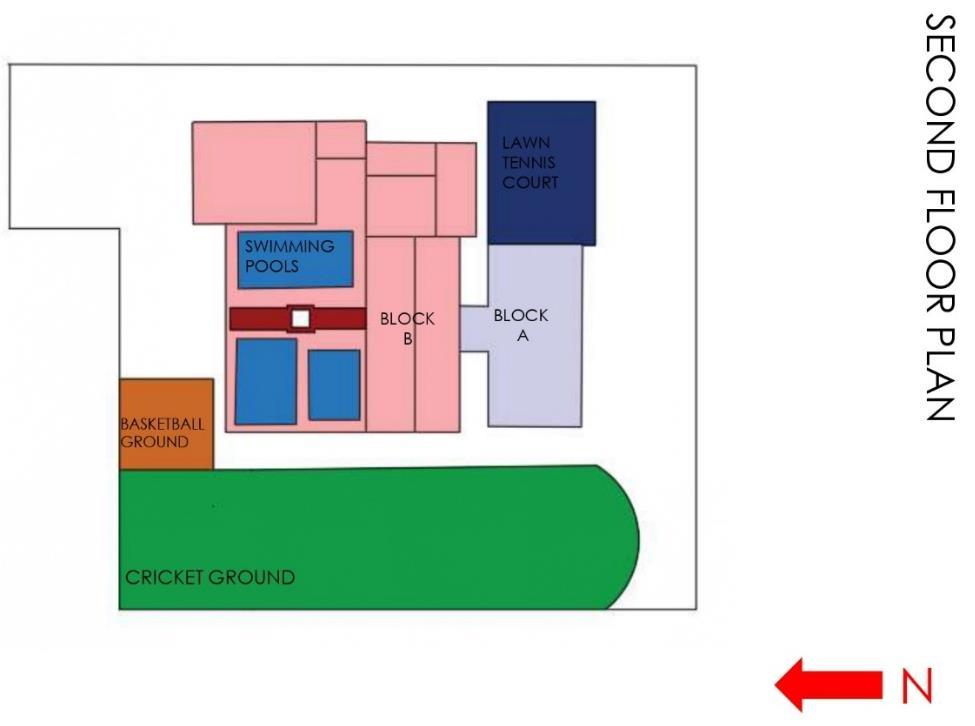
(Source: Author)

SPORTS COLISEUM Page | 84
BLOCK A
BANQUET HALLS X2
LIBRARY
CARD ROOM
RESTAURANTS X2
ROOMS X19
SMOKING AREAS X2
BLOCK B
GYM
SWIMMING POOL X3
BADMINTON COURT
TABLE TENNIS COURT, CAROM AND CHESS
TENNIS COURT
CAFETERIA AND RESTAURANT
SNOOKER HALL
SQUASH
SPORTS COLISEUM Page | 85
BOOK CASE STUDIES
5. INDIRA GANDHI SPORTS ARENA, NEW DELHI
6.5.1 INTENT
Studying the many supporting spaces needed in addition to the playing grounds in a sports complex, such as locker rooms, concession stands, and showers, is essential to managing and planning for an effective sports facility.
6.5.2 INTRODUCTION AND LOCATION
Fig.75 Location Map
(Source: Location Map Google Maps)
The Indira Gandhi Arena may be found close to both the Ferozshah Kotla citadel and the Delhi Secretariat (to its east) (to its West). It may be found at the Indraprastha Estate in New Delhi, which is located on the eastern outskirts of the city. It is the largest indoor sports stadium in India in addition to being the third largest in all of Asia. In all, it encompasses 102 acres of land.
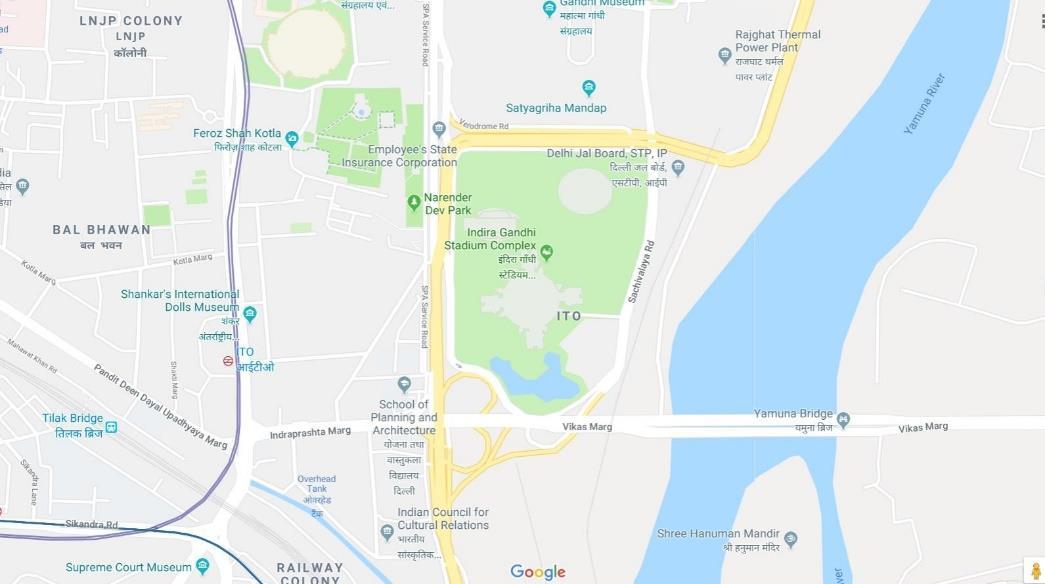
SPORTS COLISEUM Page | 86
6.5.3 OVERALL CIRCULATION, ENTRY, EXITS, ZONING AND PARKING
Fig.76 Floor Plan
(Source: Archdaily)
Spectators, journalists, players, support personnel, game officials, VIPs, and athletes' families all have their own designated access and leave points. A variety of parking options are available, all of which are flexible based on demand. Athletes may use the available open areas to get warmed up.

SPORTS COLISEUM Page | 87
6.5.4 PLANNING AND OTHER DETAIL
An administrative building is one of the three basic building blocks that make up the entire sports complex. These building blocks are linked to one another via an engaging circulation pattern and calming landscapes.
Indoor stadium
badminton, Volleyball, kabaddi, boxing, basketball, and gymnastics are just few of the sports that are practised. This venue can accommodate up to 27,000 people. One indoor stadium and two separate warm up facilities make up the competitive venue. A retractable soundproof and fireproof synthetics wall allows the stadium to be separated into two equal halves, allowing for the hosting of two sporting events at the same time. Six locker rooms, four VIP lounges, a media room, and a medical facility may be found in each section. The arena has metal halide lights that provide 1,600 lux lumens of light. The 4,680 wooden arena is a state of the art playing surface.
Fig.77 zoning (Source: Archdaily)

SPORTS COLISEUM Page | 88
Fig.78 Section
(Source: Archdaily)
Wrestling stadium
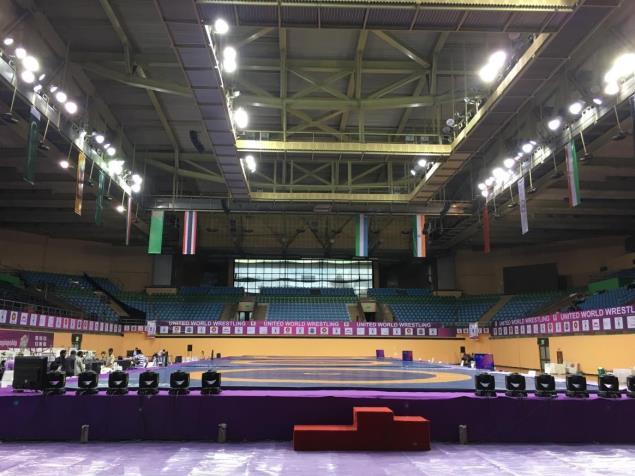
It can accommodate as many as 6,000 people. A huge Multipurpose hall and a smaller warm up hall are included (130m x 40m).
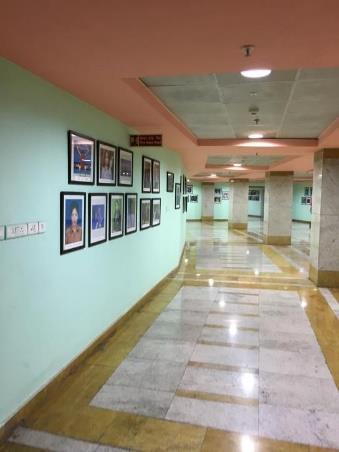

Fig.79 spaces
(Source: Archdaily)
Fig.80 spaces
(Source: Archdaily)
SPORTS COLISEUM Page | 89
6. AUSTRALIA SPORTS INSTITUTE, NEW SOUTH WALES.
6.6.1 INTENT
In order to comprehend zoning and the separation of pedestrian and automobile traffic, we must learn to compartmentalise our areas. As an additional goal, you should learn about the importance of considering players' needs for living facilities while designing a sports complex.
6.6.2 INTRODUCTION AND LOCATION
Fig.81 Location Map (Source: Google Earth)
The capital of New South Wales is where you'll find it. The Australian Institute of Sport, sometimes known simply as the AIS, is a training facility for athletes in Australia. The Institute's headquarters in Canberra have been there since they first opened their doors in 1981. (the capital city of Australia). Although the majority of the institute's programmes can be found in the northern suburb of Bruce, which comprises 163 acres (6,59,638 square metres) of land, some of the institute's other programmes can be found in other cities in Australia.
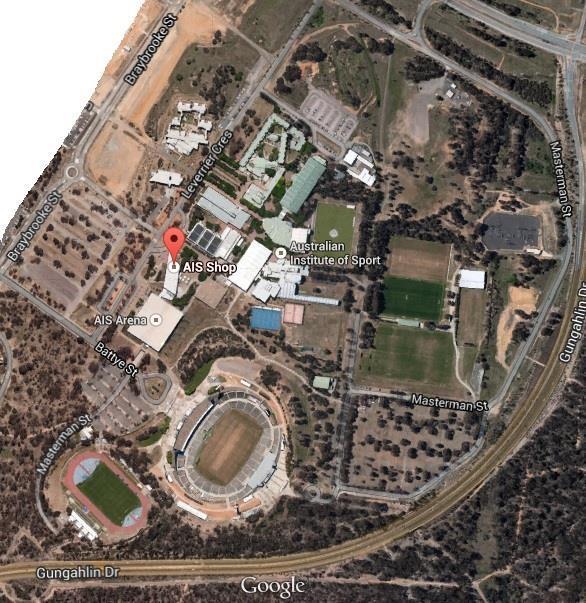
SPORTS COLISEUM Page | 90
Fig.82 Floor Plan (Source: Archdaily)
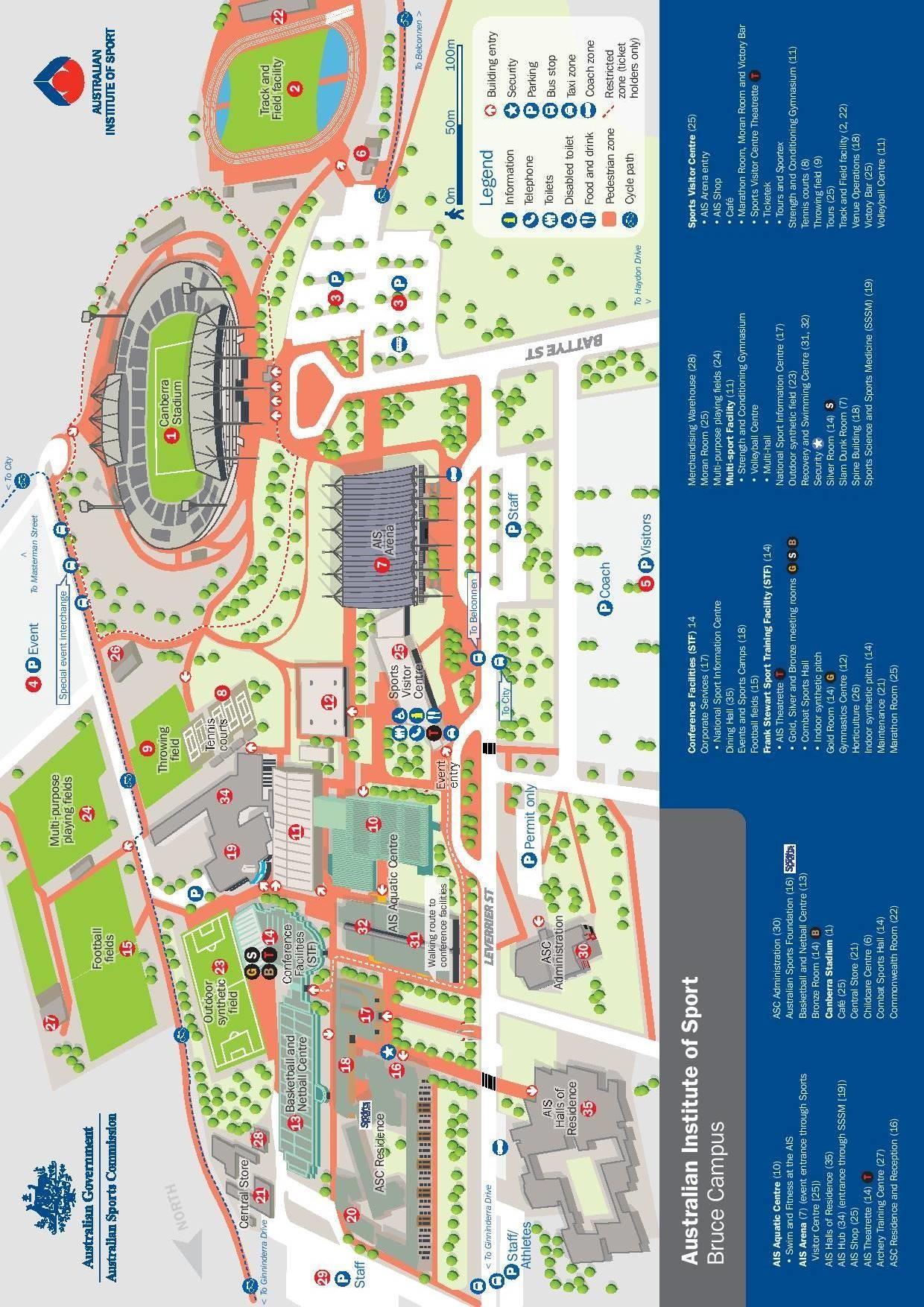
SPORTS COLISEUM Page | 91
There are distinct areas designated for each sport, as well as individual playing fields accessible outside for practically all of the sports. AIS arena Indoor stadium is the name of the structure where a variety of different forms of indoor sports are played. Along with the administrative building and the residential facilities for athletes, the site is home to an aquatic centre as well. Throughout the campus, suitable separate sections have been delineated to facilitate correct vehicle and pedestrian circulation. Additionally, taxi and bus stations have been placed at different locations inside the property. Parking is made available in a variety of locations according to the requirements.

AIS Arena

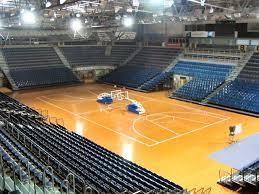
Fig.83 Area Analysis
(Source: Author)
One of the architectural highlights is a suspended concrete panel ceiling that weighs 1200 tonnes and is maintained by 12 steel masts and 36 supporting wires. The length of the roof's span is 100.4 metres. In order to make the stadium seem smaller and to create a visual link between the surrounding environment and the tower and cable construction of the roof, part of the stadium has been built into the ground.
Fig.84 spaces
(Source: Archdaily)
SPORTS COLISEUM Page | 92
The AIS Pavilion is an enclosed stadium with a capacity of 5,200 people that has been used for a variety of sporting events and musical performances, including basketball, gymnast, and weightlifting. It has a floor size of 1900 square metres and a ceiling height of 12.5 metres. The venue plays host to a wide variety of musical performances as well as other types of events. The number of seats in the stadium might change depending on the dimensions of the stage. Within the round, with 5200 seats reserved, with the main stage configured as follows:
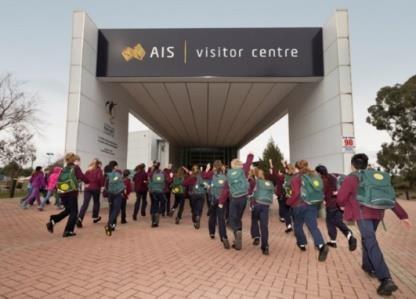
• Full allocated seating for 3,450 people, with the stage located at the far end of the room.
• End venue general admission: 4,400 seats, including assigned seating provided by both fixed and flexible seating, in addition to general enrollment on the floor
6.6.3 SPORTS VISITOR CENTRE
It's near AIS Arena's entrance and has sports mementos and exhibitions. It offers internet accessible breakaway and work areas, a box office, Atm machines, a cafeteria, and stores.
SPORTS COLISEUM Page | 93
Fig.85 spaces (Source:
Archdaily)
7. THE CRYSTAL-SPORTS AND CULTURE HOUSE, DENMARK 6.7.1 INTENT

to get an understanding of the means through which venues for sports might be given a futuristic approach in order to enhance community life and maintain cultural authenticity.
6.7.2 INTRODUCTION AND LOCATION
Fig.86 Location Map
(Source: Google Earth)
Holmbladgade in Copenhagen, Denmark is the location of this establishment. The Crystal Sport and Culture House is situated on the site of a former parking lot. This location represents the transformation of a no man's land into an identity creating and multipurpose resident's place for sports and culture. The centre creates a gathering place for the neighborhood's athletes, allowing them to find inspiration from one another while also motivating newcomers who may be interested in taking up an athletic pursuit.
SPORTS COLISEUM Page | 94
6.7.3 PLANNING LAYOUT AND SPATIAL ARRANGEMENTS
Fig.87 Floor Plans (Source: Archdaily)
Fig.88 Floor Plans (Source: Archdaily)

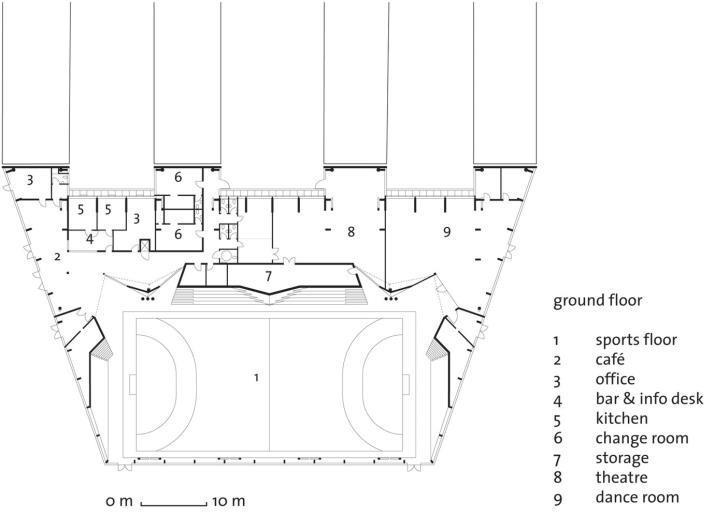
SPORTS COLISEUM Page | 95
The Crystal has a total area of 3,400 square metres, the largest portion of which is occupied by the arena, which is a large field of 20 by 40 metres. In addition to the arena, there is a cultural hall, a dance hall, a locker room, offices, and a café located at the front door. The green cover that covers the whole arena morphs into a slope with integrated seats for viewers and then into a rooftop that links to four subsidiary areas. These activities on the ground level are connected to the upper level by the green cover. The chambers underneath are hidden by the slope and the balcony.
Fig.89 Space Distribution (Source: Author)
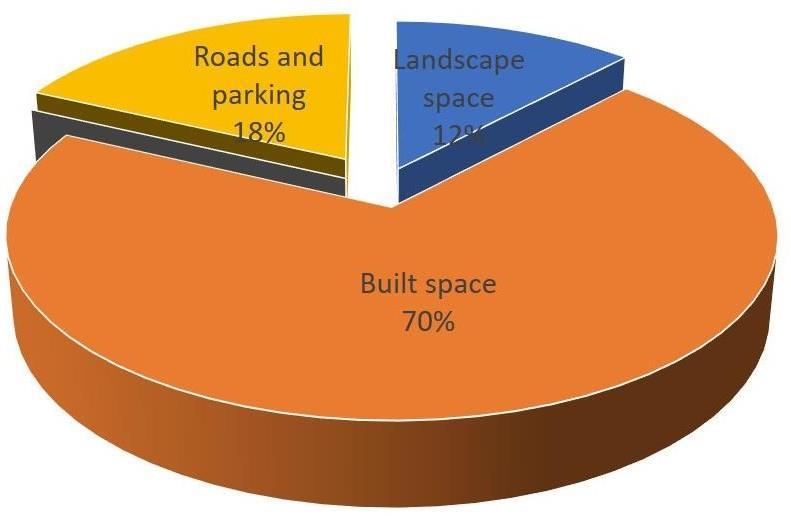
6.7.4 MATERIALS AND CONSTRUCTION
Along with wood and steel structure, translucent polycarbonate is utilised for the construction of the building's facade and roof. The material used for the exterior lets in an enormous amount of natural light while reducing glare within the building. The green soft mix elastic sports floor can be transformed into a slope and then a balcony to create an architectural feature that not only allows seats but also encourages both children and adults to play.
SPORTS COLISEUM Page | 96
8. THE ABERDEEN SPORTS VILLAGE, SCOTLAND.
6.8.1 INTENT
It has been meticulously prepared, but it also has a lot of motions and aspects that are related to playing sports and other games. The surrounding environment is given a high priority here. Within the granite setting of Aberdeen, the presence of the checkerboard pattern on the grey steel cladding serves to dematerialize the building's overall size. They wanted the east elevation, which is 210 metres long and widely visible from along the shore, to have a "dramatic, but calm" presence, so they encased the building with polycarbonate panels and painted them with colours of the sky. This achieved the desired effect.
6.8.2 INTRODUCTION AND LOCATION
Fig.90 Location Map
(Source: Google Earth)
Aberdeen Sports Village is a sports complex in Aberdeen, Scotland. The Aberdeen Sports Village is a significant athletic facility that can be found on the north eastern coast of the United Kingdom. It is constructed on a level ground that has an area of about 21,000 square metres. Reiach and Hall Architects are responsible for the design of the building.
6.8.3 OVERALL PLANNING AND DESIGN WITH RESPECT TO CONTEXT
The Aberdeen Sports Village is a venue for a variety of sports and is located in Aberdeen, Scotland. The Aberdeen Sports Village is a significant athletic facility that can be found

SPORTS COLISEUM Page | 97
along the north-eastern coast of the United Kingdom. The structure was constructed on a level lot that is about 21,000 square metres in size. The architectural firm of Reiach and Hall is responsible for the design of the building.
Fig.91 Zoomed In Location Map
(Source: Google Earth)
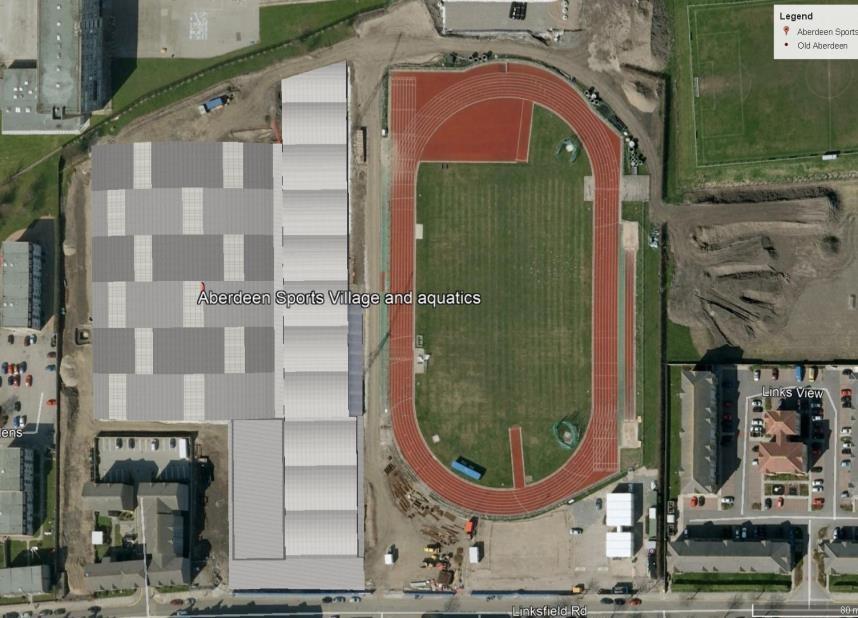
Fig.92 Floor Plan
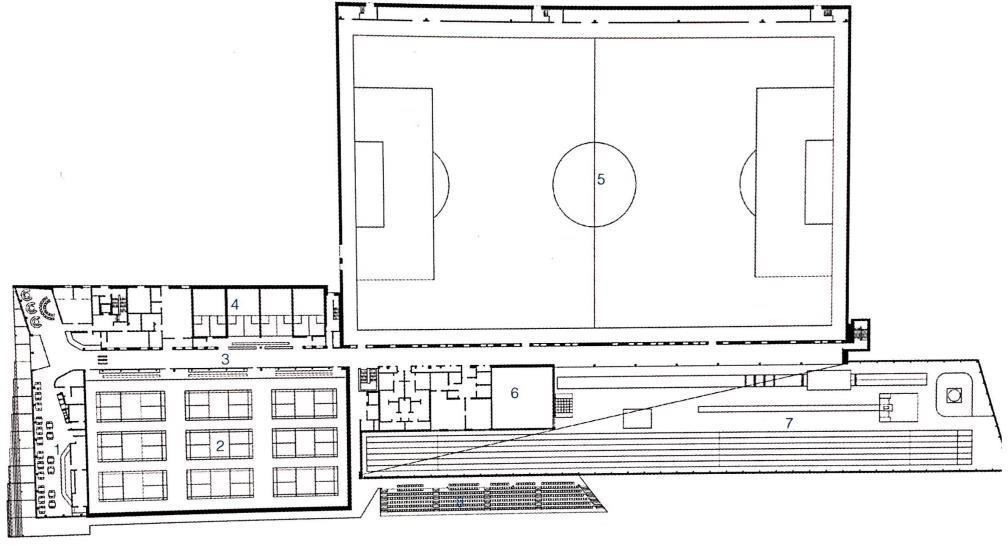
(Source: Archdaily)
The concern for context expressed by Reiach and Hall is often presented in an abstract manner. In this location, where the east elevation is 210 metres long and very visible from along the shore, they looked for a presence that was "dramatic, yet peaceful." They started with an image of the sky above the spot, then used a computer programme to isolate a strip, then extruded the strip into bands of colour. After that, they worked with Rodeca in
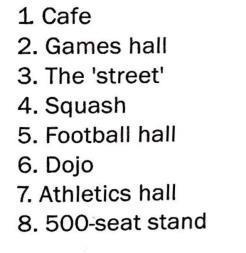
SPORTS COLISEUM Page | 98
their German facility to match the colouring by adding minute quantities of pigment. Not only on the outside, but also on the inside, where the faint colours are displayed on the monochromatic and repeating structure, the consequent ethereal blues, greys, and whites work well in indicating slight differences for the repeated façade. Within the granite setting of Aberdeen, the presence of the checkerboard pattern on the grey steel cladding serves to dematerialize the building's overall size.
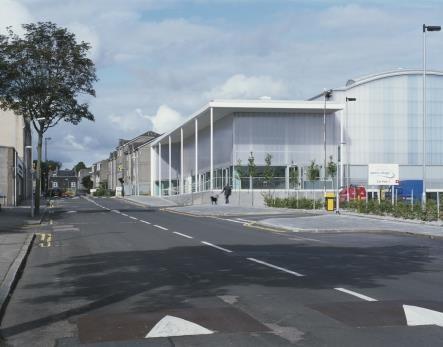
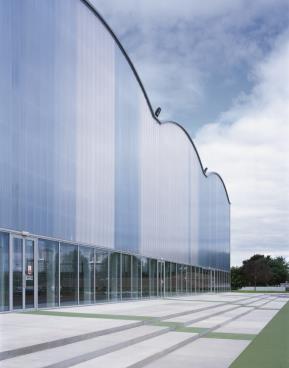
Fig.93 Spaces Images
(Source: Archdaily)
The viewing windows in the football hall are organised to resemble the teams who have won the World Cup. The flooring of the fitness suite, dancing studio, and weight lifting area is supported by a structural truss that is 104 metres long. This supports the flooring, which represents strength, while the walls and roof reflect elegance and refinement. Bright colours that are associated to sports liven up the circulation zones and make it easier for guests to find their way around the building.
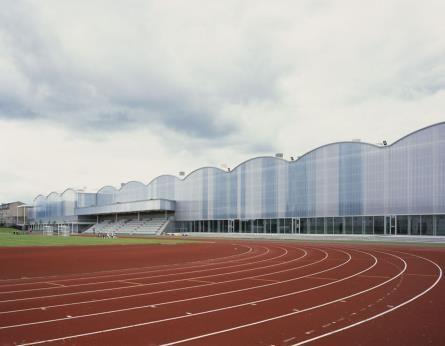
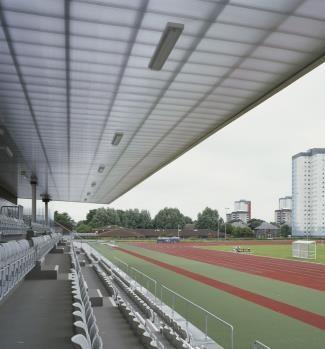
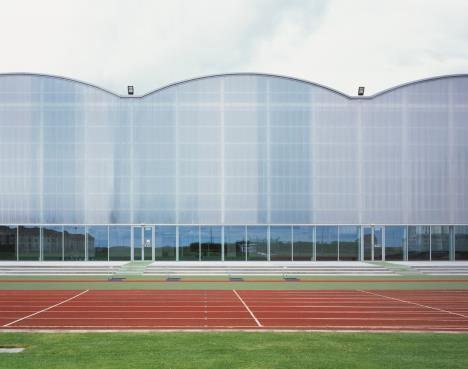

SPORTS COLISEUM Page | 99
6.2 CASE STUDY INFERENCES
1.SHREE SHIV CHHATRAPATI SPORTS COMPLEX, BALEWADI.
Balewadi is a 150 acre national sports complex.
Campus lacks cricket facilities.
The facility offers instruction from 6 am to 9 am and 3 pm to 6 pm. This batch is timed to accommodate school pupils and working people's schedules.
Only the sitting area is top closed. Open air pools.
All fields run N S.
The stadium's primary admin building is nearby.
1 automobile per 260 stadium seats is NBC's regulation.
National players and staff may stay in a large hostel distance from the sports complex during selections.
No student recreation area.
2.ARMY SPORTS INSTITUE PUNE
Both outdoor and indoor sporting facilities are included in the complex that makes up the arena. Facilities from the field of sports science, such as relaxation rooms, hydrotherapy facilities, hypoxia chambers, rehabilitation gyms, and steam rooms, are made available to athletes in order to facilitate their overall growth and development.
3.ANDHERI SPORTS CLUB
The complex has venues for national level sporting competitions. The project's Mumbai location is handy. The Athletes Village may house 500 athletes. Designed to accommodate future athletic events. Indoor and outdoor sports are separated. Landscaping is used to make the region more tranquil and interesting.
4.GOREGAON SPORTS CLUB
The study of goregaon sports club, located in a complex urban environment, showed that when designing a structure, the surrounding environment should be considered and how sports facilities can be mixed with other commercial activities so the structure is not idle when no sports activity is taking place.
5. INDIRA GANDHI SPORTS ARENA,DELHI
The sports complex comprises three primary building blocks united by an intriguing circulation system and pleasant settings. Spectators, journalists, athletes, service, operations, games families, and VIPs have separate access and exit. As needed, parking is provided. Warm up places are available. Advanced approaches lengthen structures.
6. AUSTRALIA SPORTS INSTITUTE, NEW SOUTH WALES.
The arena provides the sportsmen with a boarding facility that is very well planned.
Athletes are given access to a variety of open areas in which to warm up. The use of modern technology allows for the creation of structures with a long span. In order to facilitate simple circulation, appropriate design of vehicle and pedestrian roadways is
SPORTS COLISEUM Page | 100
carried out. Several taxi stands and bus stations are located throughout the property for visitors' convenience. Parking is made available in a variety of locations according to the requirements.
7. THE CRYSTAL-SPORTS AND CULTURE HOUSE, COPENHAGEN, DENMARK.
The arena is a stunning example of how one may reimagine the appearance of a traditional sports facility. The enhancement of the social environment is dependent on a number of factors, including athletics and cultural activities. By integrating the outside of the construction with the four existing gables on the site, considerable significance is given to the site context. This makes the extension a natural but spectacular addition and contribution to the location. It gives the impression of a protected outdoor space that is roofed in a manner that imparts a lyrical as well as an industrial tone. When it comes to designing, the context of the site is given the appropriate amount of attention.
8. BERDEEN SPORTS VILLAGE, SCOTLAND.
It has been meticulously prepared, but it also has a lot of motions and aspects that are related to playing sports and other games. The surrounding environment is given a high priority here. Within the granite setting of Aberdeen, the presence of the checkerboard pattern on the grey steel cladding serves to dematerialize the building's overall size. The east elevation is 210 metres long and extremely visible from along the shore; hence, they wanted to achieve a presence that was "dramatic, yet peaceful" by covering the building with steel panels and painting them with colours that resembled the colours of the sky.
SPORTS COLISEUM Page | 101
CASE STUDIES COMPARITIVE ANALYSIS

SPORTS COLISEUM Page | 102 6.3
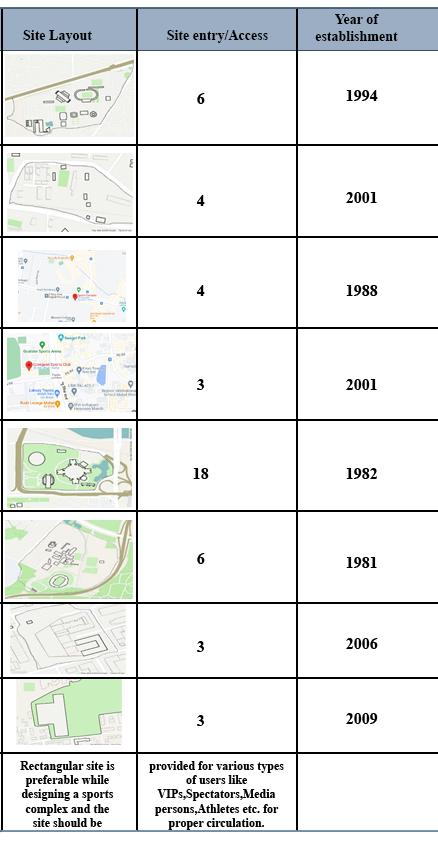
SPORTS COLISEUM Page | 103
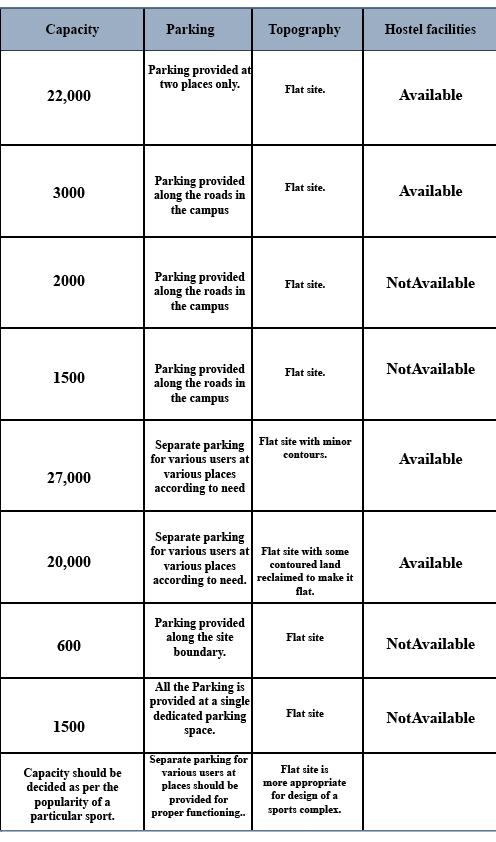
SPORTS COLISEUM Page | 104
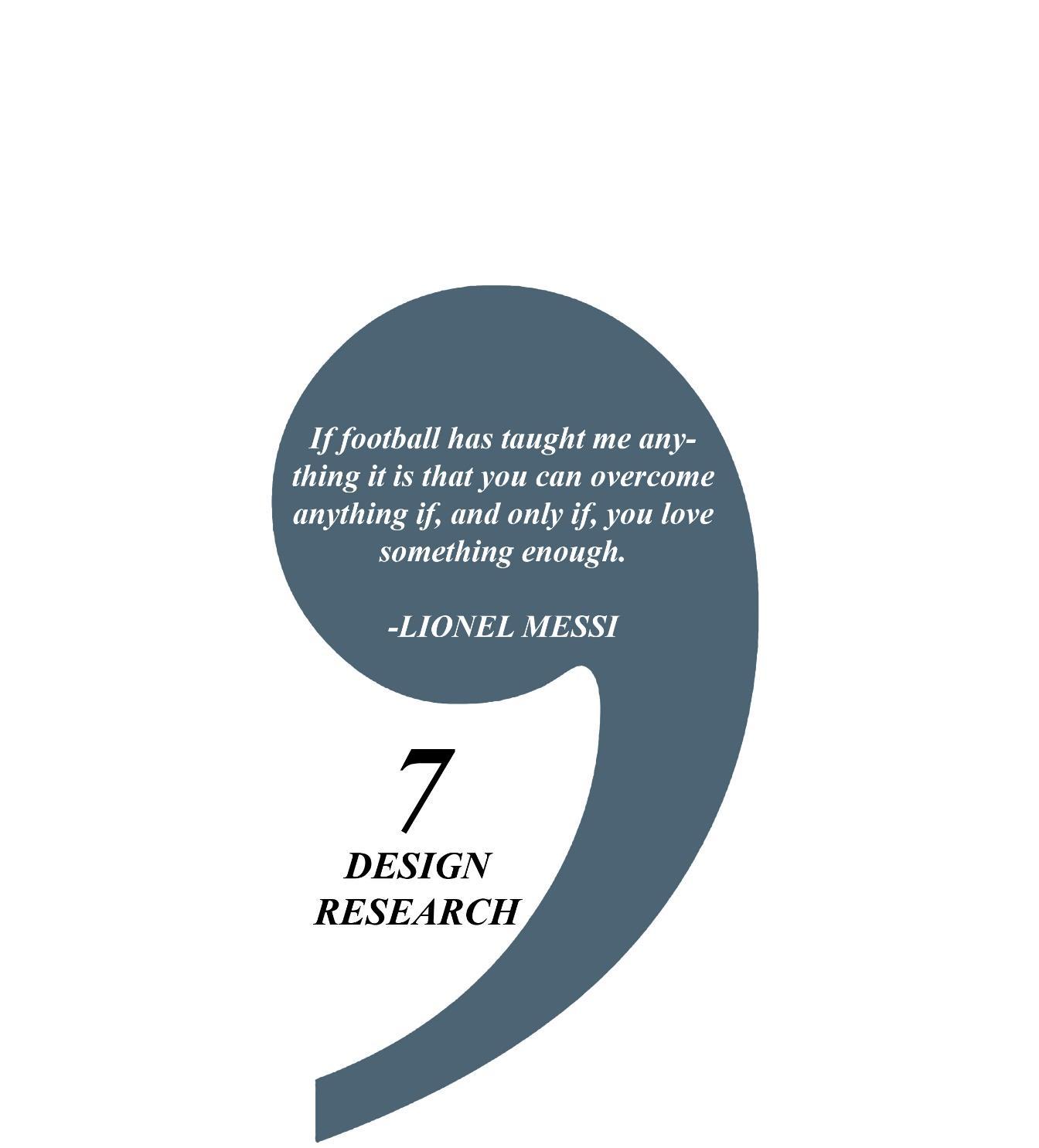
SPORTS COLISEUM Page | 105
7. DESIGN RESEARCH
7.1 STANDARDS AND DATA COLLECTION
1. DHOPKHEL
History and introduction
Dhopkhel, also transliterated dhop khel and dhoop khel (Assamese:
), is a traditional ballgame played in the Indian state of Assam.
Gameplay
The game is played between two eleven member teams on a 125 m × 80 m field bounded by four flags. The players take turns throwing the ball at the opponent to knock them out of the game, while seeking to catch the ball and evade other players..
Competitions and events
Matches of the game were traditionally made to observe the spring and New Year festival of Bihu.The game was once played to amuse Ahom royalty as a spectator sport.
Organisations involved





No proper organization is currently involved for organising the tournaments for this sport.
Playing area and equipment
consists of a 125 m × 80 m field bounded by four flags.
Dhopkhel playfield
SPORTS COLISEUM Page | 106
ঢ7ো পখেল
It
Fig.94
58.85m 7.3m 58.85 m 80m 125m
2. INSUKNAWR-
History and introduction
Insuknawr or rod pushing is an indigenous game of Mizoram. Played only by the male populationof Mizoram, Insuknawr became ' Mizo National Game ' after the Mizoram State Sports Council declared so.
Gameplay
Two players grip the rod beneath their arms like in tug of war. The rod should protrude two inchesbeneaththearmpitandalignwiththecircle's centre.Eachparticipantattemptstoforce his opponent through the rear or side of the ring. Loser if a player falls or releases Suk. No player may tug an opponent's rod to throw him off balance. An adept player may skid or slide inside the circle, but a player must be forced out to win. No player is eliminated from the round. If all three rounds are tied, a tie breaker is played until a player is eliminated.
Competitions and events
Various local competitions in Mizoram.
Organisations involved
1.Mizoram State Sports Council.
Playing area and equipment
A circle of 16 ft (4.9m) diameter with a straight Line across the circle at the center is drawn. Suk or around wooden rod or bamboo rod shall be approximately 8 ft long and 2.5 3 inches in diameter.

4.9m/16 ft
Fig.95 Insuknawr playfield
SPORTS COLISEUM Page | 107
3. YUBEE-LAKPI-
History and introduction
Manipur men play Yubee Lakpee, a popular outdoor game. Like rugby, it needs aggressive body play and stamina. In Manipuri, yubee signifies coconut and lakpee denotes snatching. It requires wrestling skill, quickness, quick reflexes, and a smart intellect. Some academics see the game as religious because it was played on the Bijoy Govinda Temple grounds on pichakari day at the house of King Ananta Shayee. On this day, a game reenacted the Hindu mythological story of the stealing of the pot of nectar after the churning of the sea.
Gameplay
The 7v7 field measures 45.72x18.29m. Starting with an oiled coconut. Both teams must hold on. Here, strength and vivacity are tested. The coconut must be held chest high. No coconuts.Players must keep the coconut and cross the opponent's goal line. Score by bringing the coconut from the front. At the goal line, players give the monarch a coconut. Winners score more goals.
Competitions and events
Local tournaments in Manipur.
Organisations involved
Local sports associations in Manipur. Playing area and equipment
It is played on a field that is 45.72 by18.29m in area. A lubricated coconut is used to play it. 3m 4.5m
18.29m
Fig. 96 Yubee Lakpi playfield

SPORTS COLISEUM Page | 108
1. ATHLETICS
Data For Track Events various depending on the form of play:


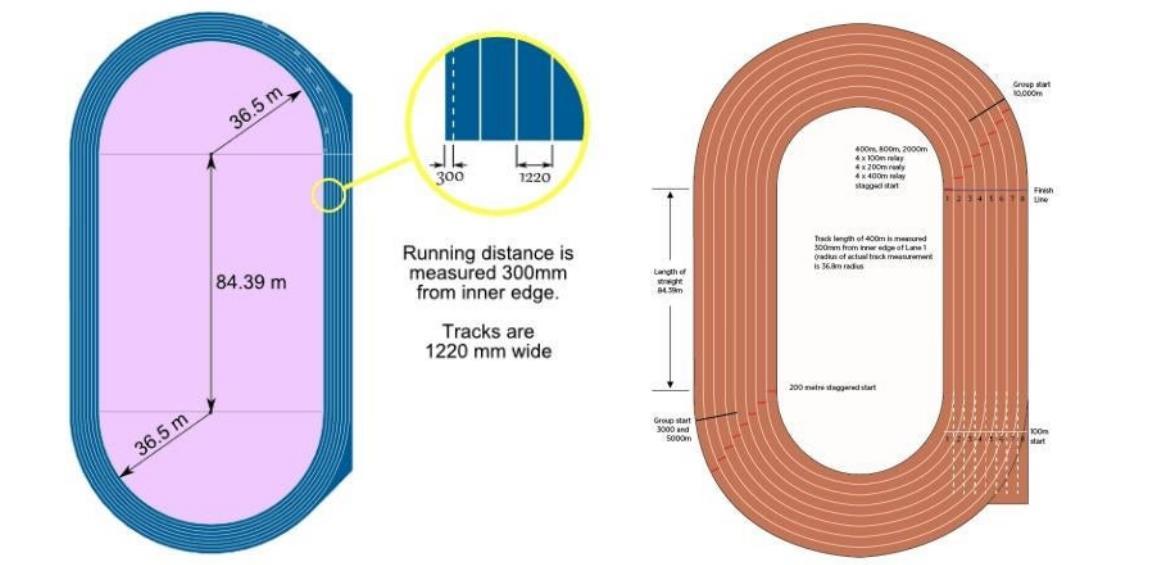
Various Track Events played are:
Fig.97 Athletic Playfield
SPORTS COLISEUM Page | 109
2. ARCHERY
Fig.98 Archery Playfield

SPORTS COLISEUM Page | 110
WRESTLING
4. WEIGHT LIFTING
Wrestling Playfield
Playfield
5. Multipurpose Ground
Standard competition layout
This diagram below the layout recommended by the IAAF as Standard Competition Area.
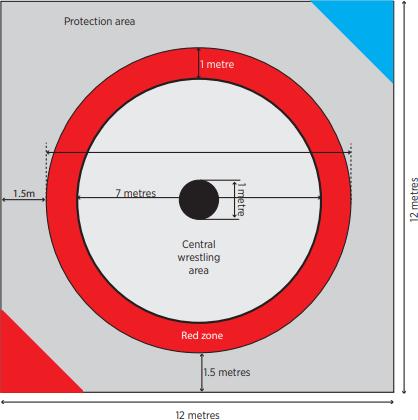
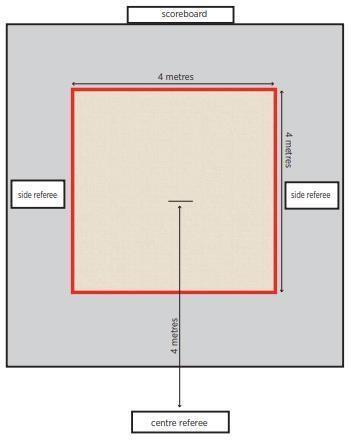
SPORTS COLISEUM Page | 111 3.
Fig.99
Fig.100 Weightlifting
The field events are evenly distributed over the arena to avoid congestion and to satisfy the needs of the spectators. This layout avoids undue disruption of events by ceremonies and counterbalances the concentration of interest in the finish area.
Fig.101 Multipurpose Playfield
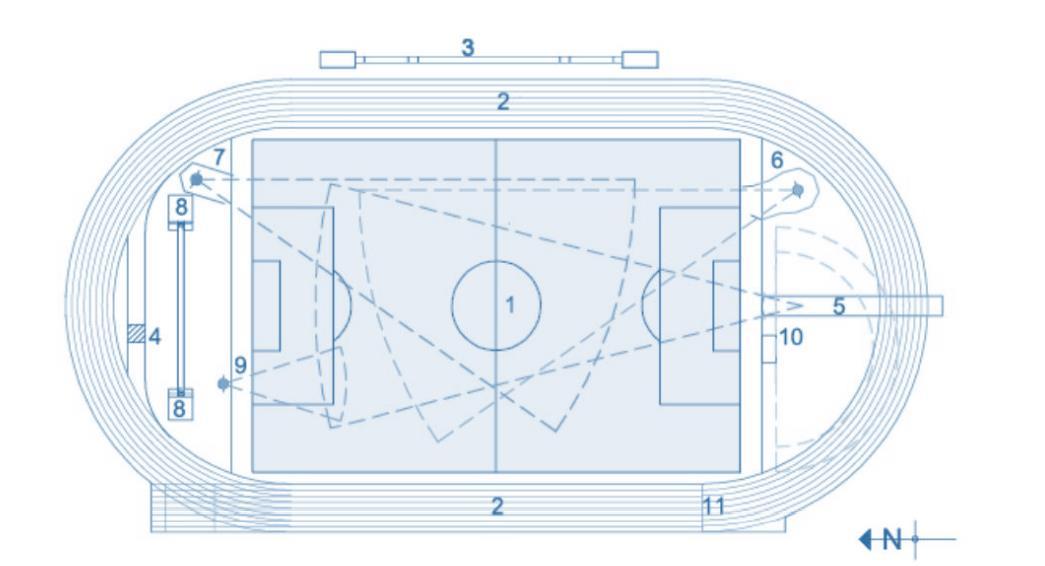
SPORTS COLISEUM Page | 112
1 Footbal pitch 2 Standard Track 3 Long and Triple Jump facility 4 Water jump 5 Javelin Throw facility 6 Discus and Hammer Throw facility 7 Discus Throw facility 8 Pole Vault facility 9 Shot Put facility 10 High Jump facility 11 Finish line
400m standard track
The400m StandardTrack (theTrack)has straight and curved sections ofalmost equal length and uniform bends which are most suitable to the running rhythm of athletes. Furthermore, the area inside the track is large enough to accommodate all throwing events and also a standard football (soccer) pitch (68m x 105m).
The Track comprises 2 semicircles, each with a radius of 36.50m, which are joined by two straights, each 84.39m in length.
The Track has 8, 6 or occasionally 4 lanes but the last is not used for international running competition. All lanes have a width of 1.22m ± 0.01m.
Page 35 of the manual setting out the 400m standard Track section 2.2.1 shows in detail the setting out plan and dimensions of the 400m standard track.
Marking of the 400m standard track
All track markings must be in accordance with the IAAF 400m Standard Track Marking Plan (Figure 2.2.1.6a attached in the manual).
All lanes are marked by white lines. The line on the right hand side of each lane, in the direction of running, is included in the measurement of the width of each lane.
All start lines (except for curved start lines) and the finish line are marked at right angles to the lane lines.
Immediately before the finish line, the lanes are marked with numbers with a minimum height of 0.50m.
All markings are 0.05m wide.
All distances are measured in a clockwise direction from the edge of the finish line nearer to the start to the edge of the start line farther from the finish.
The data for staggered starts for the Track (constant lane width of 1.22m) is shown in the table below.

SPORTS COLISEUM Page | 113
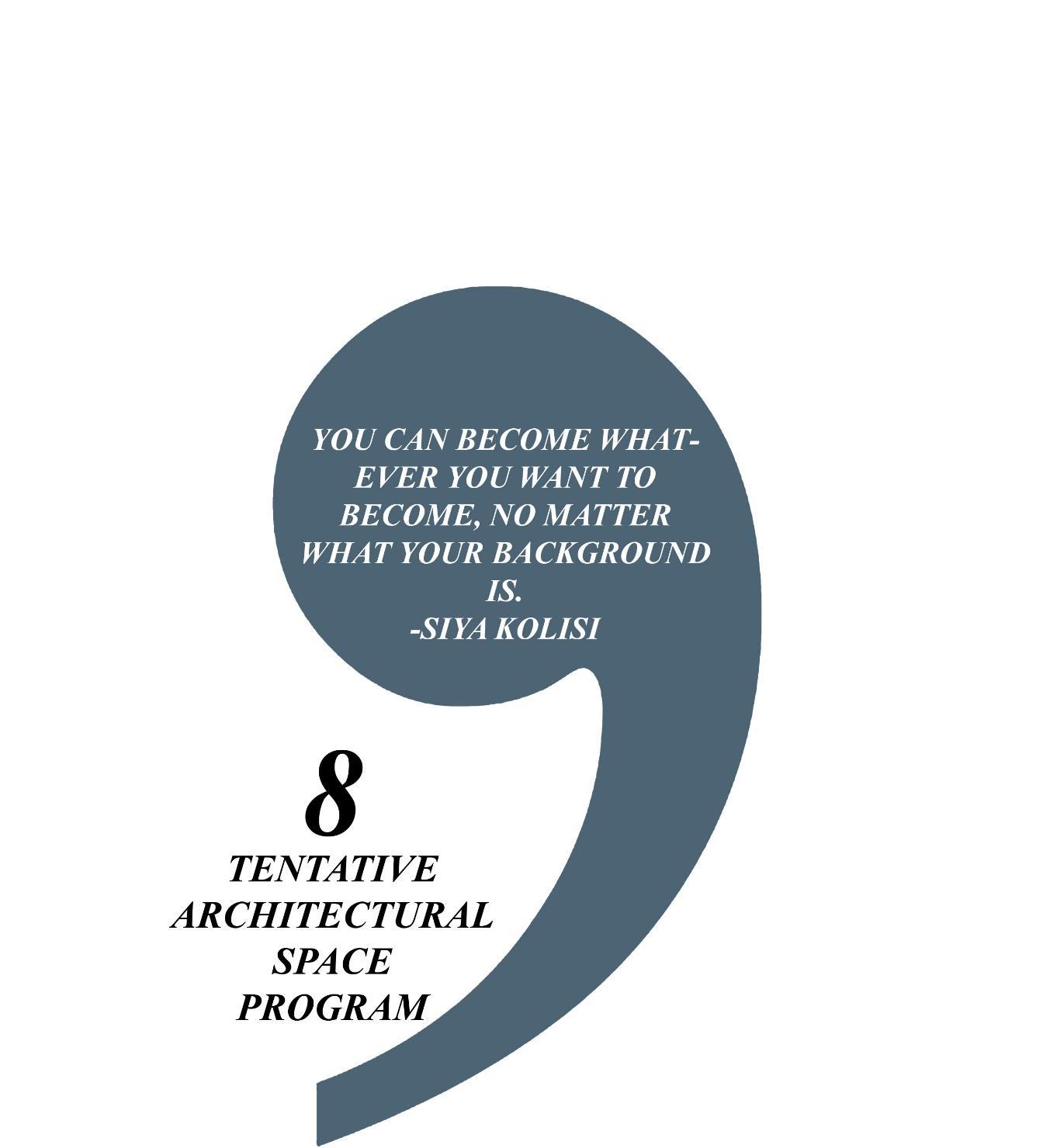
SPORTS COLISEUM Page | 114
8. TENTATIVE ARCHITECTURAL SPACE PROGRAM
INSTITUTIONAL BLOCK

SPORTS COLISEUM Page | 115
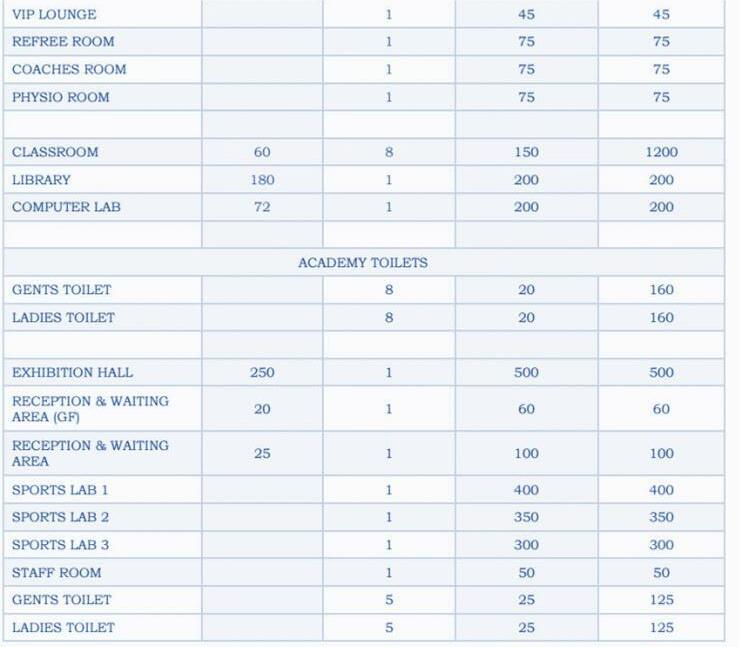
SPORTS COLISEUM Page | 116
FOOTBALL & ATHLETIC STADIA

SWIMMING AREA
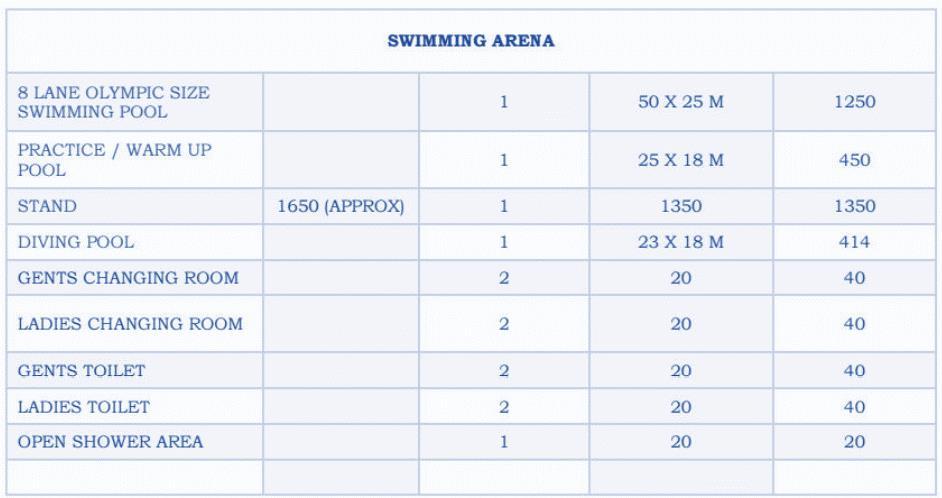
SPORTS COLISEUM Page | 117
INDOOR SPORTS AREA
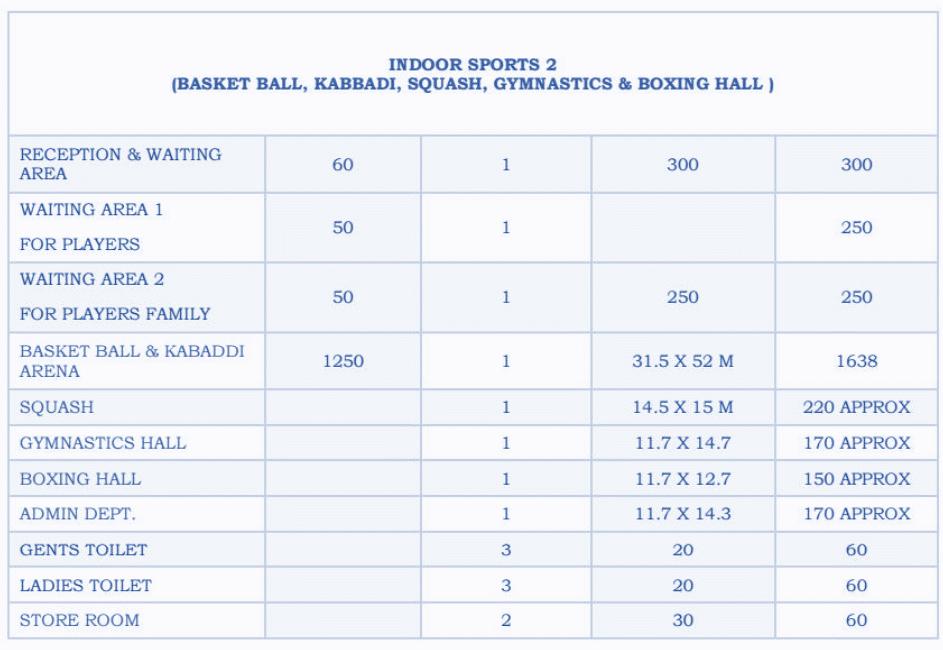

SPORTS COLISEUM Page | 118
HOSTEL BLOCK
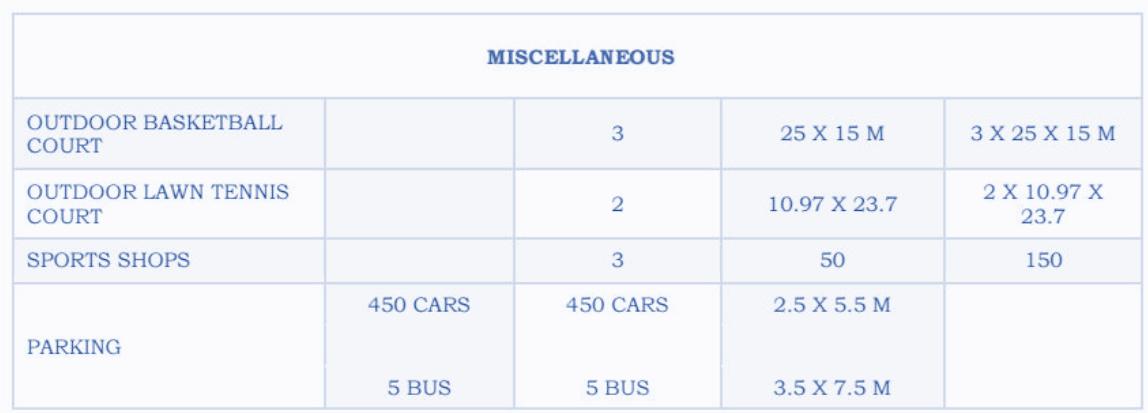
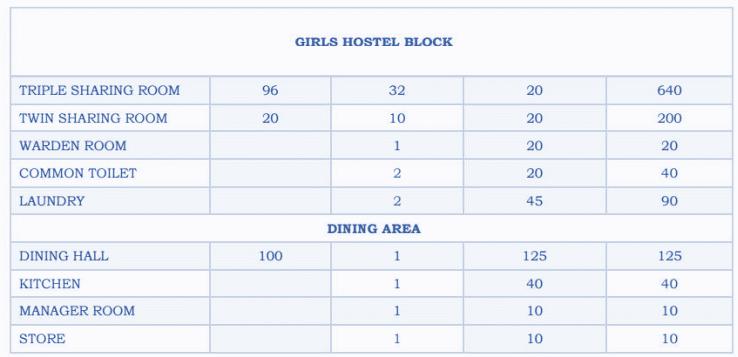


SPORTS COLISEUM Page | 119

SPORTS COLISEUM Page | 120
9. SITE SELECTION AND JUSTIFICATION
POSSIBLE PROPOSED SITES
Fig.102 Sports Tender (Source: Assam Pwd)

SPORTS COLISEUM Page | 121
9.SITE SELECTION AND JUSTIFICATION
9.1 ABOUT ASSAM
In order to keep up with one's fitness and have a healthy life, participation in sports is an absolutely necessary component. Aside from the obvious health benefits, participating in sports also helps to strengthen your mental fortitude.
Participating in sports helps cultivate a sense of team spirit and teaches individuals how to maintain a healthy balance of optimism and despair in their lives. Sports offer energy and inner strength.
9.2 WHY ASSAM?
An growing sports hub that doesn’t have much sports facilities and is located in an area that features prospective users and a sports culture that might contribute to the promotion of traditional sports.Assam receives a significant number of sponsorships from major corporations and other organisations in the public sector, which are beneficial to the state's efforts to encourage more people to participate in sports and other forms of physical activity across the state.
9.3 LOCATION
The proposed site is located in FC8F+6MQ Sarihatuli sports complex, Nalbari, Assam 781341
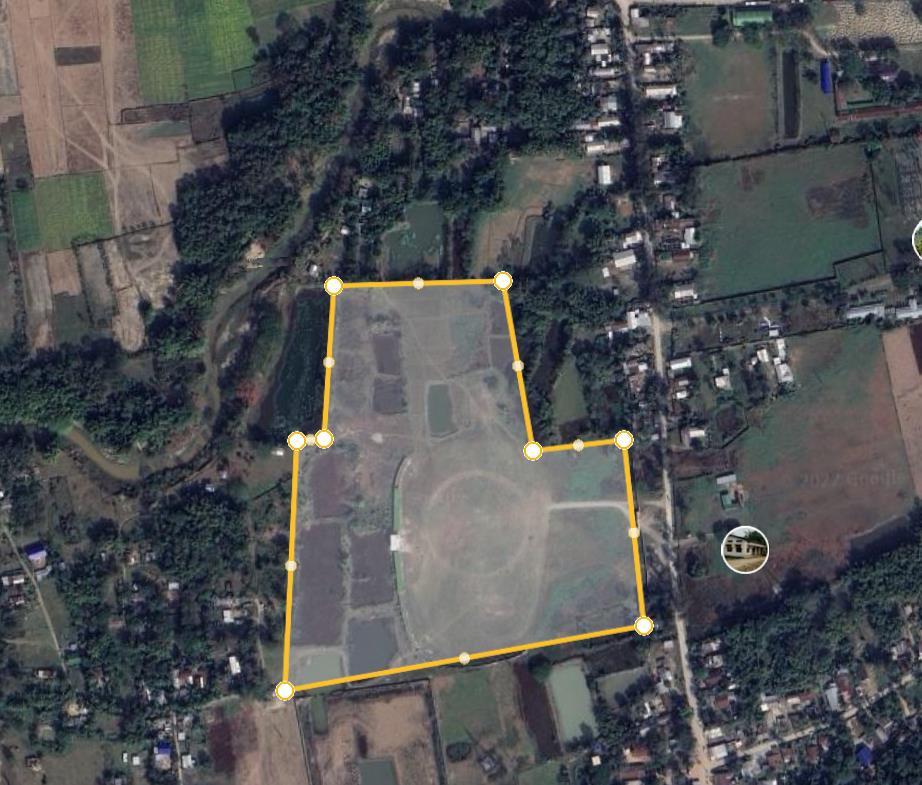
Location Map
Google Earth)
TOTAL AREA OF THIS GROUND IS 72,372.14 m² (17.8 ACRE)
SPORTS COLISEUM Page | 122
Fig.103
(Source:
THE
SITE AREA
9.5 CLIENT
GOVERNMENT OF ASSAM
9.6 SITE JUSTIFICATION
Guwahati, Jorhat, Saboti, and Nalbari are just few of the locations in the state of Assam that are slated to get one of the nine new sports facilities that are scheduled to be constructed by the Assam Development Authority. This would result in a considerable improvement to the current sporting facilities in the state. This complex will be situated in the nalbari neighbourhood when it is finished. The screening committee has granted the go ahead for only one of them, and because construction work has already started, it will be completed in around two years' time. There are just a few specialised sports complexes accessible in the Nalbari neighbourhood of the city. Therefore, it is quite obvious that the Nalbari sub city is expanding as a sports centre, which will serve to nurture diverse sports talent across the city as well as in neighbouring states. This will serve to promote various sports talent throughout the city and in neighbouring states. This is the logical conclusion that can be taken from the discussion that was just given. As a result, it would be a fantastic decision for the project to choose a location in a place where the sports culture already exists. This would be the most ideal circumstance. One of the benefits of deciding to conduct the research at a location in this region is that it will be much simpler for the researcher to raise young people's awareness of traditional sports in an area where a sporting culture already exists, as opposed to starting from scratch in a location where there are no potential users available at all. This is one of the reasons why the location of the research project should be in this area. The researcher has the option of selecting a location in this area. Additionally, Assam, which is the most populous state in the north eastern region of India and which can be quickly reached by athletes coming from any of the other states in the region using any of the available modes of transportation, would serve to increase awareness of these sports on a global scale. This would be beneficial for the growth of the industry as a whole.
SPORTS COLISEUM Page | 123 9.4
17.8 ACRE (72,372.14 m²).
9.7 PROPOSED LAND USE
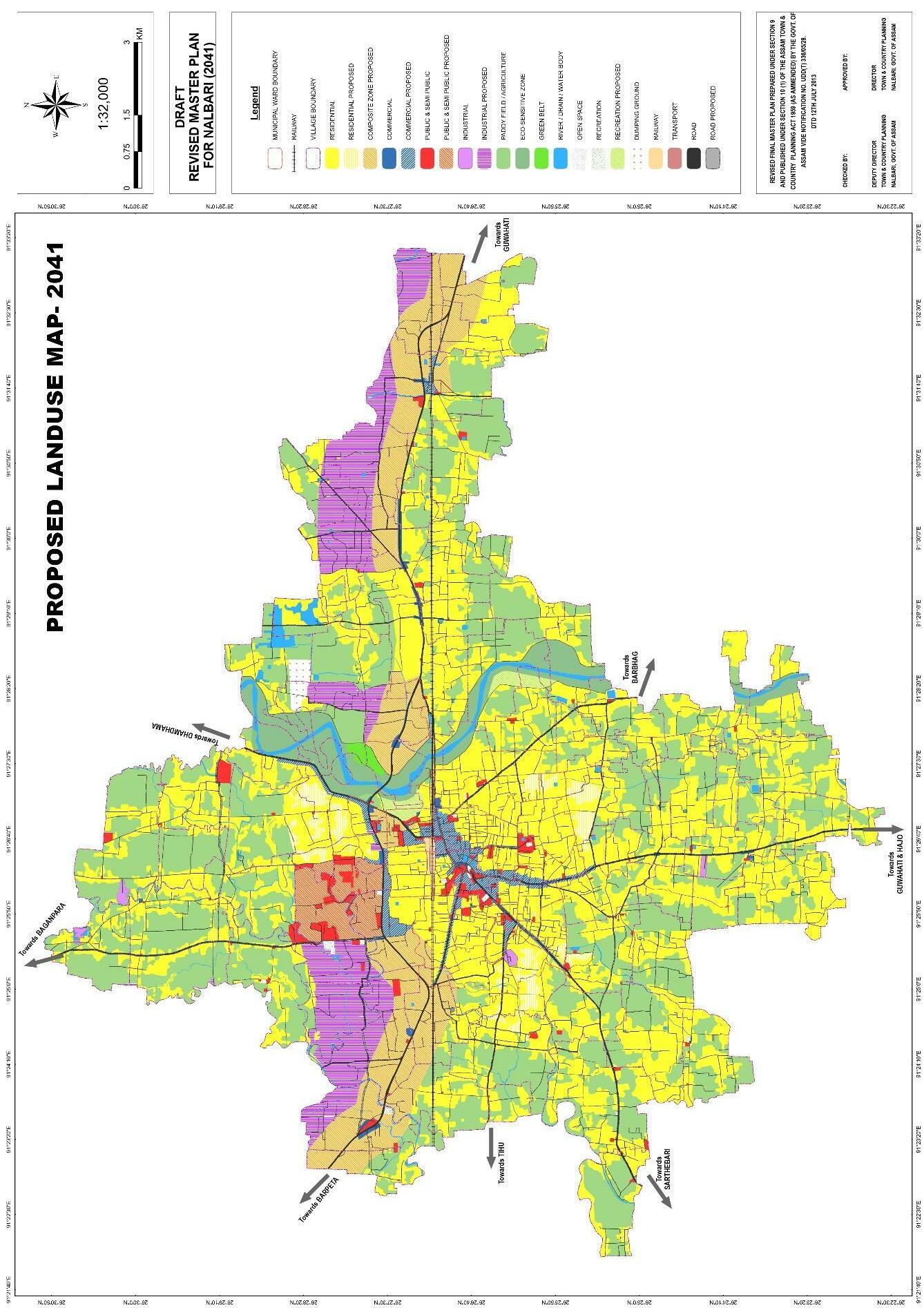
SPORTS COLISEUM Page | 124
10. DESIGN BRIEF
The following design methods, which will be followed throughout the design process, have been selected on the basis of the inferences and conclusions drawn from the research data and case studies that have been gathered.
1. VERNACULAR CONTEMPORARY MIXEDDESIGN APPROACH:
By analysing local architecture and environment, the shape will follow indigenous (or modified) building methods while remaining minimalist. The shape will be an innovative modern design based on traditional design and building processes, giving it a tribal aspect. Existing architecture will be streamlined, and features will be focused on necessity and function, not simply aesthetics. The shape will reflect the place's history and techniques.
2. LOCAL MATERIALS:
Local resources and the environment determine shape. Local materials link users to nature. Due to regional climate, the material will endure longer. B To lessen carbon footprint, far flung materials will be avoided.
3. CLIMATIC CONDITIONS:
The design will use climate sustainable concepts due to harsh winters and summers. With less power, the design will emphasise natural light and airflow.
4. MINIMAL SITE NATURAL IMPACT:
The design will preserve natural characteristics. The design strives to create areas with minimal building consequences by employing natural site elements like trees as buffers and maintaining the built unbuilt link. Topography organized.
SPORTS COLISEUM Page | 125
11. BIBLOGRAPHY.
Venugopal, Vasudha. “Dd: Modi Government to Promote Traditional Sports the Economic Times.” The Economic Times, economictimes.indiatimes.com/modi govts 3rd year bash to promote traditional sports/articleshow/58740711.cms?from=mdr. Accessed 18 Oct. 2022.
“Indian Traditional Sports Statistics Google Search.” Indian Traditional Sports Statistics Google Search, www.google.com/search?q=indian+traditional+sports+statistics&tbm=isch&ved=2ahUKE wiCkofFltP5AhUvkNgFHZ5IAvQQ2-. Accessed 18 Oct. 2022.
“Tableau of Youth Affairs and Sports Ministry Adjudged Best Among All Ministries.” Tableau of Youth Affairs & Sports Ministry Adjudged Best Among All Ministries, pib.gov.in/Pressreleaseshare.aspx?PRID=1518027. Accessed 18 Oct. 2022.
“Khelo India #SaathMeinHainHum.” Khelo India, kheloindia.gov.in/tenders. Accessed 18 Oct. 2022.
“Rural and Indigenous/TribalGamesNamelyMallakhamb, Kalaripayattu,Gatka,Thang Ta, Yogasana and Silambam Have Been Identified Under ‘Promotion of Rural and Indigenous/Tribal Games’ Component of Khelo India Scheme: Shri Anurag Thakur.” Rural and Indigenous/Tribal Games Namely Mallakhamb, Kalaripayattu, Gatka, Thang Ta, Yogasana and Silambam Have Been Identified Under ‘Promotion of Rural and Indigenous/Tribal Games’ Component of Khelo India Scheme: Shri Anurag Thakur, pib.gov.in/PressReleaseIframePage.aspx?PRID=1845122. Accessed 18 Oct. 2022.
“Promote Traditional Sports, Indian Culture in Higher Educational Institutions: Governor to V Cs Hindustan Times.” Hindustan Times, 2 June 2022, www.hindustantimes.com/cities/lucknow news/promote traditional sports indian culture in higher educational institutions governor to vcs 101654196775999.html.
MEDIA, CWA NEW. “A Survey of Our Indian Students’ Favourite Sports / Our Changing Indian Heritage / Schools’ Stories / Home Living Heritage.” A Survey of Our Indian Students’ Favourite Sports / Our Changing Indian Heritage / Schools’ Stories / Home Living Heritage, www.livingheritage.org.nz/Schools Stories/Our Changing Indian Heritage/A-survey-of-our-Indian-Students-favourite-sports. Accessed 18 Oct. 2022.
“Has India Always Had a Strong Sporting Culture?” The Wire, thewire.in/sport/has india always had a strong sporting culture. Accessed 18 Oct. 2022.
“Modi Govt at 8 Years: The Rise and Rise of Sports in India | Other News India TV.” Modi Govt at 8 Years: The Rise and Rise of Sports in India | Other News India TV, 25 May2022,
SPORTS COLISEUM Page | 126
www.indiatvnews.com/sports/other/modi-govt-at-8-years-the-rise-and-rise-of-sports-inindia 2022 05 25 779273.
“Construction of Proposed District Sports Stadium C..., Guwahati, Assam Tender.” TendersOnTime, www.tendersontime.com/india/details/construction proposed district sports stadium complex sariahtalinalbari district assam under nida 3edaa2c. Accessed 18 Oct. 2022.
““Nallbari Master Plan Report | Nalbari District | Government of Assam, India.” Nallbari Master Plan Report | Nalbari District | Government of Assam, India, 4 Apr. 2019, nalbari.gov.in/frontimpotentdata/nallbari-master-plan-report.
“These Are New Hubs on India’s Sports Map | India News Times of India.” The Times of India, timesofindia.indiatimes.com/india/these are new hubs on indias sports map/articleshow/84819275.cms. Accessed 18 Oct. 2022.
Network, KreedOn. “Sports in India History | Facts | Players | Traditional Indian Sport.” Voice of Indian Sports KreedOn, 4 Nov. 2016, www.kreedon.com/sports in india history.
Buchholz, Katharina. “Infographic: The Sports Seen Most Positively in India.” Statista Infographics, 2 Feb. 2021, www.statista.com/chart/24077/attitudes towards sports leagues events india.
“Construction of Proposed District Sports Stadium C..., Guwahati, Assam Tender.” TendersOnTime, www.tendersontime.com/india/details/construction proposed district sports stadium complex sariahtalinalbari district assam under nida 3edaa2c. Accessed 18 Oct. 2022.
“Seven Sisters of India Complete Information About North East India States Deepstash.” Deepstash, deepstash.com/article/76610/seven sisters of india complete information about north east india states#idea=102209. Accessed 18 Oct. 2022.
“Home | Nalbari District | Government of Assam, India.” Home | Nalbari District | Government of Assam, India, 4 Apr. 2019, nalbari.gov.in.
“Indian Medal Winners List in Birmingham Commonwealth Games 2022 myKhel.com.” Mykhelcom, www.mykhel.com/commonwealth games 2022 india medal winners list. Accessed 18 Oct. 2022.
SPORTS COLISEUM Page | 127
11. LIST OF FIGURES
Fig.1 Indian Sports (Source: 123rf Photos)…………………………………………….
Fig.2 Sports Played In India (Source : Khelo India Illustration)…………………..
Fig.3 History Of Indian Sports (Source Kreed On Sports In India)………………..
Fig.4 Ancient Sports Played In India (Source Kreed On Sports In India)………..
Fig.5 mindmap (Source author)………………………………………………………..
Fig.6 Physical Activity Map (Source Author)………………………………………..
Fig.7 Communicating Through Sports (Source: Sports Rec)………………………
Fig.8 Imerging Athletes Fron India (Source: Khelo India)
Fig.9 Before Independence Sporting Events (Source: Sportzpoint)
Fig.10 Graph Showing Influencing Factors For Sports Programme (Source: Pwc Survey)
Fig.11 Thang Ta Sport (Source: Hindustan Time)
Fig.12 Khomlainai Sport ( Source: Hindustan Time)
Fig.13 Timeline Of Commonwealth Winners History (Source: Author)
Fig.14 Timeline Of Commonwealth Winners History (Source: Author)
FIG.15 Connectivity Between Sports,Architecture And Culture (Source: Author)
FIG.16 Research Process Chart (Source: Author)
Fig.17 Modi Ji On Promoting Traditional Sports (Source: Times Of India, May 27,2018)
Fig.18 Modi Ji On Promoting Traditional Sports (Source: The Economic Times, May 19,2017)
Fig19. Modi Ji On Promoting Traditional Sports (Source: Press Information Bureau, Government of India Ministry of Youth Affairs and Sports.)
Fig.20 3d View Of The Complex
(Source:Https://En.Wikipedia.Org/Wiki/Shreeshivchhatrapatisportscomplex)
Fig.21 Location Map (Source: Google Maps)
Fig.22 Proximity Chart (Source: Author)
Fig.23 site plam (Source: Https://En.Wikipedia.Org/Wiki/Shreeshivchhatrapatisportscomplex)
Fig.24 Zoning Layout (Source: Https://En.Wikipedia.Org/Wiki/Shreeshivchhatrapatisportscomplex)
Fig.25 Circulation layout (Source: Https://En.Wikipedia.Org/Wiki/Shreeshivchhatrapatisportscomplex)
Fig.27 Https://En.Wikipedia.Org/Wiki/Shreeshivchhatrapatisportscomplex)
Fig.28Https://En.Wikipedia.Org/Wiki/Shreeshivchhatrapatisportscomplex)
Fig.29Https://En.Wikipedia.Org/Wiki/Shreeshivchhatrapatisportscomplex)
Fig.30Https://En.Wikipedia.Org/Wiki/Shreeshivchhatrapatisportscomplex)
Fig.31 Https://En.Wikipedia.Org/Wiki/Shreeshivchhatrapatisportscomplex)
SPORTS COLISEUM Page | 128
Fig.32 Https://En.Wikipedia.Org/Wiki/Shreeshivchhatrapatisportscomplex)
Fig.33 Https://En.Wikipedia.Org/Wiki/Shreeshivchhatrapatisportscomplex)
Fig.34Https://En.Wikipedia.Org/Wiki/Shreeshivchhatrapatisportscomplex)
Fig.35Https://En.Wikipedia.Org/Wiki/Shreeshivchhatrapatisportscomplex)
Fig.36Https://En.Wikipedia.Org/Wiki/Shreeshivchhatrapatisportscomplex)
Fig.37Https://En.Wikipedia.Org/Wiki/Shreeshivchhatrapatisportscomplex)
Fig.38Https://En.Wikipedia.Org/Wiki/Shreeshivchhatrapatisportscomplex)
Fig.39Https://En.Wikipedia.Org/Wiki/Shreeshivchhatrapatisportscomplex)
Fig.40Https://En.Wikipedia.Org/Wiki/Shreeshivchhatrapatisportscomplex)
Fig.41Https://En.Wikipedia.Org/Wiki/Shreeshivchhatrapatisportscomplex)
Fig.42Https://En.Wikipedia.Org/Wiki/Shreeshivchhatrapatisportscomplex)
Fig.43Https://En.Wikipedia.Org/Wiki/Shreeshivchhatrapatisportscomplex)
Fig.44Https://En.Wikipedia.Org/Wiki/Shreeshivchhatrapatisportscomplex)
Fig.45Https://En.Wikipedia.Org/Wiki/Shreeshivchhatrapatisportscomplex)
Fig.46Https://En.Wikipedia.Org/Wiki/Shreeshivchhatrapatisportscomplex)
Fig.47Https://En.Wikipedia.Org/Wiki/Shreeshivchhatrapatisportscomplex)
Fig.48 Author
Fig.49 Location Map (Source: Google Earth)
Fig. 50 site Area Analysis (Source: Author)
Fig. 51 Site Area Analysis (Source: Http://Www.Armysportsinstitute.Com)
Fig.52 Overall Site View (Source Http://Www.Armysportsinstitute.Com)
Fig.53 Master Plan (Source: Author)
Fig.54 Circulation Map (Source: Andheri Complex Website)
Fig.55 Source: https://en.wikipedia.org/wiki/Andheri_Sports_Complex
Fig.56 Source: https://en.wikipedia.org/wiki/Andheri_Sports_Complex
Fig.57 Source: https://en.wikipedia.org/wiki/Andheri_Sports_Complex
Fig.58 Source: https://en.wikipedia.org/wiki/Andheri_Sports_Complex
Fig.59 Source: https://en.wikipedia.org/wiki/Andheri_Sports_Complex
Fig.60 Source: https://en.wikipedia.org/wiki/Andheri_Sports_Complex
Fi.61 Source: https://en.wikipedia.org/wiki/Andheri_Sports_Complex
Fig.62 Source: https://en.wikipedia.org/wiki/Andheri_Sports_Complex
Fig.63 Source: https://en.wikipedia.org/wiki/Andheri_Sports_Complex
Fig.64 Source: https://en.wikipedia.org/wiki/Andheri_Sports_Complex
Fig.65 Source: https://en.wikipedia.org/wiki/Andheri_Sports_Complex
Fig.66 Source: https://en.wikipedia.org/wiki/Andheri_Sports_Complex
Fig.67 Source: https://en.wikipedia.org/wiki/Andheri_Sports_Complex
Fig.68 Source: https://en.wikipedia.org/wiki/Andheri_Sports_Complex
Fig.69 Source: https://en.wikipedia.org/wiki/Andheri_Sports_Complex
Fig.70 Source: https://en.wikipedia.org/wiki/Andheri_Sports_Complex
Fig.71 Location (Source: Google Map)
Fig.72 Space Program (Source: Author)
Fig.73 Floor Plans (Source: Author)
Fig.74 Floor Plans (Source: Author)
Fig.75 Location Map (Source: Location Map Google Maps)
SPORTS COLISEUM Page | 129
Fig.76 Floor Plan (Source: Archdaily)
Fig.77 zoning (Source: Archdaily)
Fig.78 Section (Source: Archdaily)
Fig.79 spaces (Source: Archdaily)
Fig.80 spaces (Source: Archdaily)
Fig.81 Location Map (Source: Google Earth)
Fig.82 Floor Plan (Source: Archdaily)
Fig.83 Area Analysis (Source: Author)
Fig.84 spaces (Source: Archdaily)
Fig.85 spaces (Source: Archdaily)
Fig.86 Location Map (Source: Google Earth)
Fig.87 Floor Plans (Source: Archdaily)
Fig.88 Floor Plans (Source: Archdaily)
Fig.89 Space Distribution (Source: Author)
Fig.90 Location Map (Source: Google Earth)
Fig.91 Zoomed In Location Map (Source: Google Earth)
Fig.92 Floor Plan (Source: Archdaily)
Fig.93 Spaces Images (Source: Archdaily)
Fig.94 Dhopkhel playfield
Fig.95 Insuknawr playfield
Fig. 96 Yubee Lakpi playfield
Fig.97 Athletic Playfield
Fig.98 Archery Playfield
Fig.99 Wrestling Playfield
Fig.100 Weightlifting Playfield
Fig.101 Multipurpose Playfield
Fig.102 Sports Tender (Source: Assam Pwd)
Fig.103 Location Map (Source: Google Earth)
SPORTS COLISEUM Page | 130
 By TEHREEM SHAIKH MOHD YUNUS 17AR33
By TEHREEM SHAIKH MOHD YUNUS 17AR33












 (Source: Author)
(Source: Author)

 (Source: Khelo India)
(Source: Khelo India)















 SOURCE AUTHOR
SOURCE AUTHOR





































































































































